Pocket Bravery
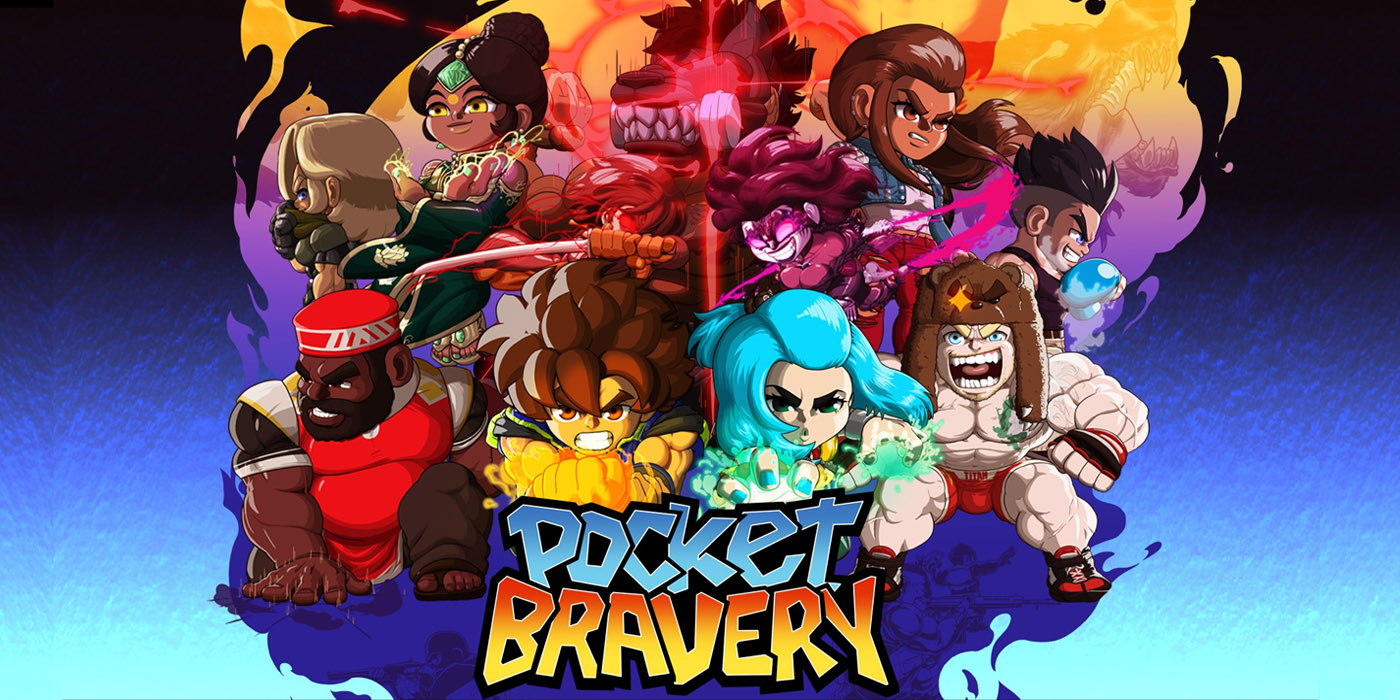

In my youth (yes, I was young once), I was a pretty big Street Fighter 2 guy. One of my earliest gaming memories was throwing pound coins into the arcade cab at the local fairground with wanton abandon, trying to master all of the moves laid out on the control panel, looking on, doe-eyed, at the older kids who could rattle off move after move with ruthless precision. I’d eventually get the console version and play the hell out of it, and would maintain a certain fondness for fighting games that lasts even to this day. Enter: Pocket Bravery, an indie project from South American developers, Statera Studios – striding out as a fresh competitor in the fighting game arena, and I was keen to see if it had what it takes to mix it up with the big boys.
Honestly, in the early goings, the answer to that is a pretty resounding ‘Yeah, it can hang alright!’ I think fighting games benefit from having an ‘easy to play but difficult to master’ feel, and by going with a traditional control scheme and familiar fighting styles, Pocket Bravery invites just about everyone to snatch up a controller and give it a go. There are move lists available, of course, but I initially just went through my repertoire of SFII button combos and came across a good percentage of the moves as I went. Now, that’s not to say this approach made me any good at Pocket Bravery, because that would be a flat out lie – I was getting pretty heavily mauled by the CPU early on, but I enjoyed that old fashioned ‘Hold on, let me figure out my moves’ thing we all used to do as kids, despite getting consistently hammered.
At A Glance
| POCKET BRAVERY | |
| Positives | + Slick, combo-building action + Nostalgic Neo Geo-inspired visuals + Great tutorial and combo improvement sections |
| Negatives | – PC online player count almost non-existent – Story Mode isn’t very engaging – I found the controls a little tricky (but I do suck, so…) |
| Overall | 6 /10 |
| Played On | PC |
| Also Available On | Nintendo Switch, PS5, PS4, Xbox Series X|S, Xbox One |
| Find out about our scoring policy here. | |
So what makes Pocket Bravery different from other fighting games out there? In a world of super high-definition graphics, I point to the throw-you-all-the-way-back-like-a-German-suplex visuals, where the 2D pixel art style knocks you straight into the 90’s, to the heyday of 2D fighting games like The King of Fighters and Fatal Fury. Not content with the nostalgia offered by their graphical design choice, Statera Studios decided to kick it into overdrive by portraying their characters in a certain chibi style that *screams* Neo Geo Pocket, elevating what would be a decent looking game up to another tier entirely – at least for an old fogey like me. While the arenas might not be quite so impressive, this is definitely made up for by the character and effects animations, which I think are just wonderful.
There are tonnes of game modes available, including the standard Arcade, Versus, Online and Training, as well as some fun alternatives like Survival, where you battle fighters until you drop, or Trials, where you have to pull off increasingly difficult combos with your chosen fighter – a handy training tool as well as a cool challenge. I was also excited to see that the game boasted a Story Mode, which is something I often think is sorely lacking in fighting games. As it turns out though, it’s less of a game mode and more of a story, where you click through page after page of comic book interactions between the characters with only morsels of in-game action in between. It’s a shame that there isn’t a better mix of story and gameplay, as I quite enjoyed getting to know the characters and understanding their relationships, but needed the engagement of more full scale battles to help keep me locked in.
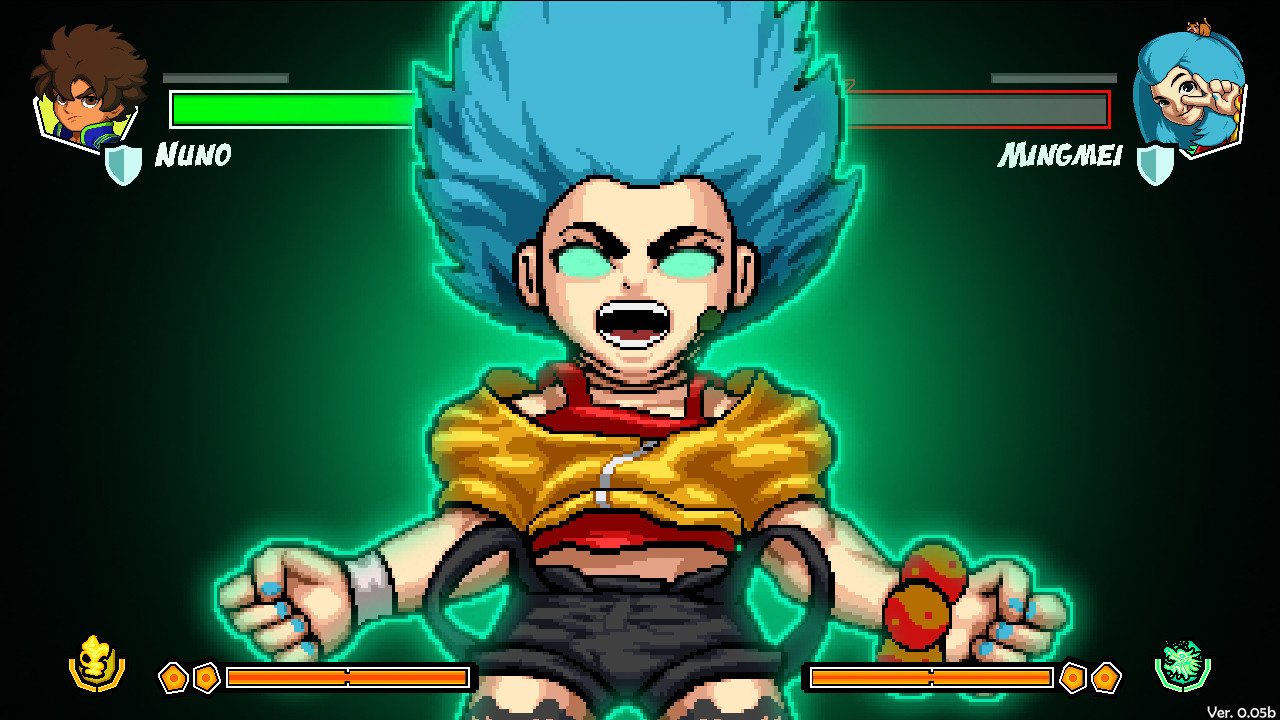
To Statera Studios credit, they have done a wonderful job of catering to fighting fans of all levels, with a tutorial that covers everything you need to know about not just Pocket Bravery, but fighting games in general. Fresh out of the box newbies are walked through the basic controls, various buttons and special moves, before moving on to the more game-specific mechanics like elemental attacks and super special moves. And if you still haven’t had your fill of learning and want to ingratiate yourself a little deeper into fighting game culture, there’s a fantastic overview of various terms and techniques that separate the dirty casuals from the sweaty pros. I had no real existing knowledge about cancel attacks or input delay (and honestly, I still don’t entirely get it all), but Pocket Bravery does a great job at offering insight that players wishing to dedicate themselves to the genre would find incredibly helpful. And for those players who are already custom joystick-wielding aficionados, the practice modes have all the togglable bells and whistles to let you understand the hit boxes, your active and cooldown frames, and all that other wizardry that makes you so horribly unbeatable.
One of the major downfalls of older fighting games offering only couch co-op is that when only one player owns the game, the other player stands absolutely zero chance, usually sapping the fun from the experience. Fast forward to 2024 though and online play offers a much more level field for players, opening up the opportunity to battle folks of every ability level instead of just whipping your buddies over and over again. But this is where the long term prospects of Pocket Bravery takes a nosedive I’m afraid, as I struggled to find many bouts at all, and even that smattering were against players on far-and-away international servers. Taking a peek at the handy Steam Charts, I was saddened to find there’s only a handful of concurrent players (on PC, at least), severely hampering the appeal for more serious fight players who need at least a healthy online community to compete against.
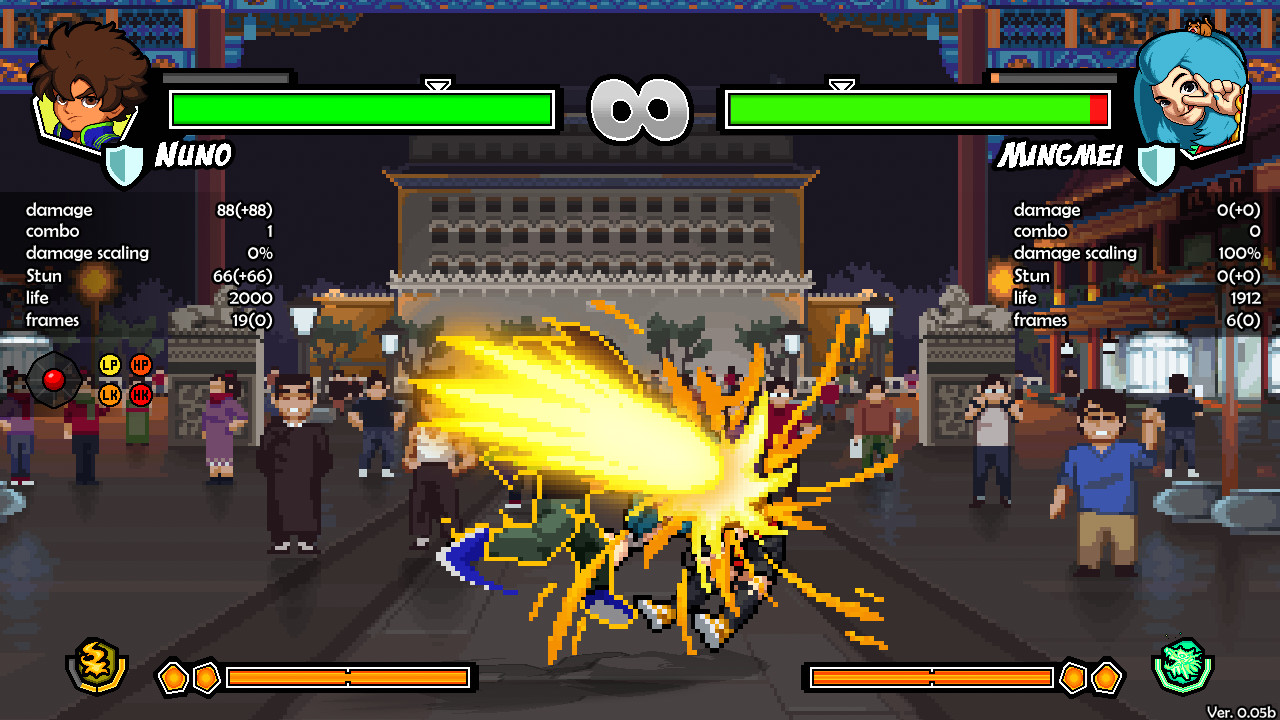
I’m a always a little wary of character design in ‘world warrior’ type fighting games, where combatants are often boiled down to a collection of national stereotypes, and while Pocket Bravery does more than a little of this, I’m willing to give it a pass since the whole game is essentially an homage to the games of yesteryear which unashamedly started the tradition. The characters in Pocket Bravery each have an element assigned to them which they can unleash upon their opponents as part of their elemental and super special moves. From the main protagonist, Nuno, a quite literally fiery and proud fighter from Brazil, to the hulking Russian wrestler (sound familiar?) Arshavin, or Sebastian, the Scottish boxer with the powers of ice, there’s some really fun characters to battle with.
One of the standouts is Ximena, a bombshell sporting Dia de los Muertos make-up and wielding the powers of the underworld from the streets of Mexico – yes, it’s pretty tropey, but she comes across as a total badass. Make no bones about the coolest character though, as the main antagonist, Hector Alvarez, absolutely steals the show. With a snarling grin, broad mohawk, combat pants and boots, rippling with muscles from head to toe, he looks every inch the bad guy who’s ready to stave your head in. He’s portrayed as a suitably horrible dude in the story, but man, he is one cool SOB – even more so when he’s wearing his awesome hound respirator mask and unleashing purple fire all over the place.
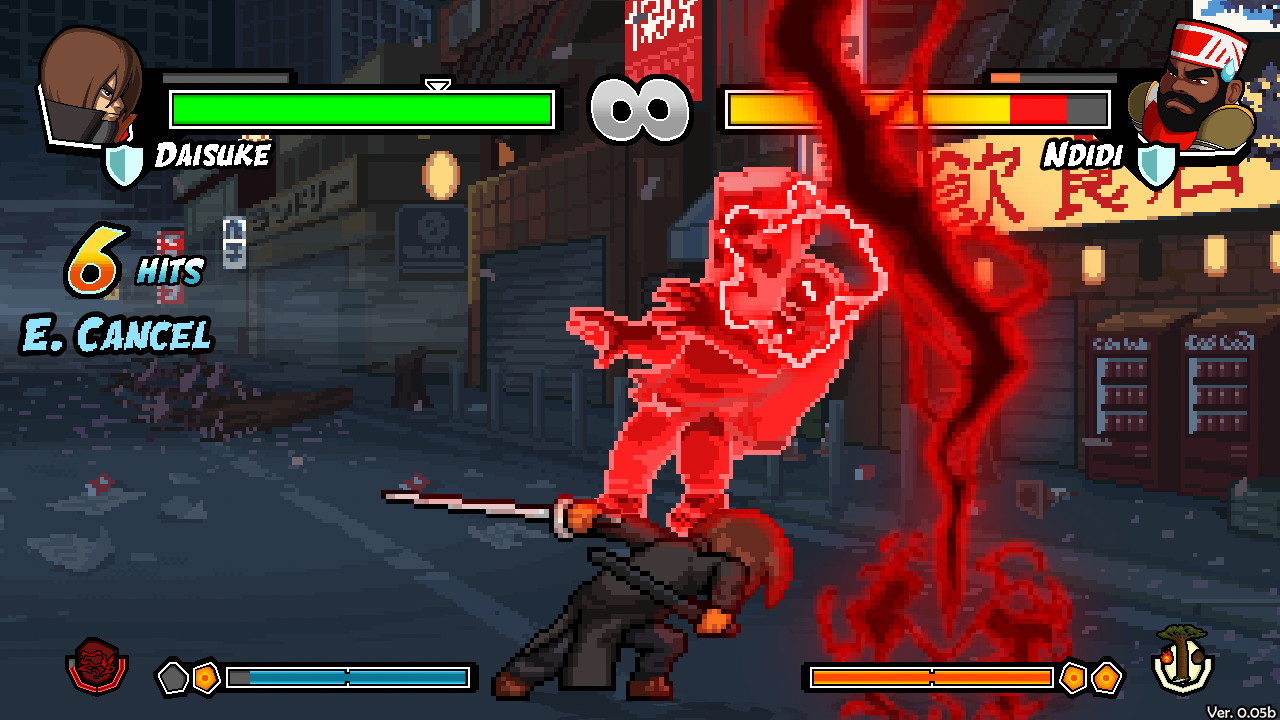
I thought the soundtrack to Pocket Bravery sounded really well produced, and brings a real level of polish to the title that can sometimes be missing from smaller indie projects. Laden with punchy guitar riffs and blistering solos, it’s exactly what a fighting game needs. The main theme, ‘Bravura na Alma’ by Miura Jam, is particularly cool and very fitting – a power metal epic oozing with emotive tones that’ll get you fired up to take on all comers and knock out the competition. It’s not all axe shredding though – there’s some fun variety added for the character themes, which again lean into the traditional music styles of the characters home nation. I dare say that I enjoyed the soundtrack even more when I listened to it back on Spotify while typing up my review – it has a few really catchy tunes that I would strongly recommend for those who like to listen to metal and/or video game music.
Pocket Bravery charges into an arena full of heavyweights and manages to land a few convincing blows, proving there is room for the little guy in the land of the giants. The Neo Geo-inspired visuals sock you in the mouth as soon as the bell rings, and the soundtrack and character design land as a flurry of blows throughout too. There’s an impressive number of modes to entertain a single player, including a wonderful tutorial and training mode, but sadly, you may be hard pressed to find any folks to play with online, which severely hampers the long term appeal and hurts my willingness to recommend it, in spite of all positives. Ultimately, Pocket Bravery can’t lift the championship belt, but boy, does it land a few haymakers along the way.
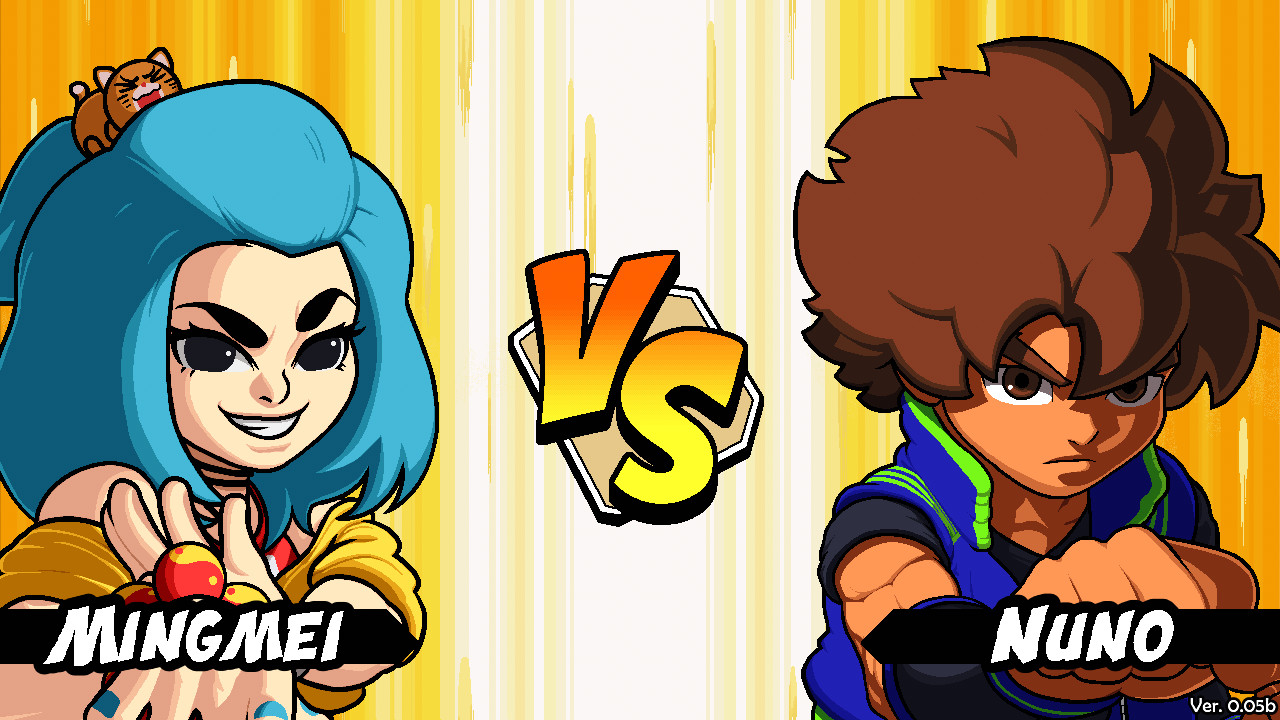
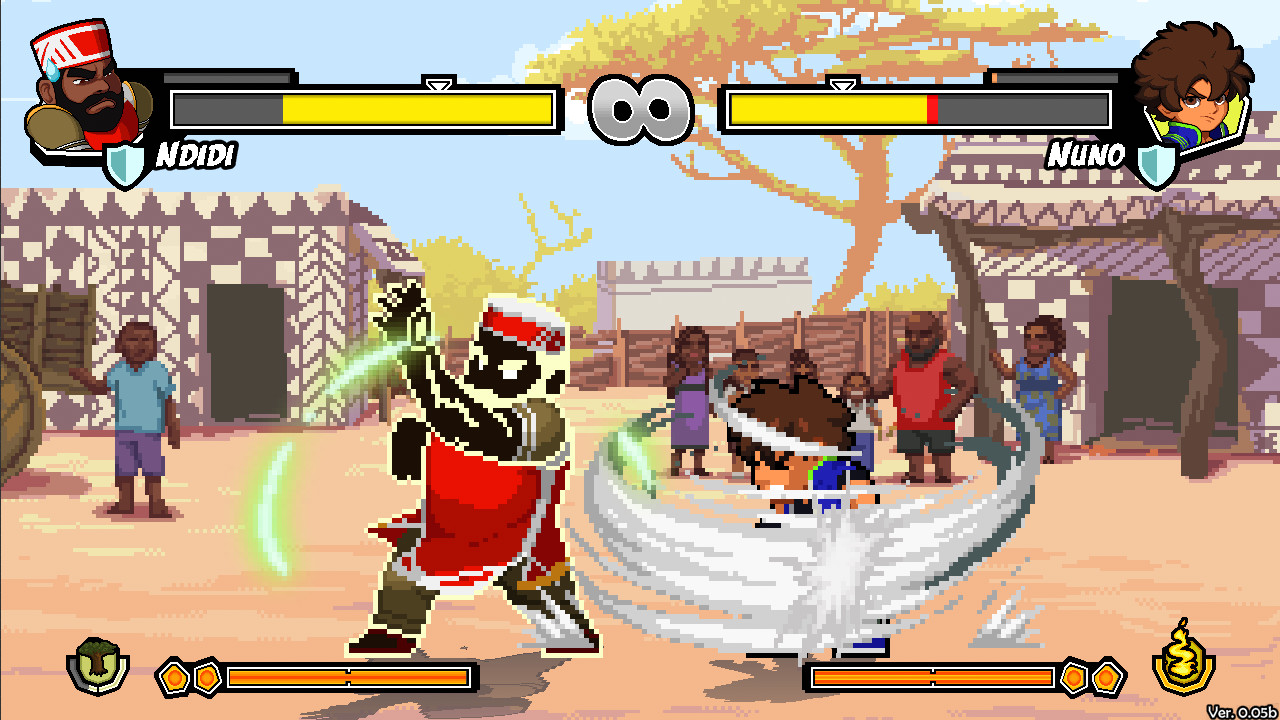
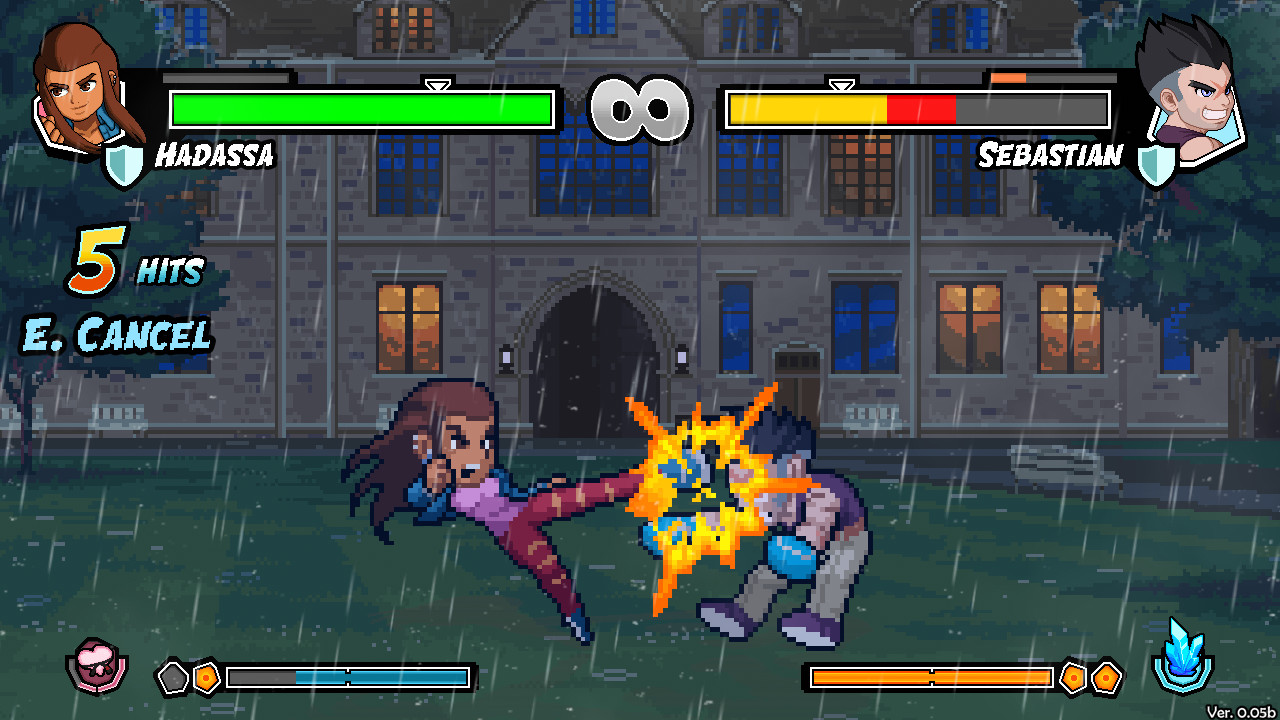
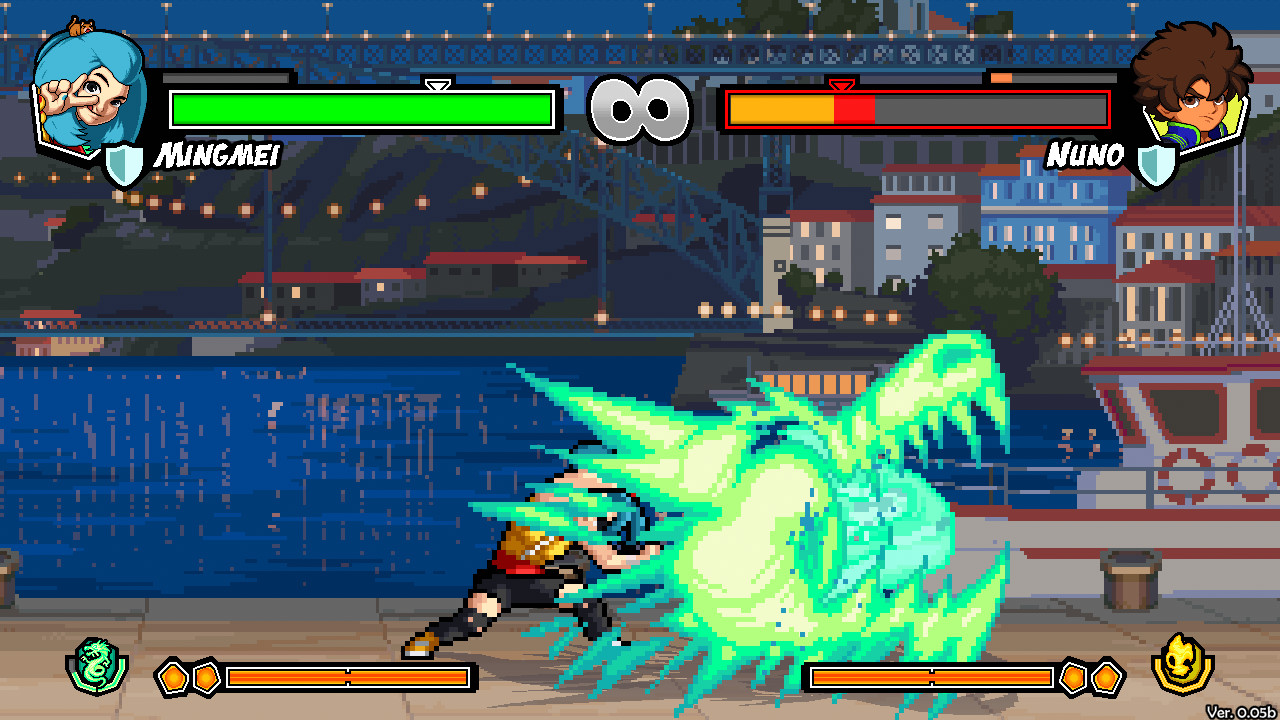
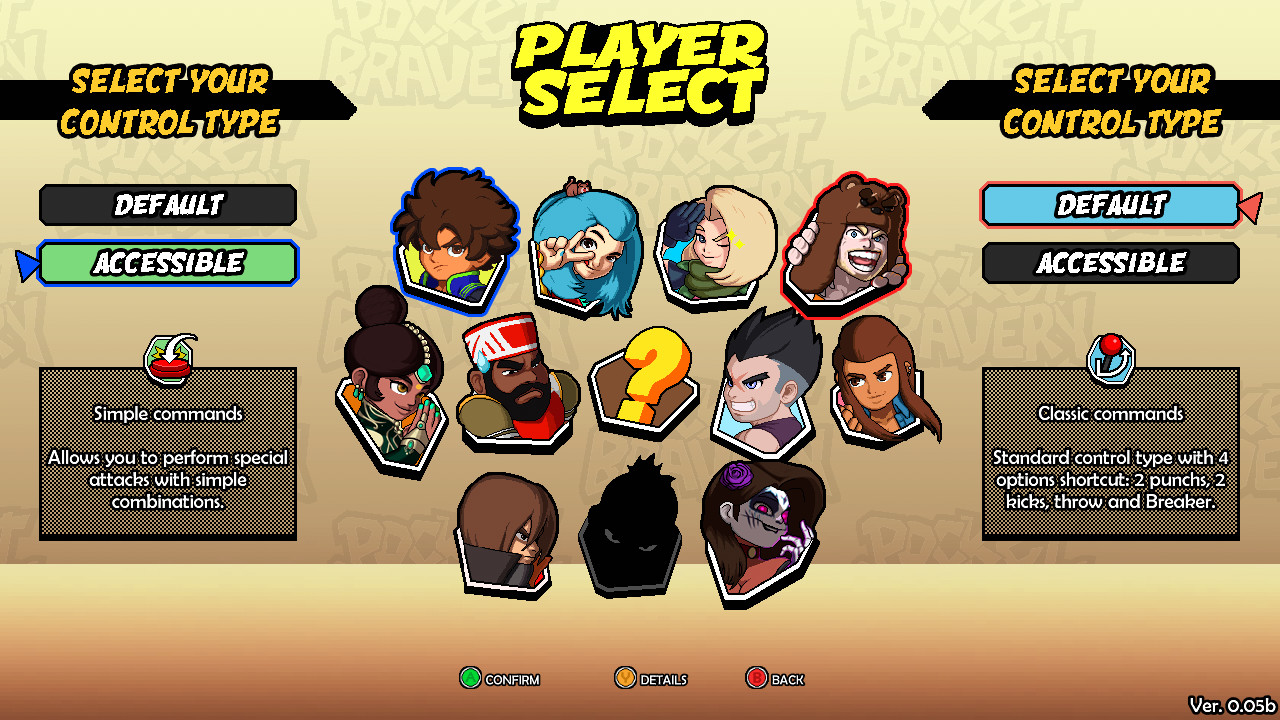
In the interest of full disclosure, VGamingNews was provided with a copy of the game in order to conduct this review.
Thanks for taking the time to read our review. If you’d like to support us further, please consider buying us a coffee!
We Were Here Expeditions: The FriendShip
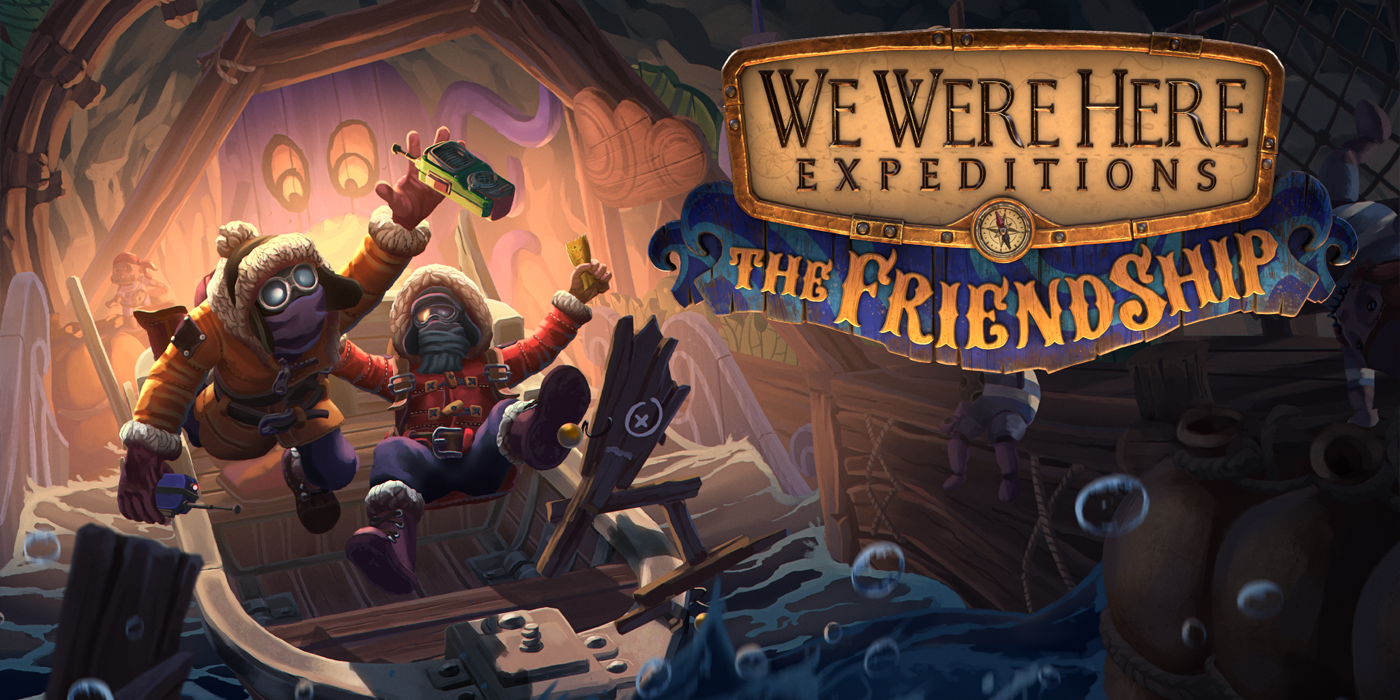

We’re suckers for a good puzzle game here at VGamingNews, and absolutely crazy about an escape room. So it will come as no surprise that one of our favourite (and most highly rated) games of 2022 was Total Mayhem Games asymmetric puzzler, We Were Here Forever. Imagine our excitement then, when we got word that a surprise installment in the We Were Here series was shadow dropping at WASD x IGN! Keen to jump aboard The FriendShip for ourselves, Gaz and I dusted off the walkie-talkies and threw on our arctic exploration gear, ready for a new puzzle filled adventure!
At A Glance
| WE WERE HERE EXPEDITIONS: THE FRIENDSHIP | |
| Positives | + Good mix of well designed puzzles + Fantastic setting and execution + Excellent taster of a brilliant series |
| Negatives | – Some very minor lagging issues – Short run time just makes us want more! |
| Overall | 9 /10 |
| Played On | PC |
| Also Available On | PS5, PS4, Xbox Series X|S, Xbox One |
Diving right into We Were Here Expeditions: The FriendShip, new players are immediately given an idea of what the series is all about, and returning fans will feel right at home too. Players reprise their roles as the anonymous Explorers, clad in heavy snow coats and goggles, and armed with naught but their wits and a pair of walkie-talkies. We join our intrepid pair as they attempt to steer their tiny boat through tumultuous waters, tracking a distress call to a long lost island. When they finally reach land, they discover a ramshackle and forgotten theme park, offering the two pals the chance to test their companionship aboard the titular FriendShip.
You’ll explore the island together before eventually being separated, offering each adventurer a unique experience and requiring players to work together to solve the challenges of the theme park. Staying true to the We Were Here series, The FriendShip is an asymmetric puzzle game where players can only communicate using their walkie-talkies, having to describe both what they can see and what they need to their partner. Players each have half of the pieces required to solve each puzzle, and The FriendShip will test both your communication skills and your patience in your partner before all is said and done!
Total Mayhem Games stick to their guns from a visual point of view, offering the same visual style that has served the series so well. The graphical depiction of the We Were Here series is in perfect synergy its storytelling and its gameplay – there’s a certain chunkiness to the designs that ooze ‘fun’, and a bright colour palette that catches the eye, harkening back to childhood playfulness and playground squabbles. There are some unnerving elements about the environments though, impressing upon you that you’re exploring the forgotten corners of the world, never knowing what you might encounter next. Most impressively though, even more than its predecessor, The FriendShip is laser focussed on its theme, and never wavers in offering players the best dilapidated theme park experience of their lives. Much as we did when playing We Were Here Forever, Gaz and I fawned over the art style, taking great pleasure in picking out and sharing the fun and flavourful details dotted throughout the environments.
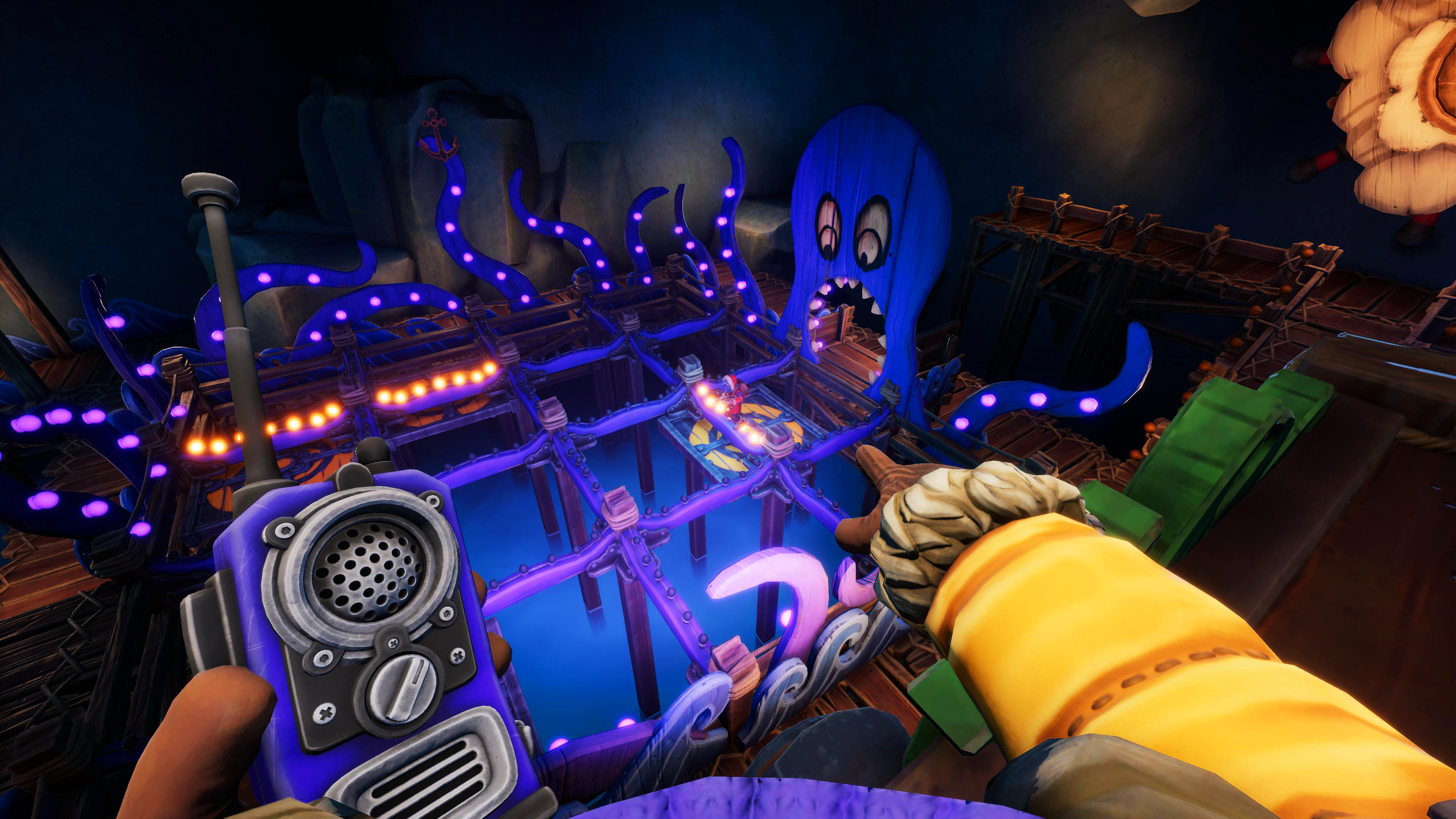
In a statement that will not come as a surprise to anyone who’s played We Were Here Forever, the audio design in The FriendShip is top notch. The ambient sounds are wonderfully recorded and do a stellar job of drawing you into the environments. The voice-acting too, though limited to a single character, is charming, and the playful Marina Seaworthy inspired a couple of laughs as we bundled our way from puzzle to puzzle.
Almost as exciting as the breaking news of a new game, is the news that the Expeditions mentioned in the title will represent a new, upcoming series of releases that will allow the Total Mayhem Games team to share smaller, less intensive experiences in the We Were Here universe. The Expeditions series promises to offer friends the gaming equivalent of renting a movie – independent, one-night experiences that bring you together for a few hours and a lot of enjoyment. I can see people absolutely gobbling up these smaller games with gusto, especially if the installments come regularly and with the same level of polish.
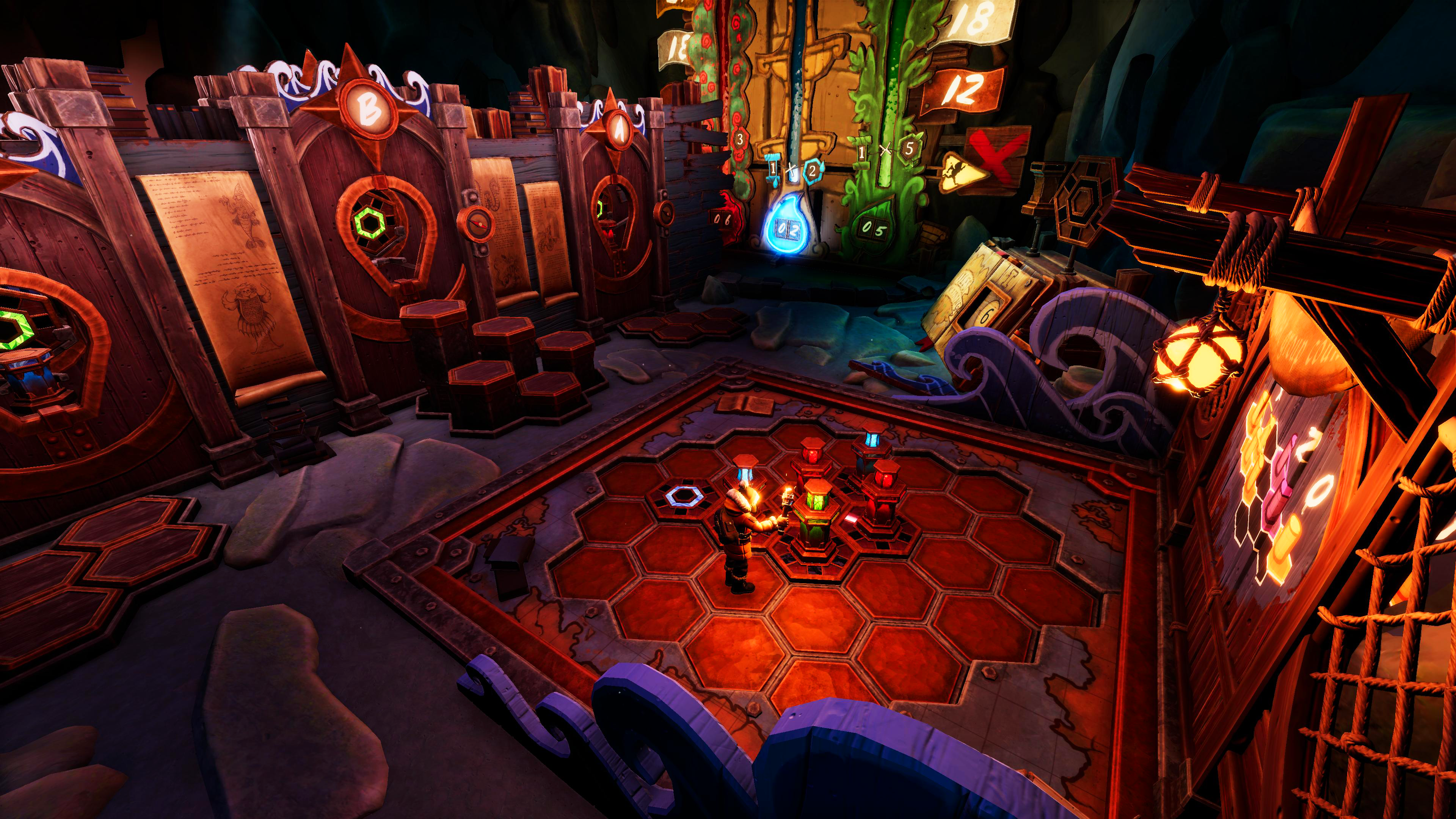
Bearing in mind what the Expeditions series sets out to accomplish – The FriendShip is a short experience by design. Made up of three quite different puzzles, Total Mayhem Games plot the playtime somewhere between one and three hours, depending on your experience and skill level. Gaz and I rattled through the first two puzzles in pretty good time before getting bogged down by our own stubbornness with the third – retrying it more than a dozen times to try and perfect it, before finally finishing the game somewhere just over the three hour mark. As a standalone bite-size story, the run time feels good – there’s a clear beginning, middle and end to proceedings and while you’ll be left wanting more, that’s entirely the idea.
Eager to quell the inevitable angry cries of “iT’s OnLy tHreE hOuRs lOnG?!”, I’d also like to point out that We Were Here Expeditions: The FriendShip is also free on Steam, Epic Games and PlayStation until 13th October, and only a paltry £2.99 after that, which is a bargain for the amount of fun you’ll have. Xbox fans aren’t left out either, gaining access to the game for free for ten hours after starting the trial, and friends will be able to play together regardless of the machine they own, as The FriendShip is entirely cross-play.
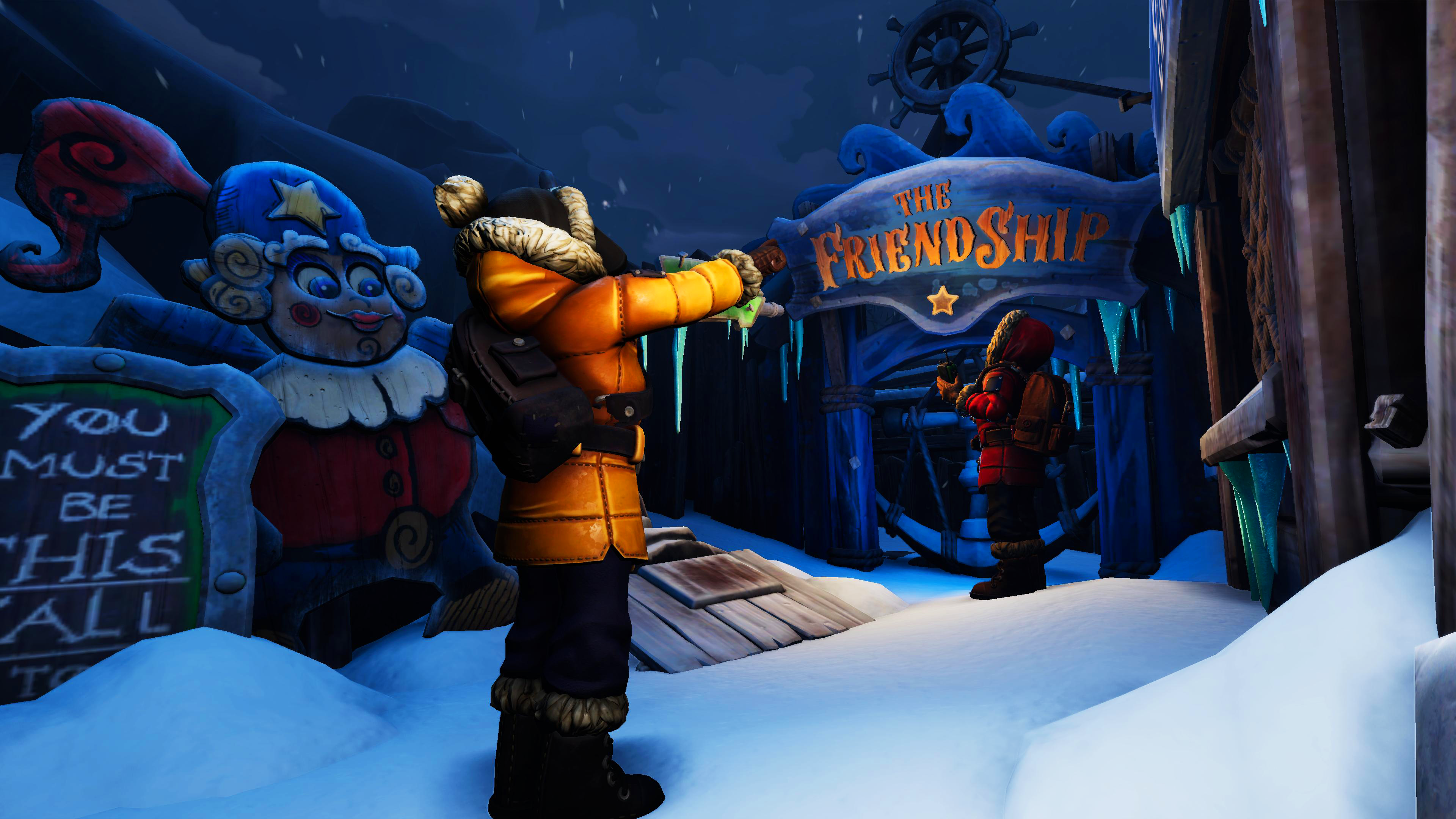
Both Gaz and I ran into a few very minor performance issues as we played, with the game slowing down and sometimes hanging a little as we entered new environments, but since neither of us is sporting an especially powerful rig, that’s hardly surprising. That said, these issues were minor and didn’t do anything to spoil the experience. From a purely enjoyment standpoint, The FriendShip succeeds wholeheartedly, and we were left grinning from ear to ear about the few hours we whiled away amongst the broken theme park attractions left to test us. As we ended the game, it confirmed something that we already knew: our FriendShip is a bit of a barnacle covered misfit, but always fun to sail on!.
Short-lived thought it may be, We Were Here Expeditions: The FriendShip is nothing short of tremendous. The puzzles are tricky enough to pose a challenge, but are cleverly enough designed so that any stress you feel is aimed firmly towards your partner and not the game itself! Boasting the same playful visuals, excellent voice-acting and engaging gameplay as We Were Here Forever, The FriendShip marks a stellar maiden voyage for Total Mayhem Games’ Expeditions series, and will undoubtedly win over a boatload of new fans.
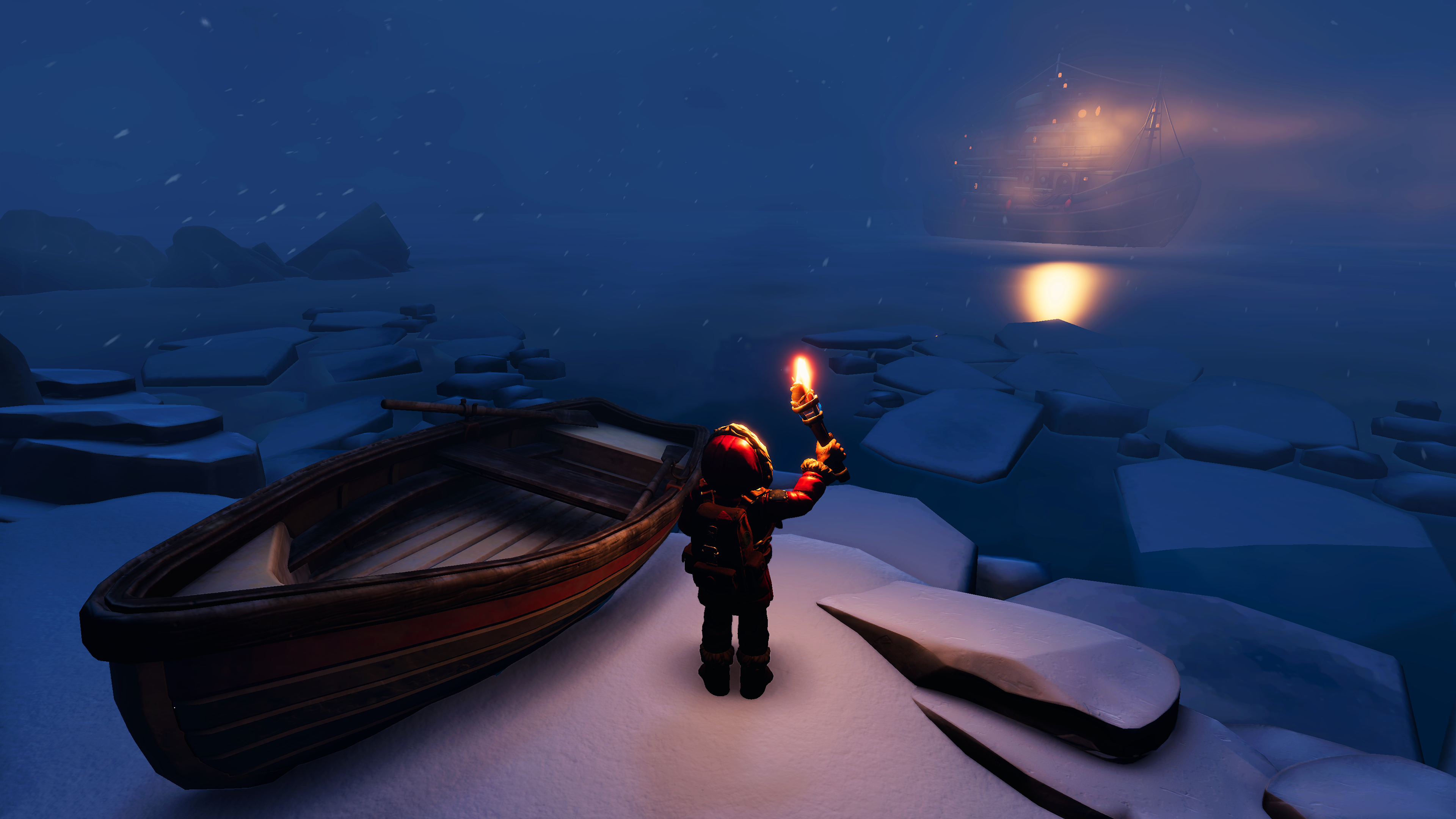
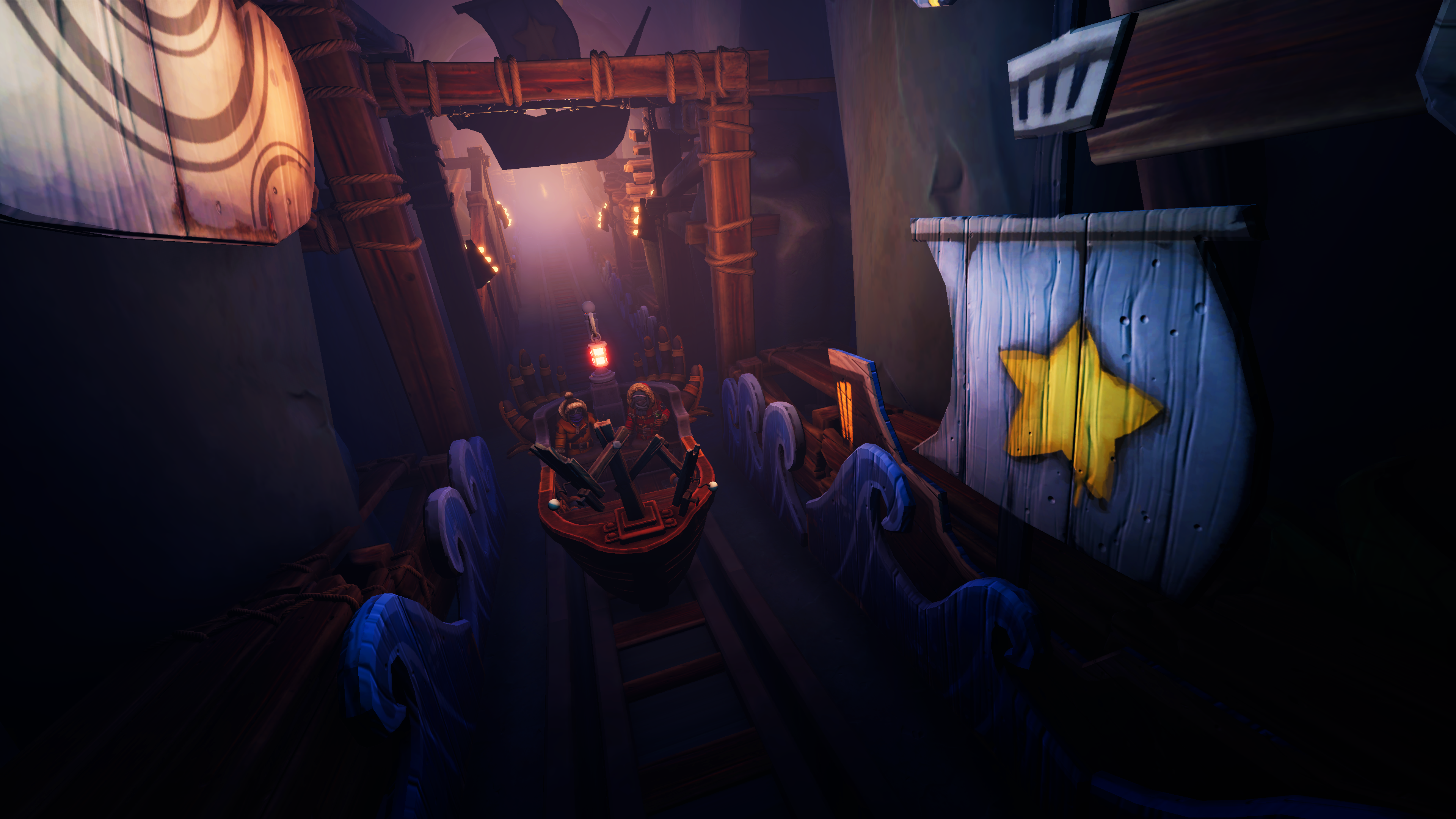
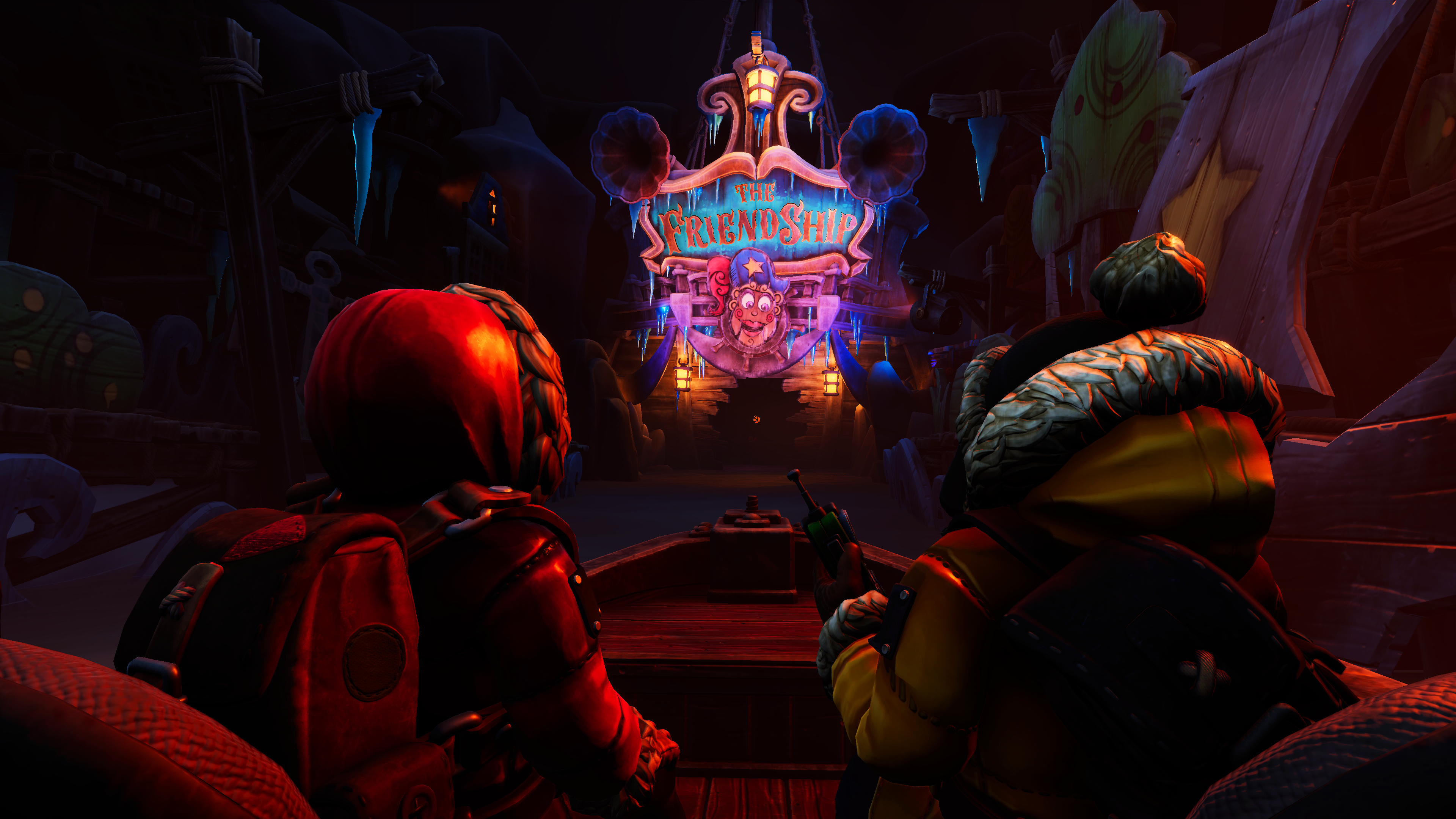
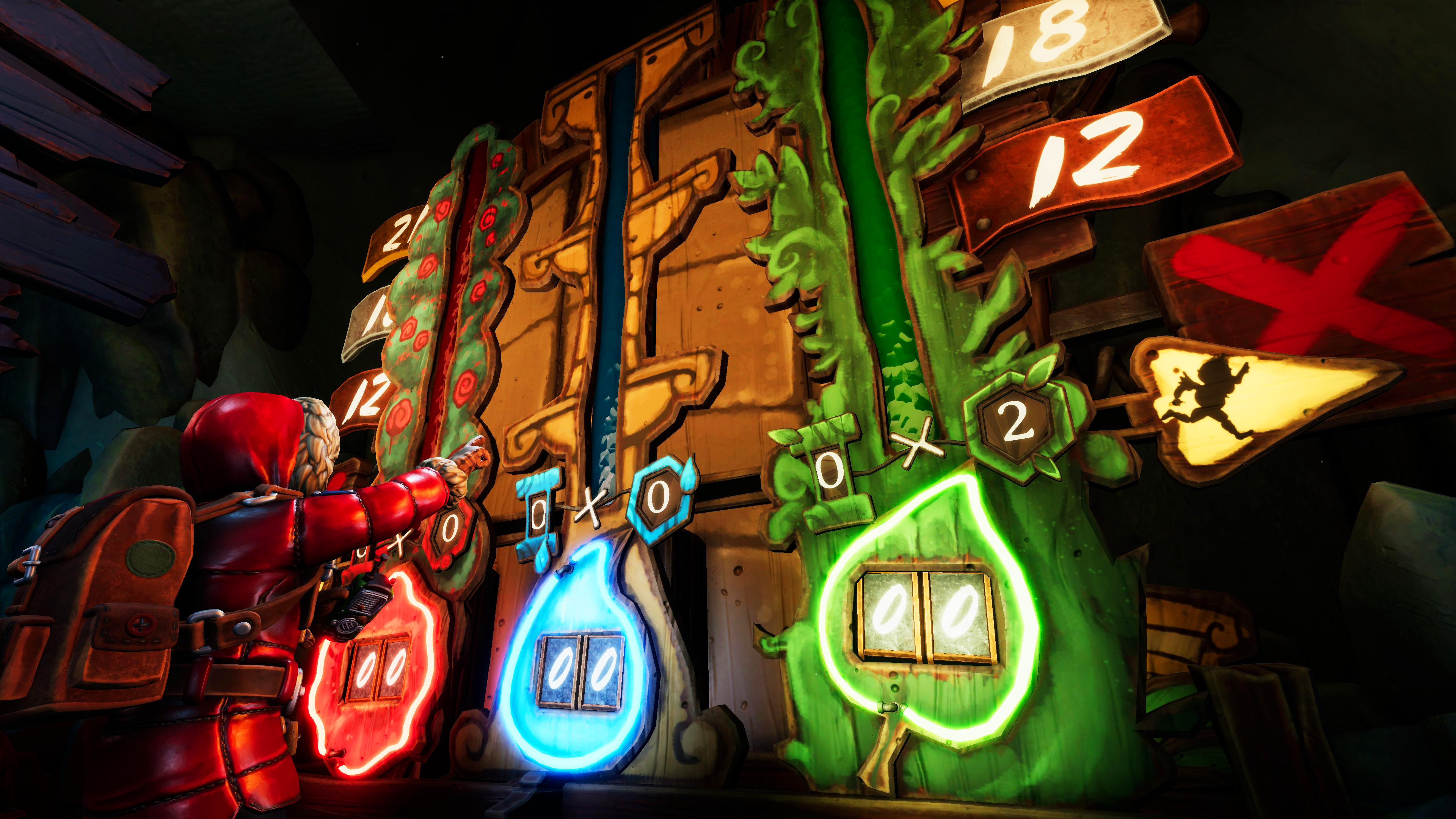
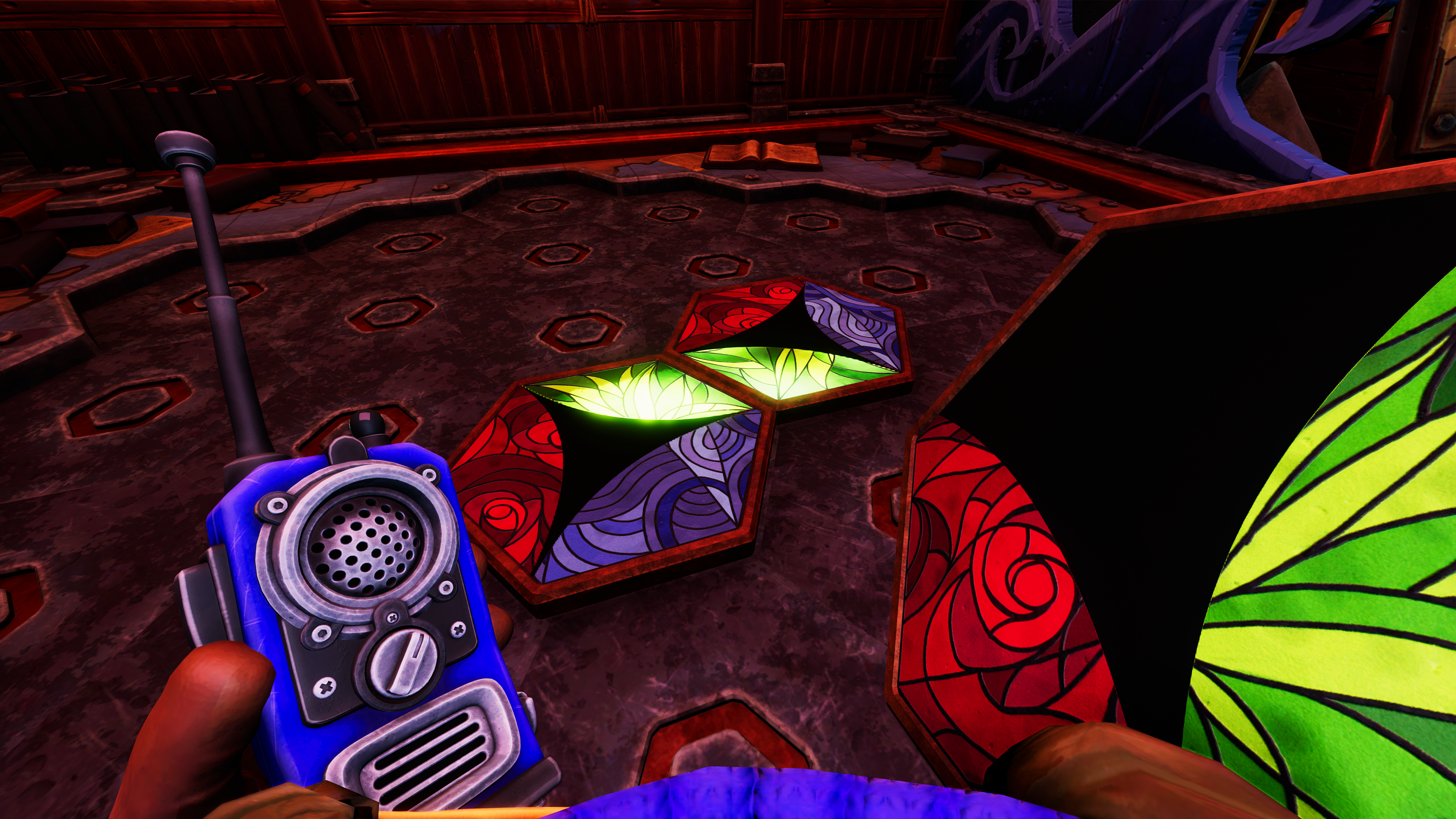
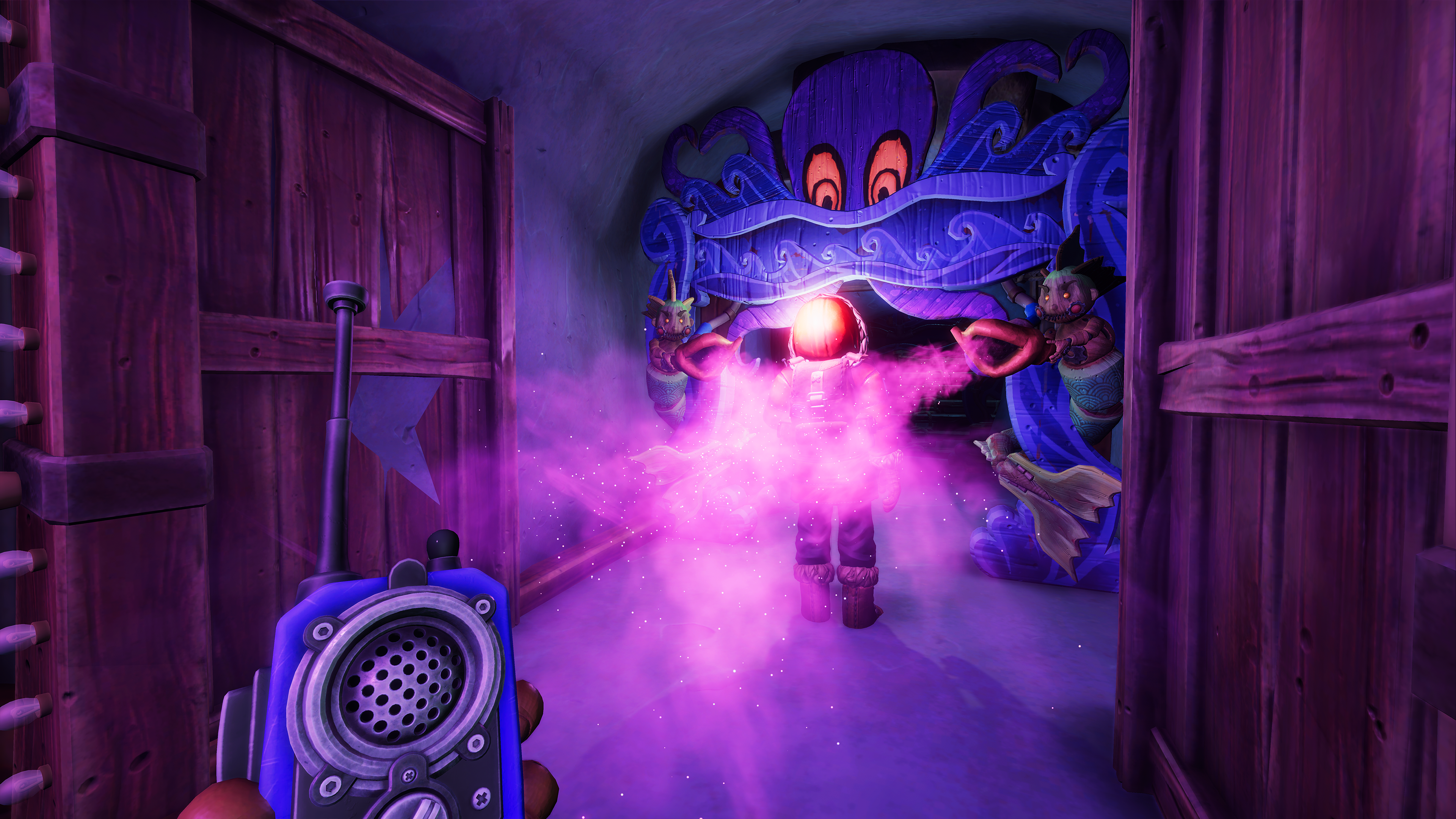
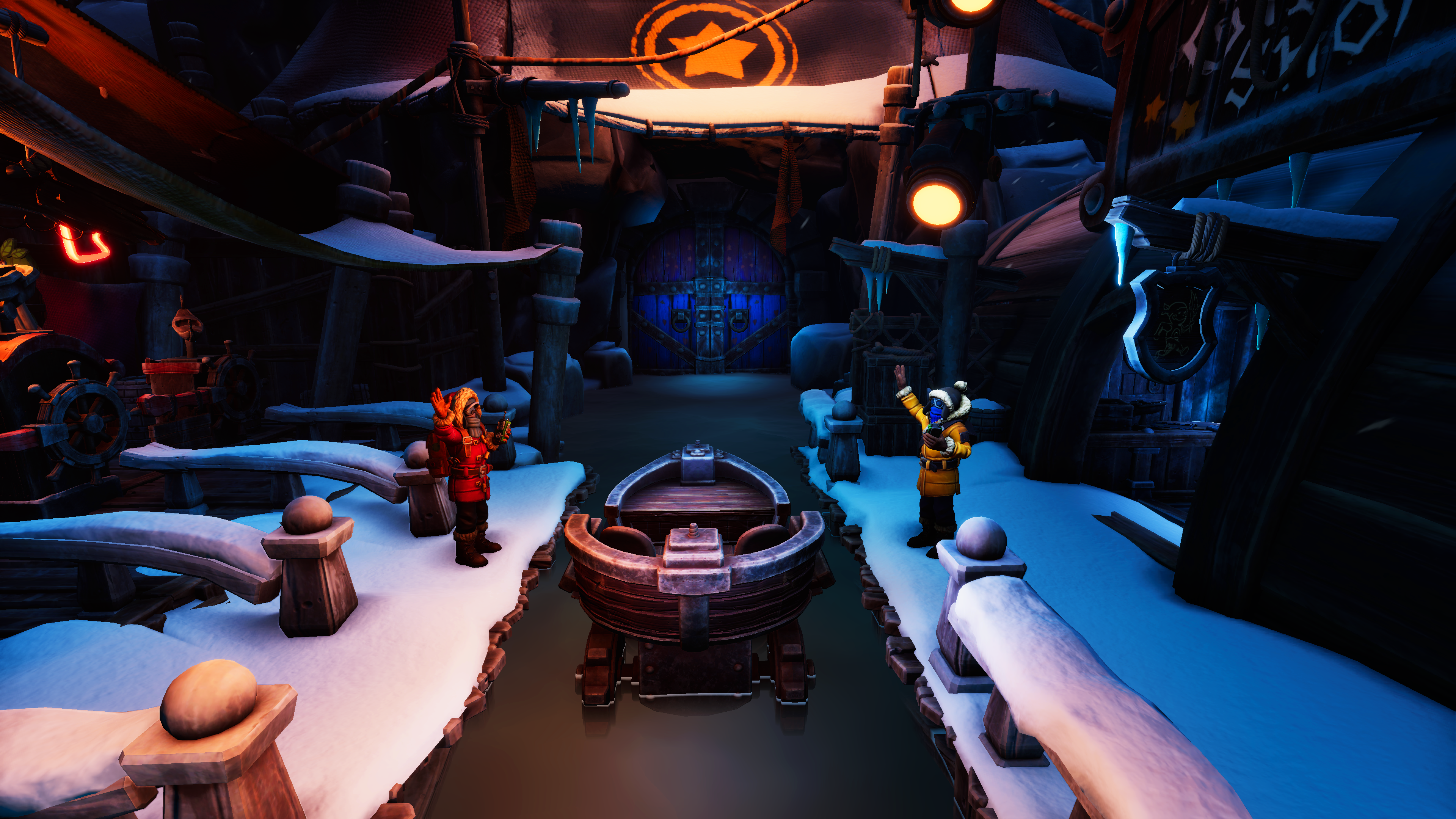
In the interest of full disclosure, VGamingNews was provided with a copy of the game in order to conduct this review.
Boti: Byteland Overclocked
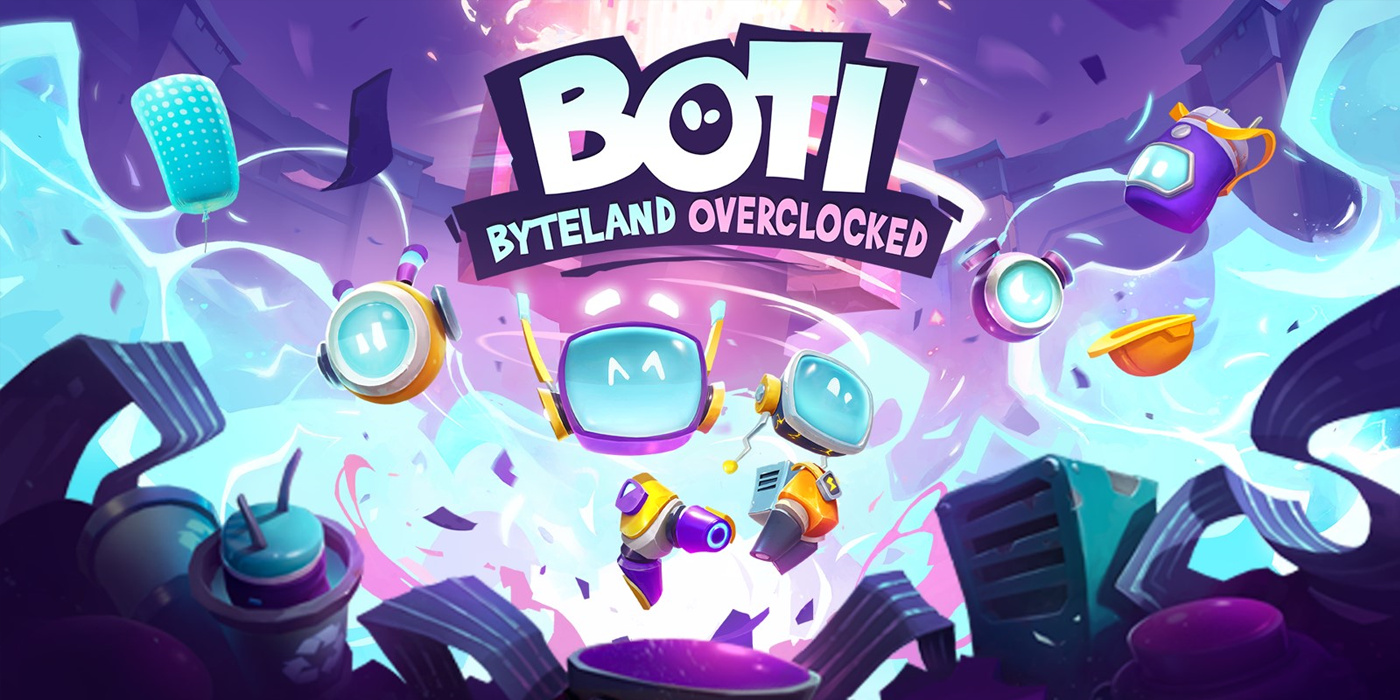

Note, this a written version of our video review of Boti: Byteland Overclocked – check it out below!
The platforming genre will always be one dear to me, in its ability to challenge one’s mechanical skill, spatial awareness and puzzle solving, whilst being able to explore unique and interesting landscapes. From personal loves such as the 2D showstoppers Celeste, Ori and Shovel Knight, to the 3D masterpieces like Mario 64 and Crash Bandicoot, I thoroughly enjoy bounding through levels, peeking around every wall and collecting everything possible. Boti: Byteland Overclocked (Bytelandfor short,) takes a good shot at this, but perhaps with an aiming sight that’s a little bit off-centre. Developed by Purple Ray Studio, a Warsaw based independent game development studio, this is their first major game project. Getting my hands on a brand-new IP was a treat and I couldn’t wait to jump, punch and slide through this byte sized world.
At A Glance
| BOTI: BYTELAND OVERCLOCKED | |
| Positives | + Fun, bright and vibrant art style + Tonnes of collectables to keep you busy + Lots of potential for the speed-running community |
| Negatives | – Lots of weird and wonderful bugs that made exploration unnecessary – Story was pretty tricky to follow – Music was uninspiring and just filled the silence |
| Overall | 6 /10 |
| Played On | PC |
| Also Available On | |
You take control of Boti, a cute little voiceless courier bot who has been freshly installed, set out to improve and maintain our PC. Under the command of the task manager, Kernal, we soon find ourselves in the midst of a crisis. Embarking on an adventure through the realms of the desktop, we battle baddies such as viruses, worms and glitches, whilst investigating the threat of catastrophic shutdown to the system. Byteland’s overall story is somewhat simple, but not the easiest to track, as plot progression dialogue is few and far between, and what is told perhaps could have been clearer. There is a fair amount of technical computer lingo which I’m not entirely au fait with, so there is a chance others would understand elements of the story easier than I. This did mean that for a while I felt that I was simply punching and jumping through levels, going through the motions. Then once the penny dropped, I said to myself “damn, should I have seen that coming”, but before long, I picked that penny right back up and was scratching my head with it at the end credits, wondering what just happened.
During your adventure, you are assisted by two floating info bots – One and Zero – that take on the classic trope of ‘good and bad shoulder angel’. I love this dynamic, as it will always remind me of the excellent angel duo that sit on Kronk’s shoulders in the film, The Emperor’s New Groove. One and Zero have their moments, where they point out collectables or points of interest nearby. The banter between them however got very repetitive, and fast. Having more variation in their dialogue or unique discussions between them would have felt more refreshing, so even if the odd voice line was looped it wouldn’t have been so obvious. The cast of characters in general are a couple of handfuls in number, with each being voice acted. At times the voice clips felt jarring as they would cut off early or overlap into each other slightly, but in any case, it did give each bot that extra bit of personality. I really enjoyed Kernal’s in particular, an extremely clever way to represent the Kernal of a computer (a programme that generally has control of everything) as an army Colonel, commanding his bot troops.
If you like collectables, you will not be short of them. The game encourages you to smack literally everything you can see. There are two currencies in the game, megabytes and botcoins. You collect MB as data in order to unlock paths to progress in each level, and then in tandem with botcoins, you spend to upgrade yourself as well as on outfits and décor of your HUB home. I did find the upgrade tree glitchy, as I managed to increase my health bar to max straight away, then later in the game it continued to spend cash on already maxed out trees, whilst not spending it on another that I could afford. Hopefully just a simple patch job if I wasn’t the only one that experienced this. Other collectables include outfits, Kernal recordings, and trophies from the many, many, many slide challenges.
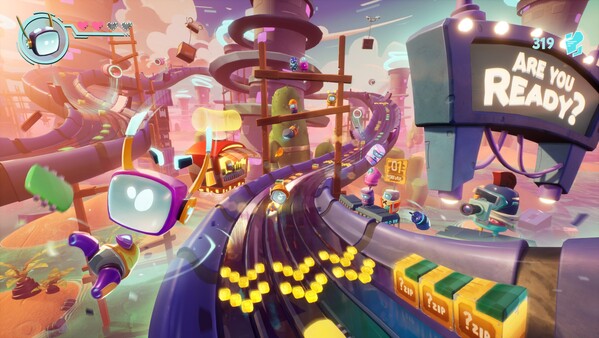
Your move set is quite streamlined, with a minimalistic skill tree to invest into. Keeping things simple is no bad thing, as it then allows the player to focus on old school platforming without too many bells and whistles to hold your hand. However, I couldn’t help but wonder if there was some scope at incorporating a few more moves or upgrades to give more variation to Boti’s playstyle and manoeuvrability. You can either play using mouse and keyboard, or as I did by using a controller. From the ever-faithful dash to the ground clearing butt slam, movement does feel responsive and impactful. There were a couple of elements I did feel could be improved on though; the ground pound does leave you immobile for a fraction of a second, which I felt ruined the flow of movement and left you briefly vulnerable. Also having the ability to run faster would have been nice, I ended up utilising the jump dash to get around as I found there didn’t seem to be a cooldown this way, whereas a dash along the ground did have one. For the most part I thought that movement was tight, apart from the hovercraft elements of the game, which is a shame because the tracks and obstacles are a great design and are clearly built for speed. It felt like I was sliding around, pinballing off the walls, unable to take sharp corners to collect all the data or avoiding pitfalls.
One ability I did like is the scanner, which is an incredibly helpful tool you pick up at the beginning of the game that allows you to scope the surroundings to easily see what to interact with. Green means “collect me or destroy to collect me”, yellow is smackable or interactable, and red is a bad guy… which is also smackable. So in short, if there’s a colour to it, punch it. At the risk of sounding like an American Policeman… There is one drawback in that it seems to be on for a set time, even if you enter a cutscene.
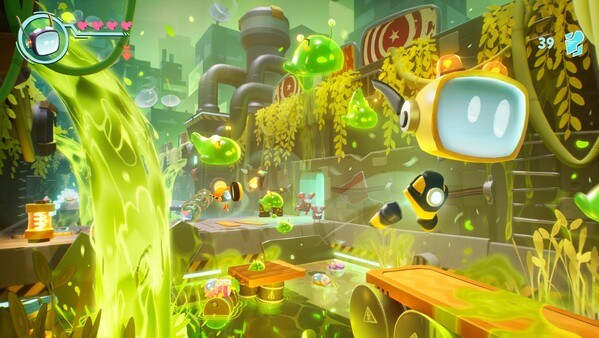
Now with every good platformer comes a soundtrack that elevates and enhances each level, whilst also ending up being so damn catchy you can’t help but stick on in the background whilst cooking dinner. Something that you enjoy listening to when you inevitably hear it again and again after each death, or when replaying for 100% completion. Byteland has a soundscape that does well to match the levels with its mix of synth and electronic beats. However, aside from the bop that is this hovercraft segment, I did think that a lot of the music just filled the silence, as opposed to elevating my experience of the levels.
Visually, I really liked the design of each component of the PC you explore, the vibrant colours and playful art style do bring the concept of internal PC parts to life, though, it doesn’t take long to notice striking similarities in both design and concept to Astro Bot off PS5 fame. Purple Ray Studio are not asking players to leap very far for their comparisons.
Performance was no issue running at a smooth 70-80 FPS. The user interface is simple and understandable, although the game seemed to read my inputs as if they were from a PlayStation controller as opposed to an Xbox one, such as having a big triangle instead of Y to interact with objects, this I’m sure will be fixed. The HUD I think would have been helped with the addition of a progress bar for collectables and bytes, to allow players to see if they have missed anything or have reached 3 stars before completing the level. Not that I felt difficulty was an issue – a tracker would simply have made things a little more accessible. In fact, I thought that the combat was easy, as were the various puzzles, making Byteland very accessible for all ages.
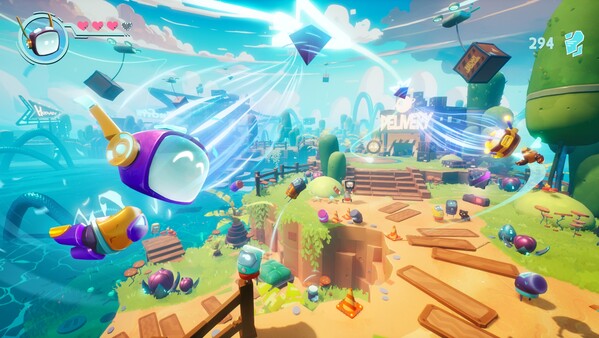
Replayabiity is a huge factor when it comes to platformers, especially those that include a plethora of collectables. The HUB world is a well utilized feature to allow players to revisit each level, and it itself is immersive with more areas to unlock and explore. Another glitch however is that I could unlock every one of these areas post-game seemingly for free, nullifying all my hard work at collecting most botcoins and thousands of bytes, which was rather disappointing. On the plus side, I can see this game being a dream for the speed running community and look forward to seeing what they can achieve.
For the most part I played solo, but there is an option to jump into the game with a friend locally or online. I hadn’t realised that default setting was having my game open to all, so was blissfully unaware that whilst I was jumping around up on the higher path of one level, a random had joined my game, beat up innocent bots beneath me and scarpered off with my data. Promptly accessing the ‘yeet’ button.
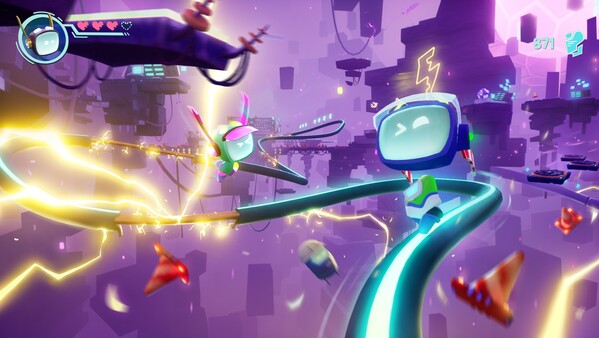
I was very grateful to receive an advance look at the game from the developers in order to review Byteland via Steam. Completing the game on a casual run whilst collecting almost all botcoins, 3 staring most levels and collecting all slide challenge trophies, took me under 10 hours.
Overall, I felt that Byteland really does have a lot of potential. Most issues I encountered were bugs or glitches that can be easily patched if not already at time of writing, as well as concepts that could be considered in future updates. As this was an advance code of the full version, the developers are still working hard ironing out the bugs and are very responsive and open with the community. There are the components here of a charming platformer, that at present feels a little rusty around the edges, but I can see really great things coming from the team at Purple Ray Studios in the future.


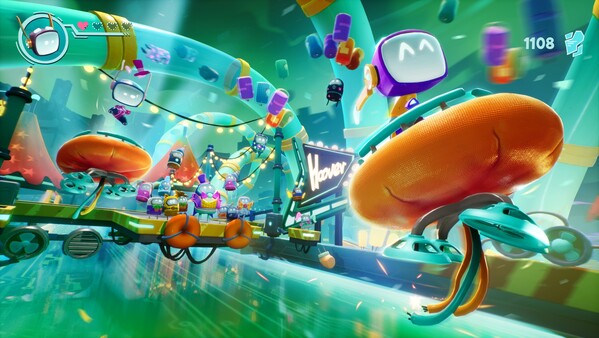

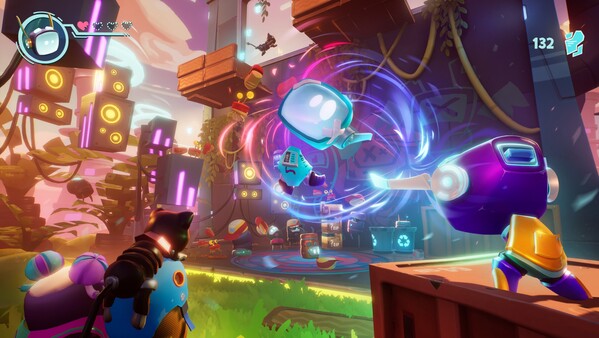
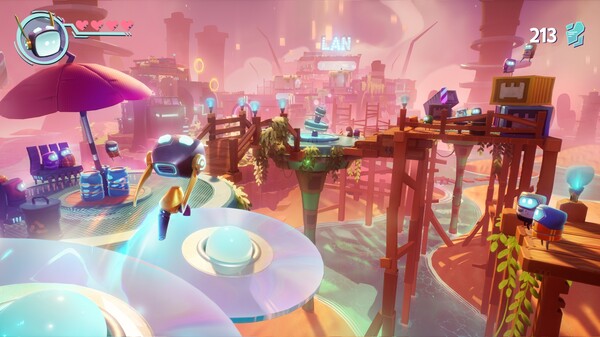
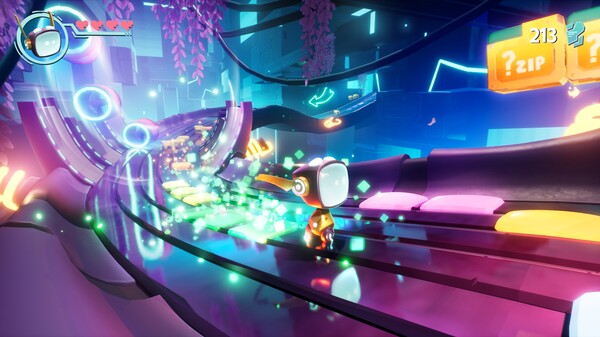

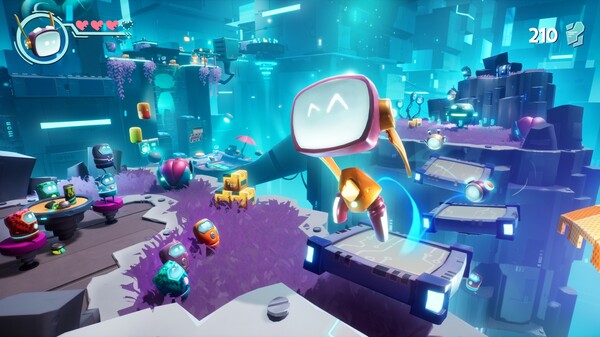
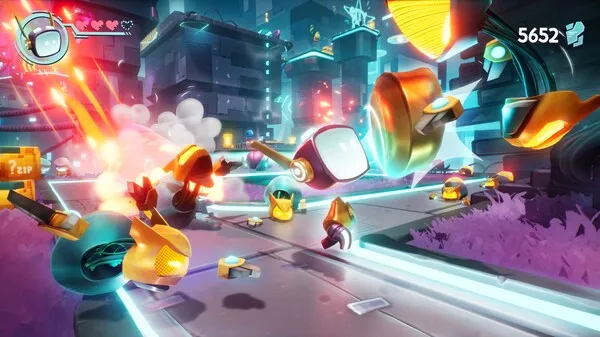
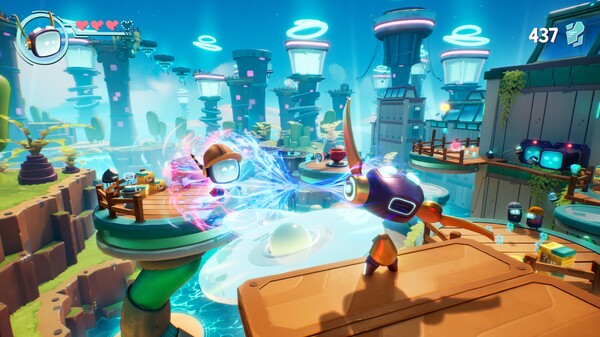
In the interest of full disclosure, VGamingNews was provided with a copy of the game in order to conduct this review.
Exoprimal
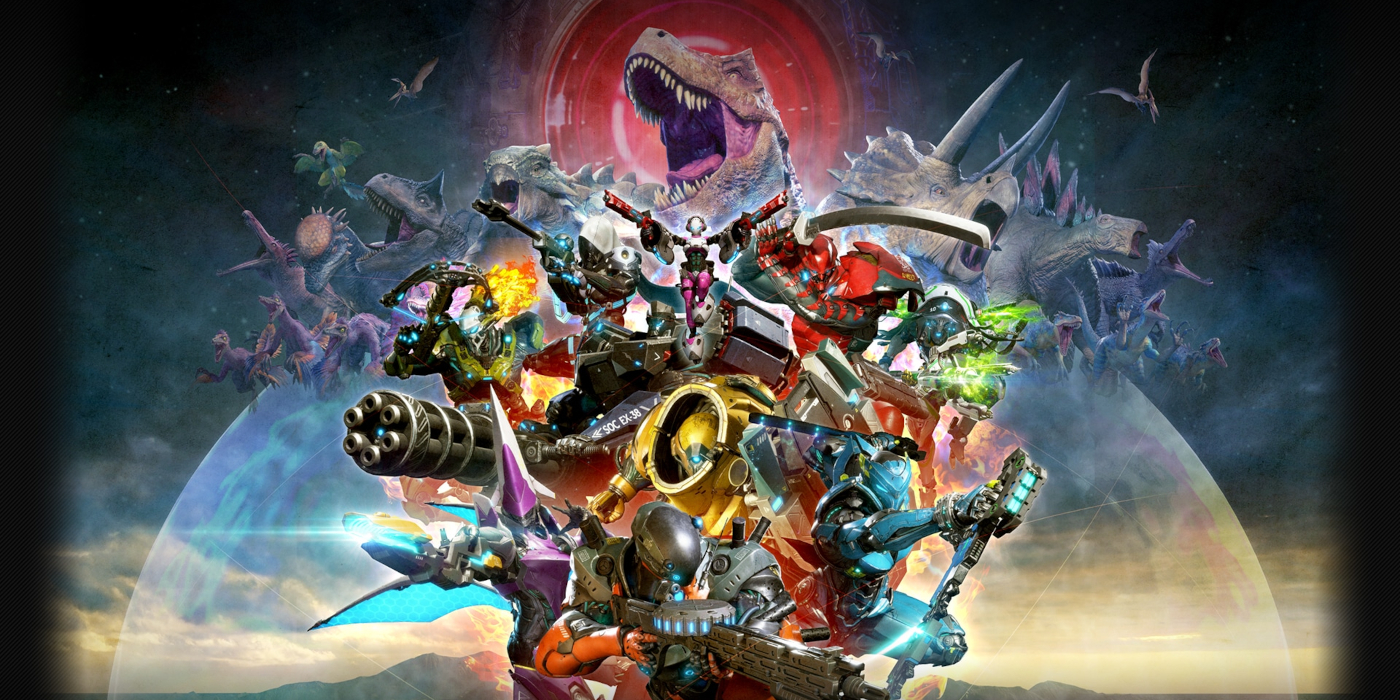

If there is one thing Capcom know how to do, it’s to give the player a weapon and say hey, here are some big beasties, go crazy. Taking some inspiration from its other franchises, such as Dino Crisis and Monster Hunter, along with concepts from titles like Overwatch and Back 4 Blood, there is a mixed bag of fun to be had here.
Exoprimal does well to scratch an itch I didn’t realise I had when it comes to the vast destruction of dinosaurs, attempting to interlace an interesting single player story between a repeated multiplayer gameplay arc consisting of other real-world players. Pitting futuristic fighters against prehistoric predators in PvPvE based combat, this game is far from a dino-snore.
This is an abridged version of my video review, which we’ve embedded below.
The game begins with a news bulletin, one that does well in smoothly hinting toward the game overview as well as eluding to class selection. The year is 2043, and in a fashion similar to that of the film Pacific Rim, pilots are trained to ‘neurolink’ into specially designed exosuits, designed by the corporation Aibius, in order to defend humanity against dinosaurs. At the heart of it all is a highly advanced next generation AI named Leviathan, because nothing bad ever happens in a story that involves really smart AIs… or dinosaurs for that matter.
After one training ground tutorial, we’re soon thrust into the action in a faux match with AI players. The gameplay arc is fairly simple. In Groundhog Day fashion, you take part in 5v5 team based ‘wargames’ designed by Leviathan, that each consists of two segments – The first requires you to complete several objectives faster than the enemy team, each time one is done ‘The Watcher’ tells you whether you are faster or slower than the opposition, with red ghosts showing how far ahead or behind they are.
Upon completion you then undergo interdimensional travel to the second section, which is where things get a lot more interesting. This can either consist of further PvE objectives or a mix of PvP. Missions can include objectives such as escorting NPCs, pushing/defending the payload, or my favourite – the carnage module. There is nothing quite like the sight of seeing quite literally thousands of dinosaurs descend from the sky as you ready up every bit of kit you have, essentially re-enacting the Ice Age.
Conclusion
| Exoprimal | |
| Positives | + Great single player mixed with PvPvE gameplay + Solid visuals + Controlling big dinosaurs |
| Negatives | – Load times – Clunky system of exploring the different mechs – Repetitive in the early stages |
| Overall | 7 /10 |
| Played On | PC |
| Also Available On | PS5, Xbox Series X|S |
Overall Exoprimal is a good time. It succeeds at giving you that almost pick up and play overpowered feeling of blasting through waves of enemies, whilst also keeping you gripped to a story that, although can be confusing at times, is rather clever and interesting. Once you power through an initial lacklustre few hours, you’ll be rewarded with an excellent third-person shooter, and an urge to rewatch the Jurassic Park films.
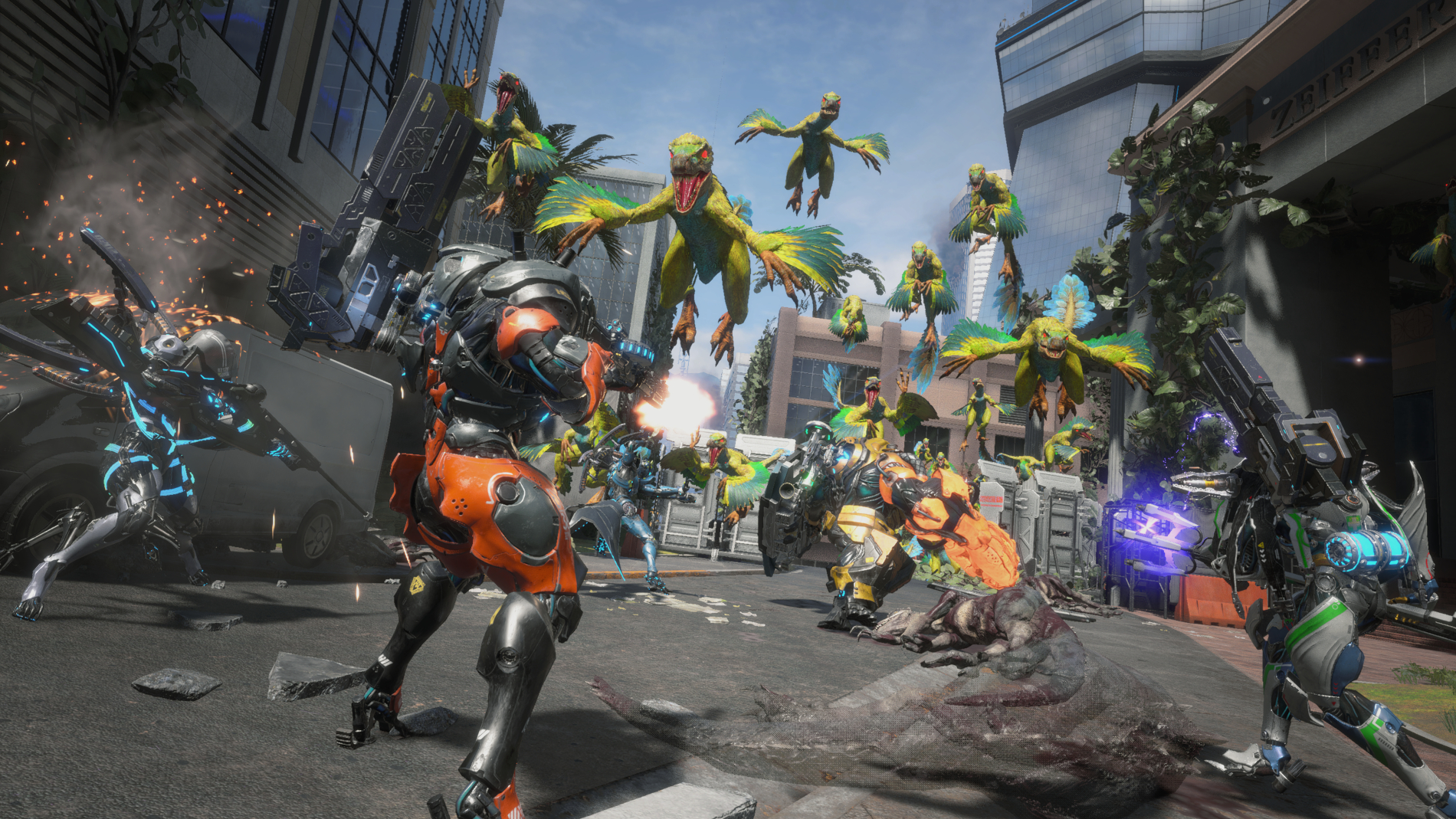
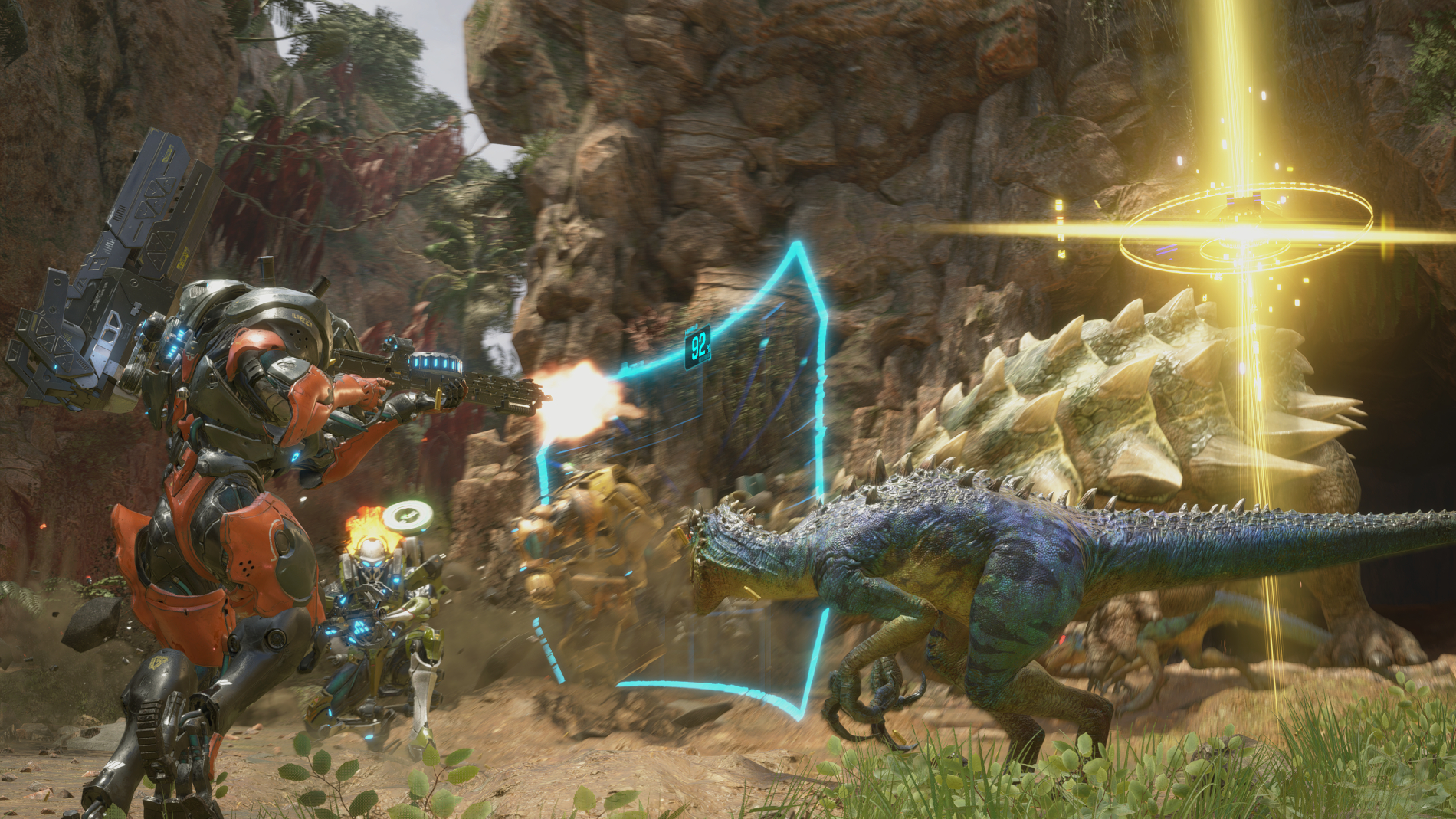
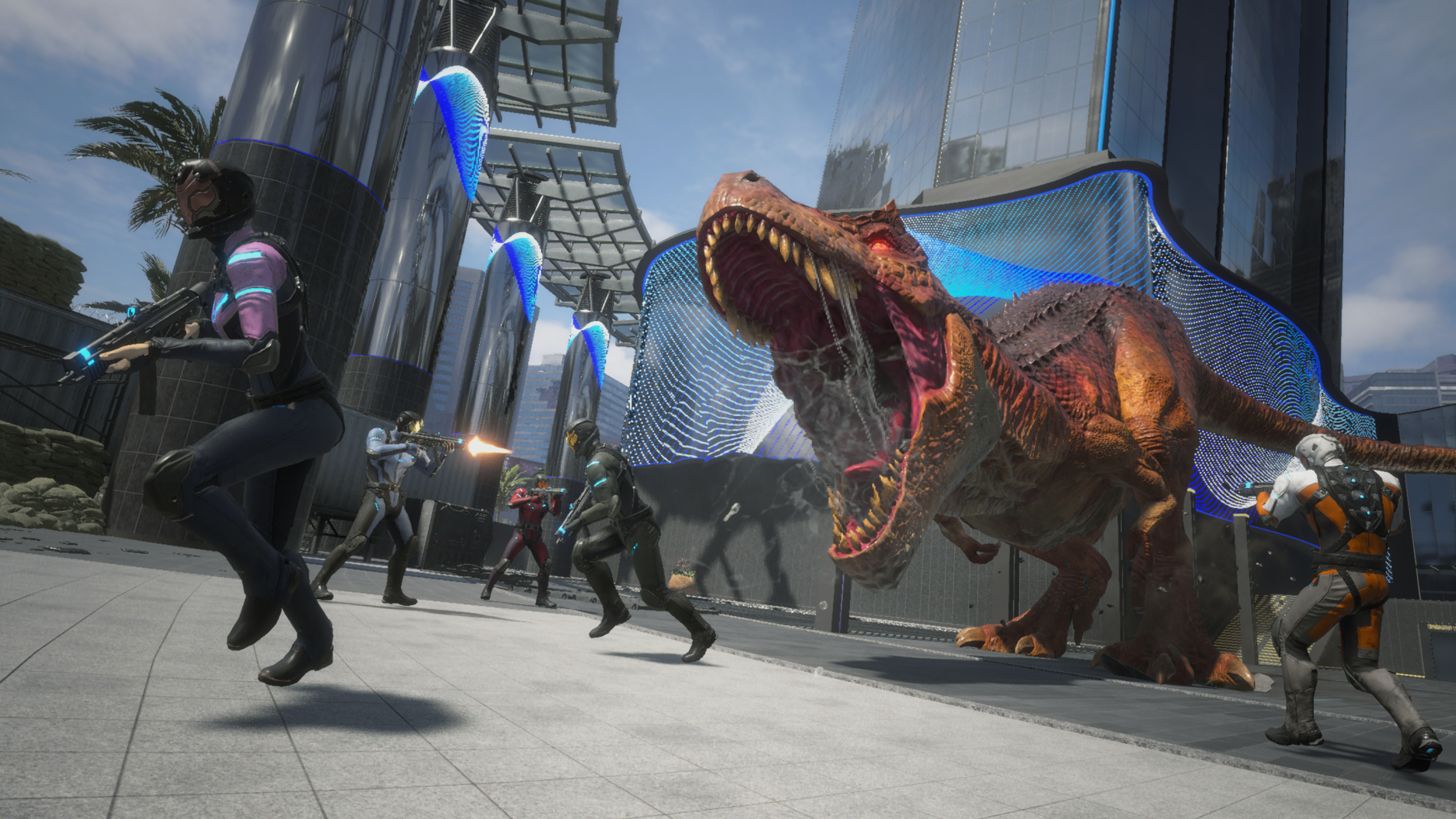
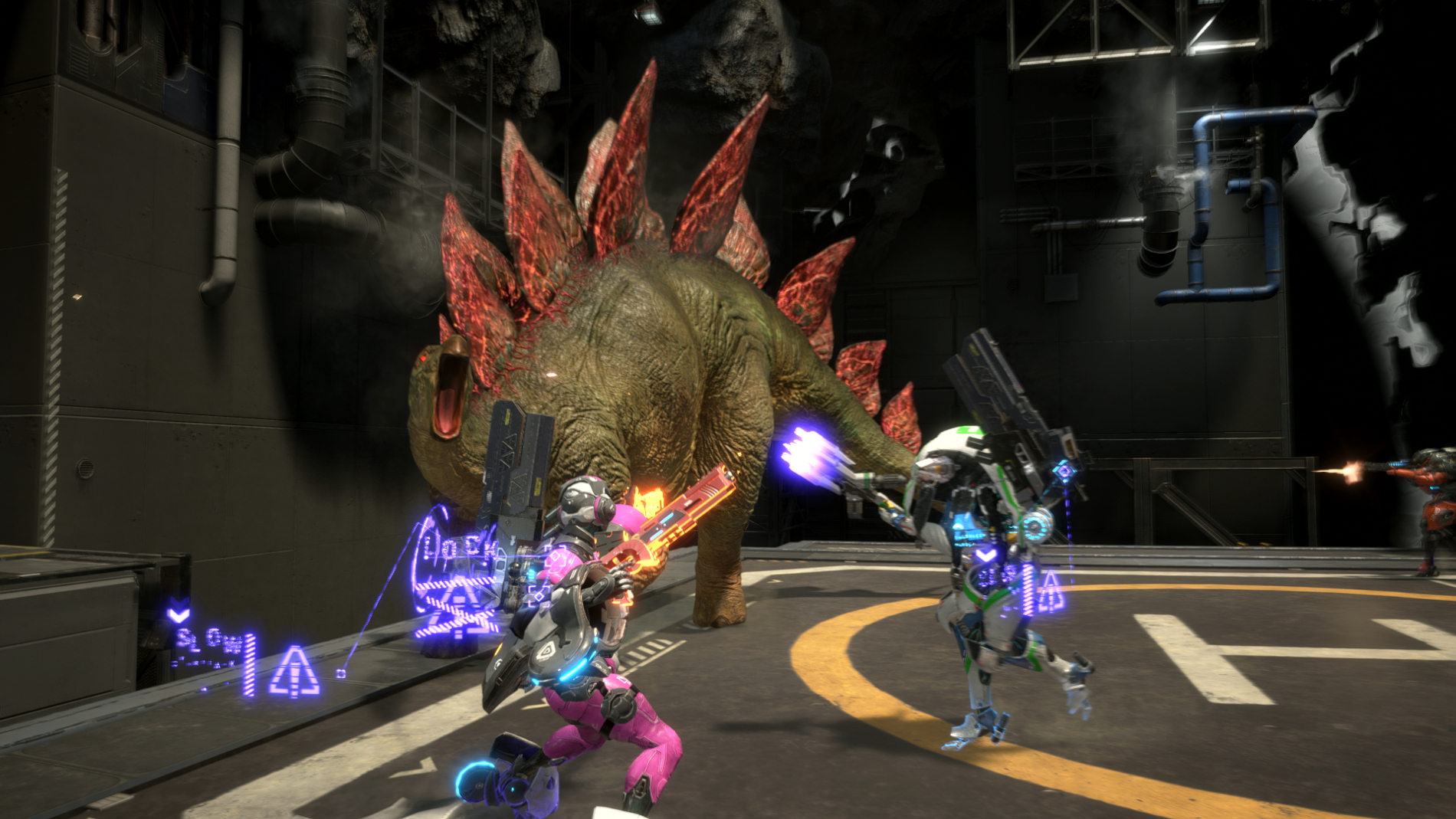
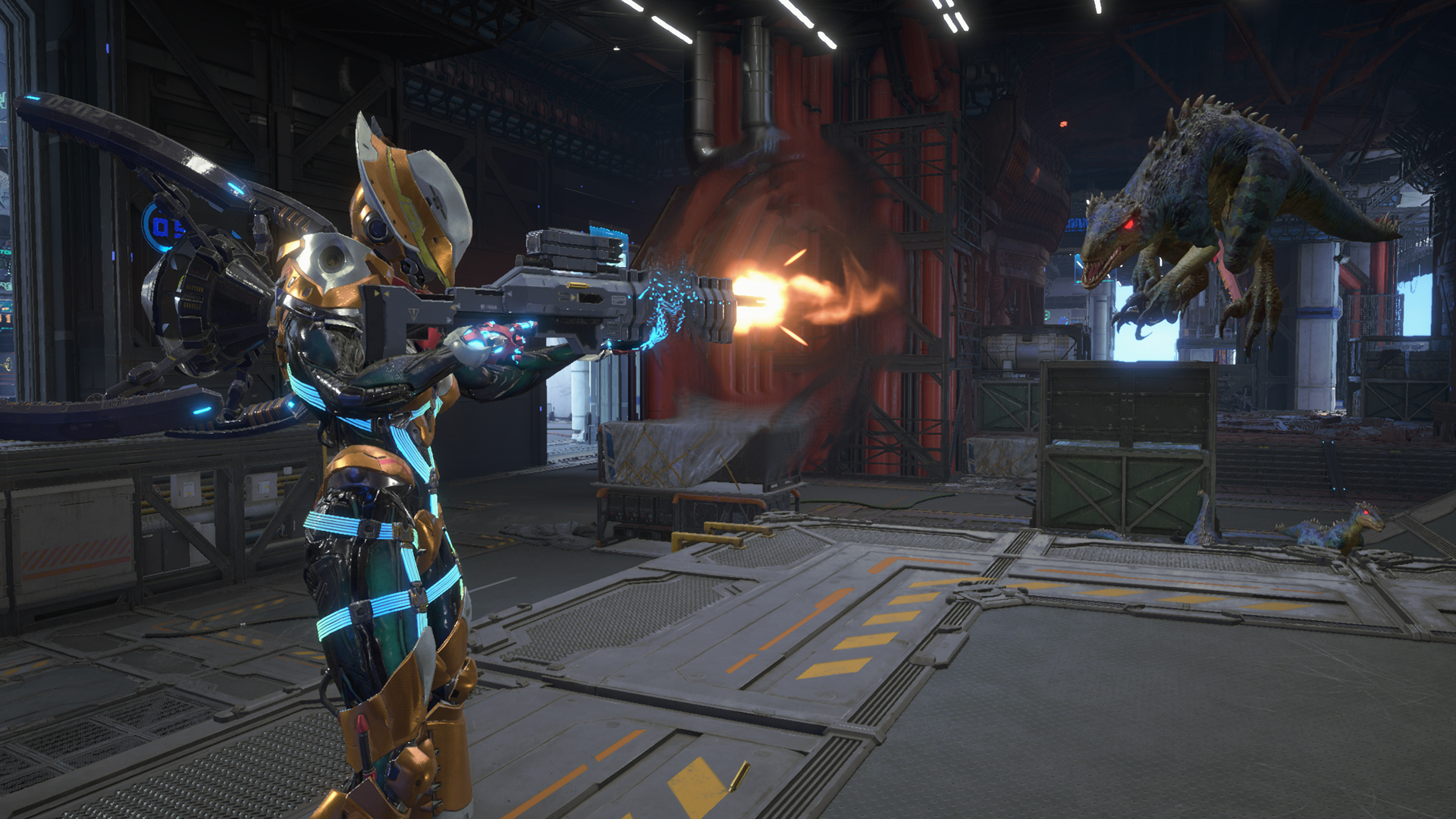
Outlanders
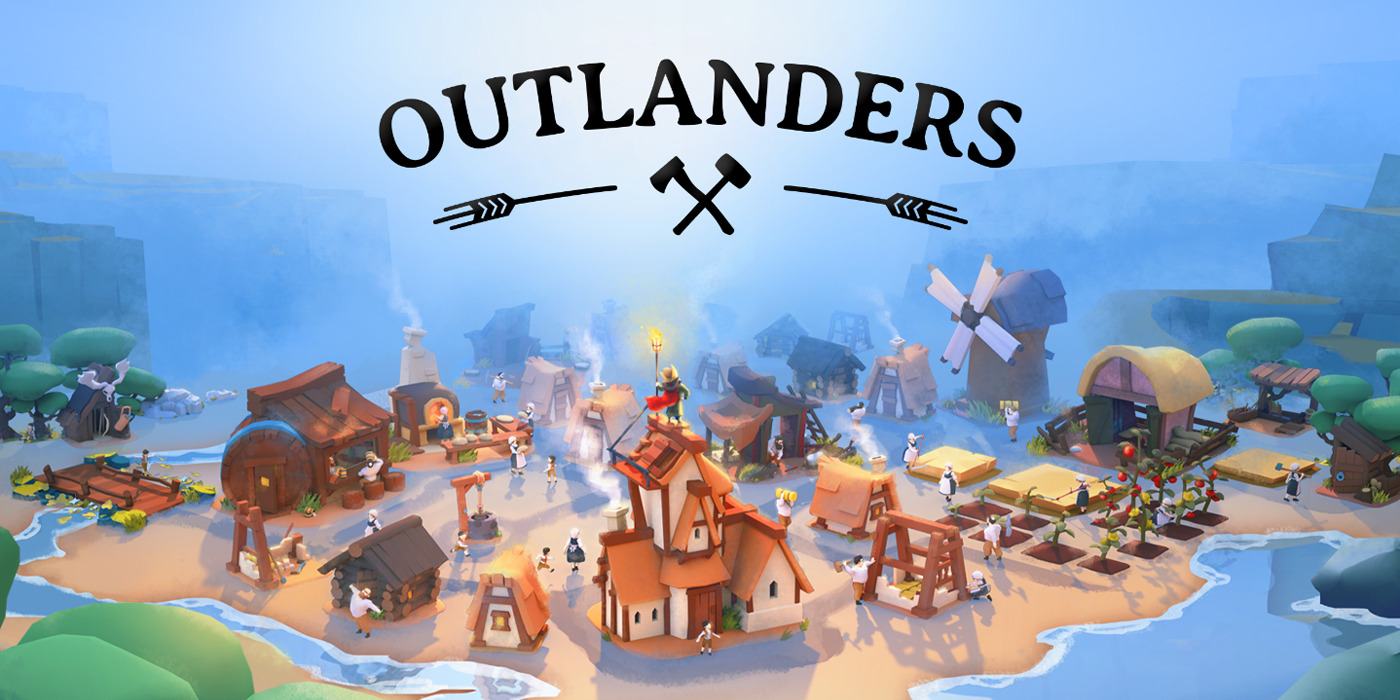

While I’ll never proclaim myself to be good at them, I’ve always had a soft spot for city-builders and resource management games. Since my first attempts at Sim City on the SNES, I’ve found it fun to hold a growing civilisation in my hand, though I often get about 75% of the way through and then struggle to keep up with all of the management to push through to the finale. Time to point the spotlight on Outlanders from Pomelo Games then; a boiled down city-builder experience where there’s plenty to do in a small space and only a few folks to keep an eye on.
At A Glance
| Scores | |
| Visuals | 7 /10 |
| Sound | 7 /10 |
| Gameplay | 7 /10 |
| Overall | 7 /10 |
| Positives | + Jolly and fun low-poly visuals + Chill banjo soundtrack + Simple to keep track of |
| Negatives | – Can easily paint yourself into a corner – Very finely (maybe too finely) tuned mechanics – Small scale might be a turn off to some |
| Price (When Reviewed) | £12.79 |
| Our Playtime | 9 hours |
| Version Tested | 2021.3.11.23713 |
| Available On | PC, iOS |
Outlanders is a city-builder, but on the smallest possible scale. This isn’t the kind of game where you’ll be overseeing sprawling mega-cities, overrun with an enormous populace and burgeoning to keep up with technological advancements. No, instead you’ll be helping a small group of settlers -perhaps between 5-50- start a simple new life for themselves in the islands. Of course, you’ll have all of the standard ‘city-builder’ tasks to undertake – gather materials, keep your folk fed and warm, and generally look after their happiness and wellbeing, but don’t think that it will will be an easy ride just ‘cause you’re only taking care of a few peeps. Outlanders is a tricky affair.
Outlanders has a short campaign that asks you to focus on a small populace and achieve modest objectives, or there’s a sandbox mode for players who want to jump straight in with all the trimmings and enjoy what’s on offer from the get-go. It’s a combat free environment, so you won’t ever have to worry about raiders spoiling your fun or creating defences for your settlements – you can just enjoy the quiet, humble life.
The resources at your disposal are as old as time itself – collect wood, stone and food and use them to build a cosy place to live. In time you can erect buildings that allow you to finesse these basic items into more helpful ones (wood into planks, wheat into flour etc.) which expands your options a little, but the beauty of Outlanders really lies in the simplicity. The gameplay loop is a easy – there aren’t a million things to keep track of, nor a tonne of resources to mine, convert or trade – you just ask your lil’ dudes to cut down a few trees and forage a few mushrooms, and that’ll actually get you a good part of the way to success. There could be some who find this small scope a little unappealing, but I actually found the stripped back mechanics pretty refreshing.
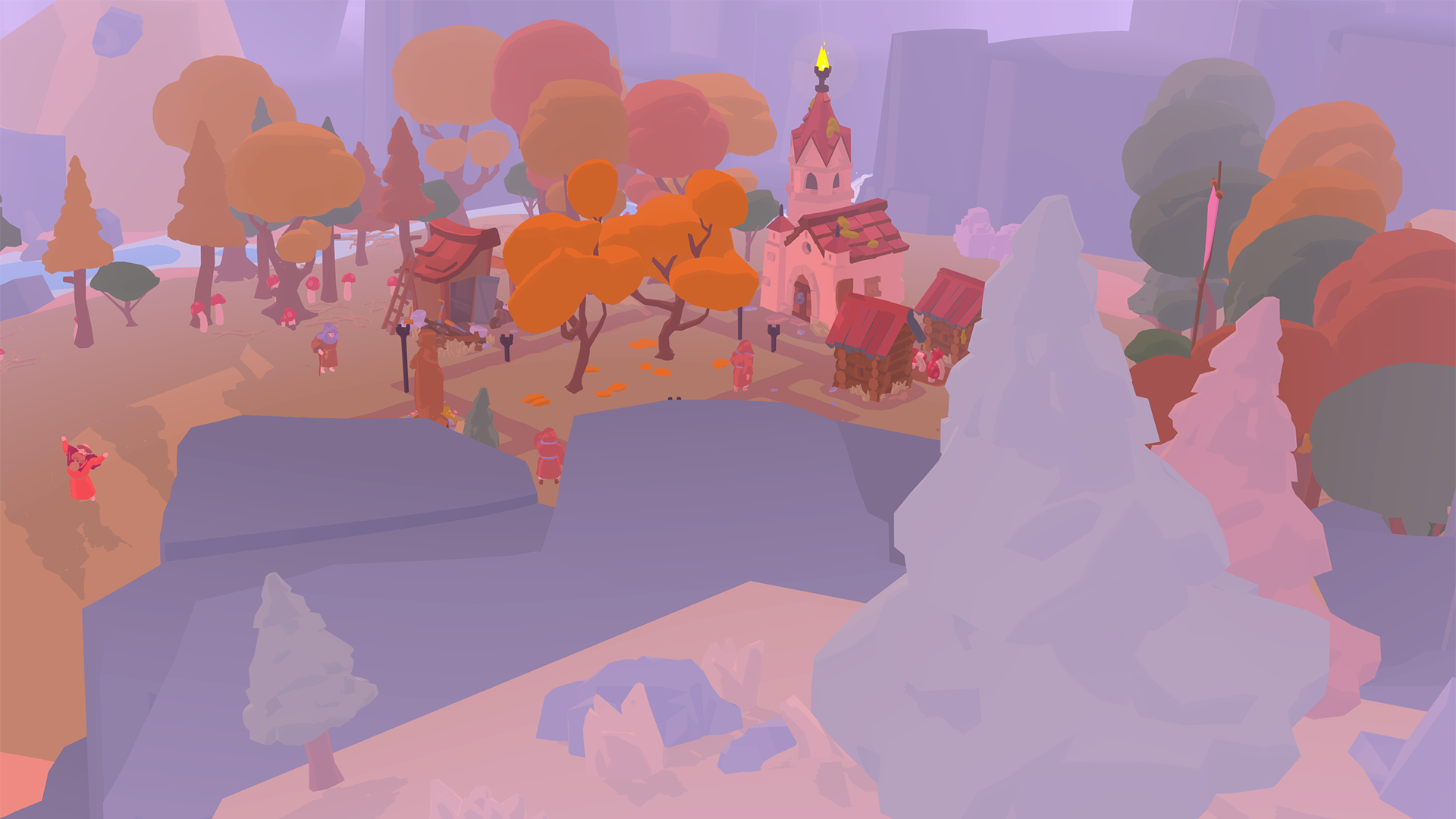
Your townsfolk will have children over time, and they will later grow up to join your workforce, and eventually pass on, meaning that you need to keep an eye on the age of your populace, less you allow your settlement to quite literally die out. Each villager is given a little blurb about themselves which it’s a nice touch for those eager to take in the finer details, but I’ll admit I spent my time micromanaging the activity than I did learning about my townsfolk.
A mechanic that I found both enjoyable and incredibly useful were the Decrees, which allow you to place a mandate down on your townsfolk to behave in a certain way – manipulating their behaviour to suit your current circumstances and needs. For example, if you’re struggling with food provision, you can ask people to ration their intake and cut down on how much they eat per day – sure, they’ll be grumpy at the smaller portion size, but that’s much happier than if they ate your out of house and home and starved to death. An interesting Decree is *cough* “Love Each Other” which, -yep,you guessed it- turns your villagers into rampant little rabbits who struggle to concentrate on getting anything done but the deed, supplying you with a swathe of new babies in town just a little while later. You can also tell them to abstain from doing the horizontal hula should you wish – this will make your followers thoroughly miserable (understandably), but does help you manage your populace and food consumption, so it can sometimes be a necessary evil.
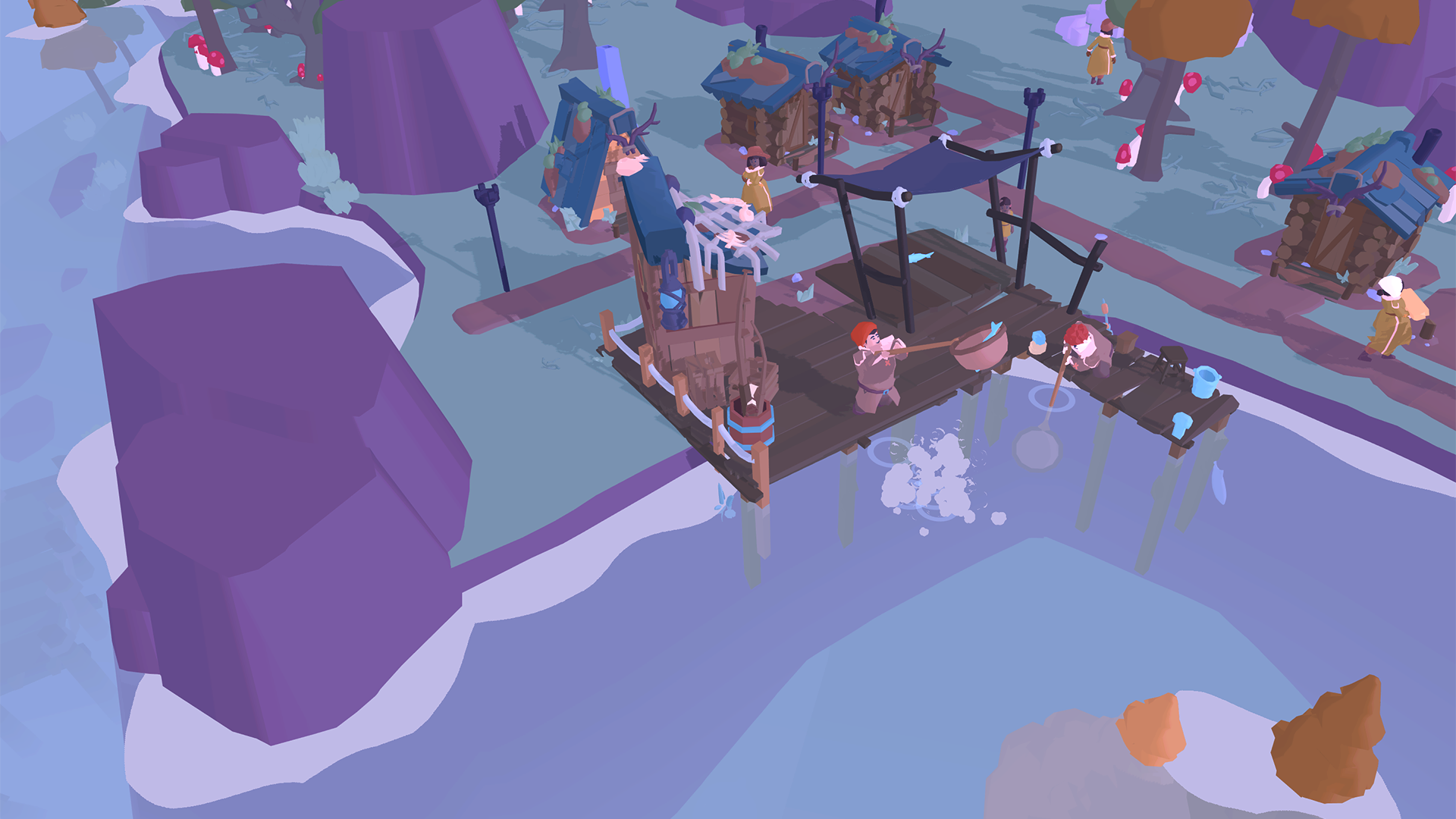
The appeal of the charming low-poly visuals are immediate, and despite a somewhat limited soundtrack, the chill vibes of the banjo do a great job in immersing you in the laid back, small town atmosphere that the gameplay strives for without ever becoming repetitive. Your villagers, and their mechanically useless but aesthetically playful leaders, are wonderfully characterful, and it’s fun to watch them busy about their days in the fields amongst their children.
But all that said, I have to say that the first few hours with Outlanders didn’t exactly set my interest on fire. First off, the game felt slow. Like, really slow. Tasks can take your villagers a couple of days to complete and when you realise that there’s a day and night cycle to contend with too, you spend about half your in-game time watching your villagers pack up, collect their dinner and then go to sleep. Even the simplest task seemed to roll on and on and getting anything done felt like a chore. With some of the most basic campaign objectives, like “gather 100 food and have 20 settlers”, taking the best part of an hour, Outlanders felt incredibly long-winded in the early goings.
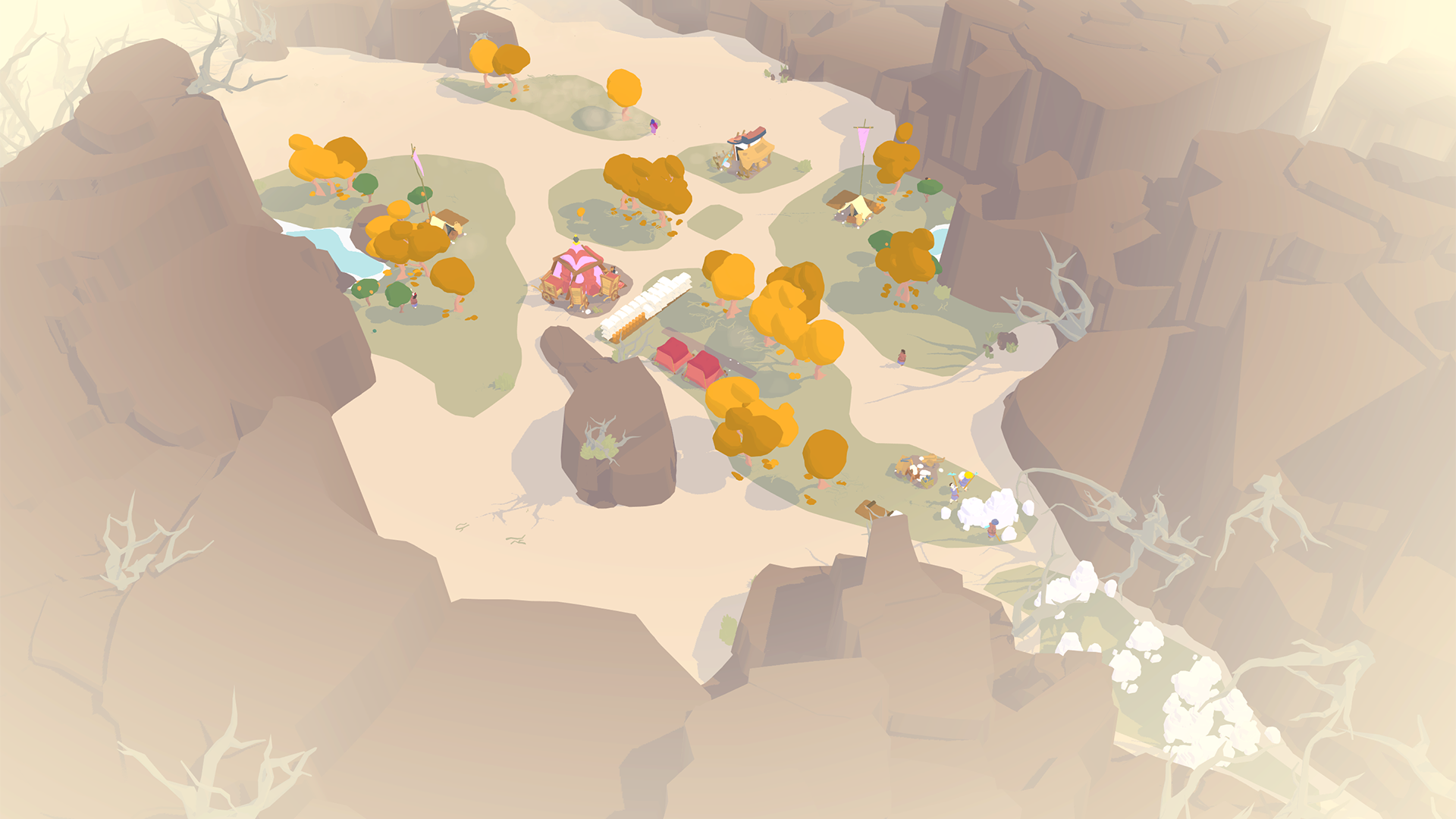
And that’s not to mention that the success or failure of your settlement seemed to constantly be balanced on a knife edge. In order to get anything done, you of course, need settlers – but in encouraging more people in, you’ll also need more food, and resources are scarce. The maps in Outlanders are small and have very limited supplies on offer, meaning I ran into issues with materials on more than one occasion.
If you don’t pay close attention to what your settlers are doing then you can quickly deforest the few trees on offer, which in turn destroys the habitat for your foragable foods and before you know it your villagers are dropping like flies from starvation. And unlike most of the game, the turnaround between budding success and overwhelming failure can happen fast. It was painful to get 50% through a level and suddenly crash and burn, meaning you had to repeat the entire level again – all at that aforementioned snail’s pace. Frankly, it had me pulling my hair out.
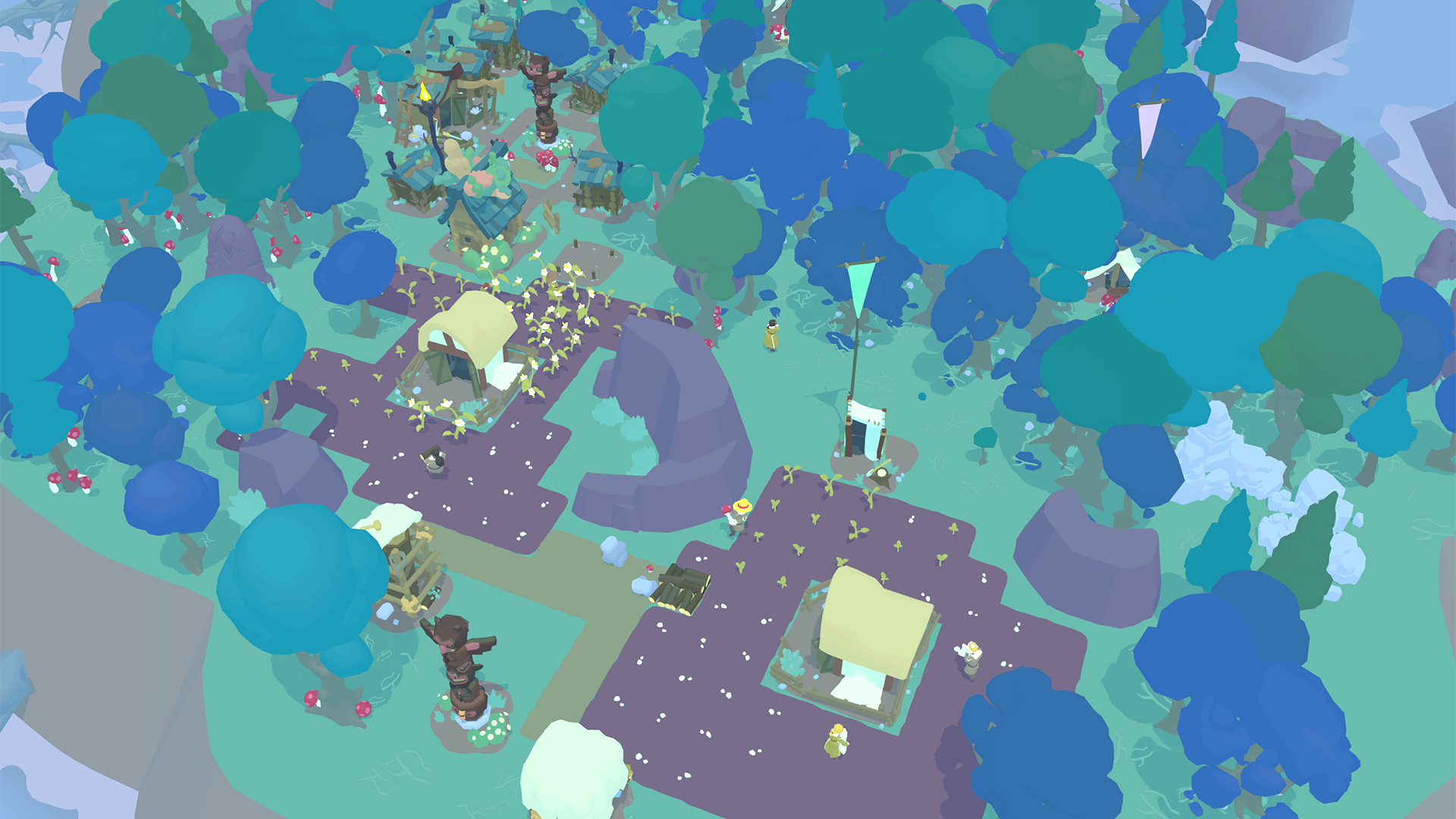
But -and it is a big “but”- once I got the hang of the priorities (namely that you cannot ever have enough people foraging for food from a series of rotating sources), I grew to really enjoy what Outlanders has to offer.
I slowly came to realise that because the scope is so small, (as in there’s maybe only 15 different buildings you can make in the whole game), Pomelo Games have had to dial back the speed to keep you from achieving your goals in just a few minutes, which would Outlanders a rather a throwaway affair. Instead, you’re asked to micromanage your settlers in the most hands-on fashion I’ve ever experienced – almost manually asking just a few folk to cut down those specific two trees, whittle them into planks, erect a new building and put them to work there, rather than having crews of people to do all of that almost on autopilot.
It feels incredibly rewarding to overcome the stringent limitations of the map and your objectives in order to grow a tiny functioning settlement out of just a handful of folks. The margins between winning and losing probably need a tweaking a little, lest people get fed up in trying to find the balance, but there’s a lot to be said for the ‘slowly but surely’ style of gameplay. My favourite level was built around needing to build a ‘Wicker Bread Man’ -a giant glutenous celebration effigy- whilst also keeping your population under 14 people. It really hit home the humble island lifestyle and keeping a close eye on those few folks you have around you. (*Spoiler Alert* thankfully, no-one gets baked alive inside the bready sculpture upon its completion.)
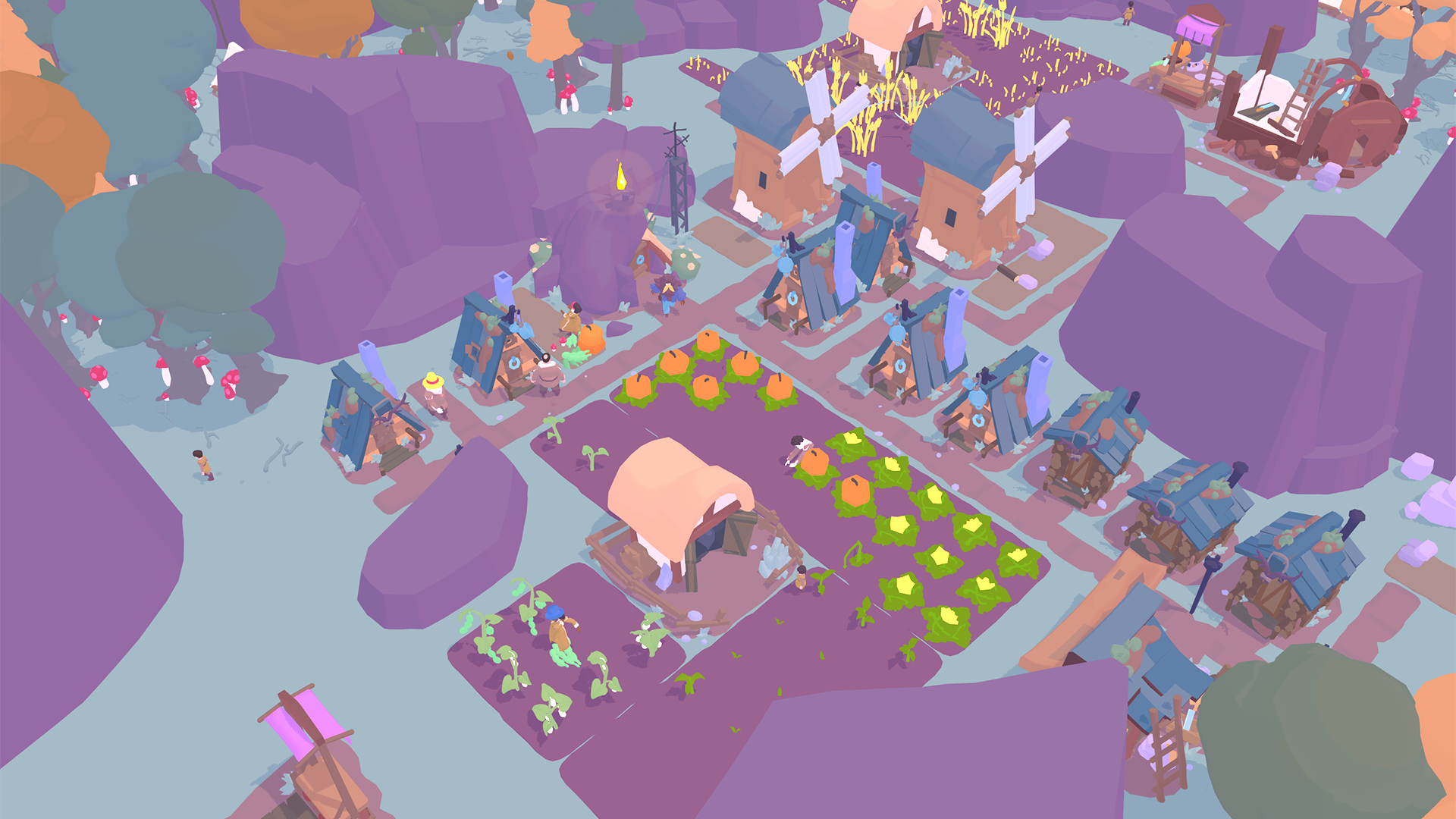
If you like what Outlanders has to offer, there’s some DLC available too; the Flood and Fire and Heir of the Roads packs each add standalone 6 level campaigns that are more story-focussed than the core game, and are pretty good value at less than a fiver apiece.
Outlanders is a small-scale city-builder that pulls you in with the jolly visuals but really gets its hooks in you with the focussed objectives and micromanagement. Things play out at a pace just north of ‘glacial’ which can be relaxing and/or infuriating, but the chill banjo soundtrack will do its utmost to calm the savage beast of your frustration and keep you chugging along. A fun entry to the genre – I loved the stripped back, low-stakes objectives and the need to keep an eye on the smallest details, but the mechanics don’t leave a lot of room for error which can be a headache when you’re learning the ropes.





In the interest of full disclosure, VGamingNews was provided with a copy of the game in order to conduct this review.
UnderDungeon
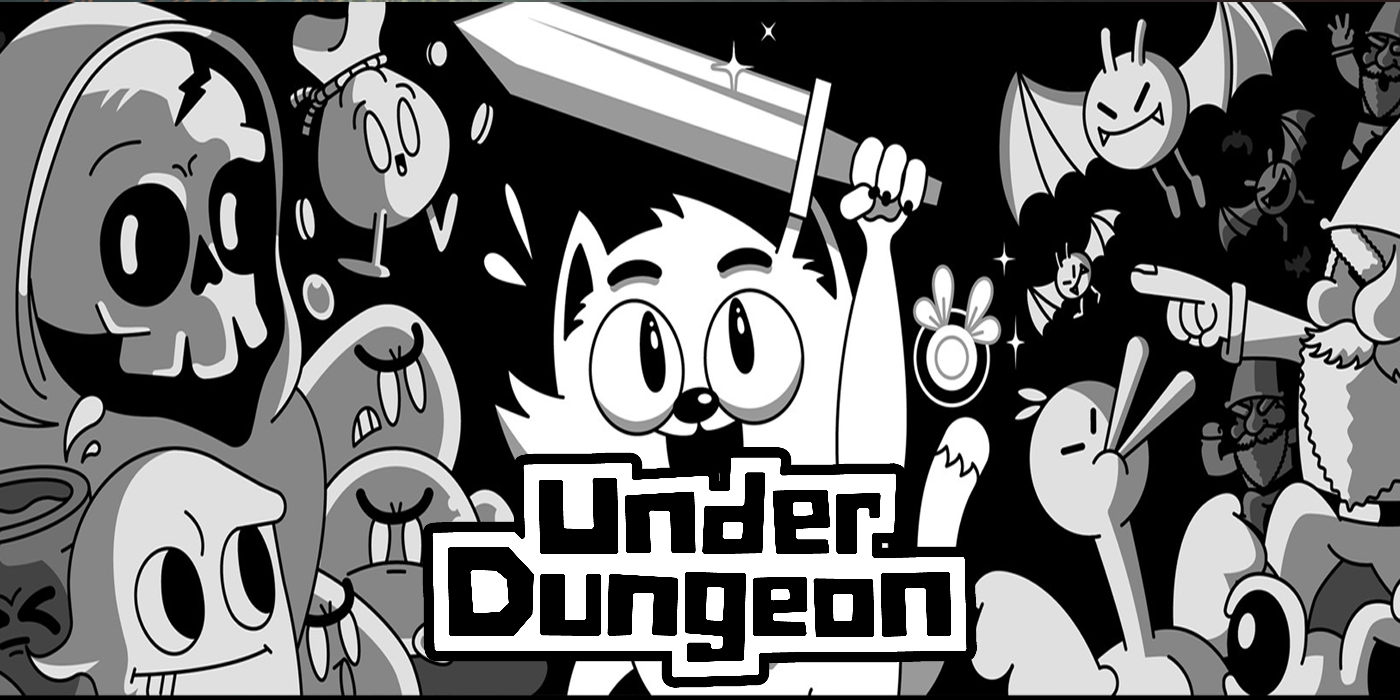

I will forever be a slave to retrogaming nostalgia. I grew up playing video games on -wait for this- cassette tapes (!) on my sister’s big ol’ ZX Spectrum, and some of those early games left an impression on me that I don’t think I’ll ever shake. And it was this sense of nostalgia that piqued my interest in the 1-bit stylings of UnderDungeon – a dungeon crawler from Josyan and Red Deer Games that looked every bit the cassette-loaded classic!
At A Glance
| Scores | |
| Visuals | 3* /10 |
| Sound | 6 /10 |
| Gameplay | 6 /10 |
| Overall | 6 /10 |
| Positives | + Awesome C64-retrostyled graphics + Great soundtrack + Short but sweet with a wacky storyline |
| Negatives | – The old-school aesthetic won’t be for everyone – No great depth of gameplay – Soft locked out multiple times |
| Price (When Reviewed) | £9.99 |
| Our Playtime | 4 hours 50 mins |
| Version Tested | 1.1 |
| Available On | Xbox One, Nintendo Switch, PC |
UnderDungeon sees you play as the cute cat-creature Kimuto, the newly appointed delivery man for the Unlimited Distribution Company beginning life in his new job in order to pay his rent. Accompanied by your fairy companion Max, you’re charged with running entirely random goods to whoever calls up and makes a request, battling monsters and overcoming puzzles to complete the order for your customer. You return to the Unlimited Distribution offices in between deliveries and become familiar with a cohort of wacky anthropomorphic colleagues, including the overbearing gorilla of a manager, Kring Koss, and the twitchily, overly caffeinated Teaffy. It’s a simple premise that’s played into a series of fun adventures that come with a heaped helping of silliness. UnderDungeon leans heavily into this playful energy and is never in risk of taking itself too seriously.
Old school in every sense of the word, UnderDungeon walks closely in the footsteps of Zelda and follows the tried and true dungeon crawler formula to a tee. Each of Kimuto’s deliveries is a foray into a new area of the world and grows his arsenal of weapons and gadgets to help you defeat the baddies and navigate the region. There are upgrades to each weapon stashed in the various dungeons too, allowing you to unleash a handy secondary attack that adds some optional offence if you manage to find them. There isn’t anything especially groundbreaking about any of the weapons or items though, and it often feels like each new item makes the previous one defunct, which is a bit of a shame.
And the weapon upgrades are only tip of the discretionary iceberg, as there’s a fair number of optional elements to UnderDungeon if you’re willing to go looking for them. There are secret rooms strewn throughout every level and all manner of random items that you can collect and trade in to help out other characters throughout the game. Some of these optional elements are a little out of left field, and as part of such a playful world, don’t exactly lend themselves to logical completion – they’re certainly fun when you stumble across them, but I didn’t feel a drive to replay the game in order to find all of the secrets and achievements.
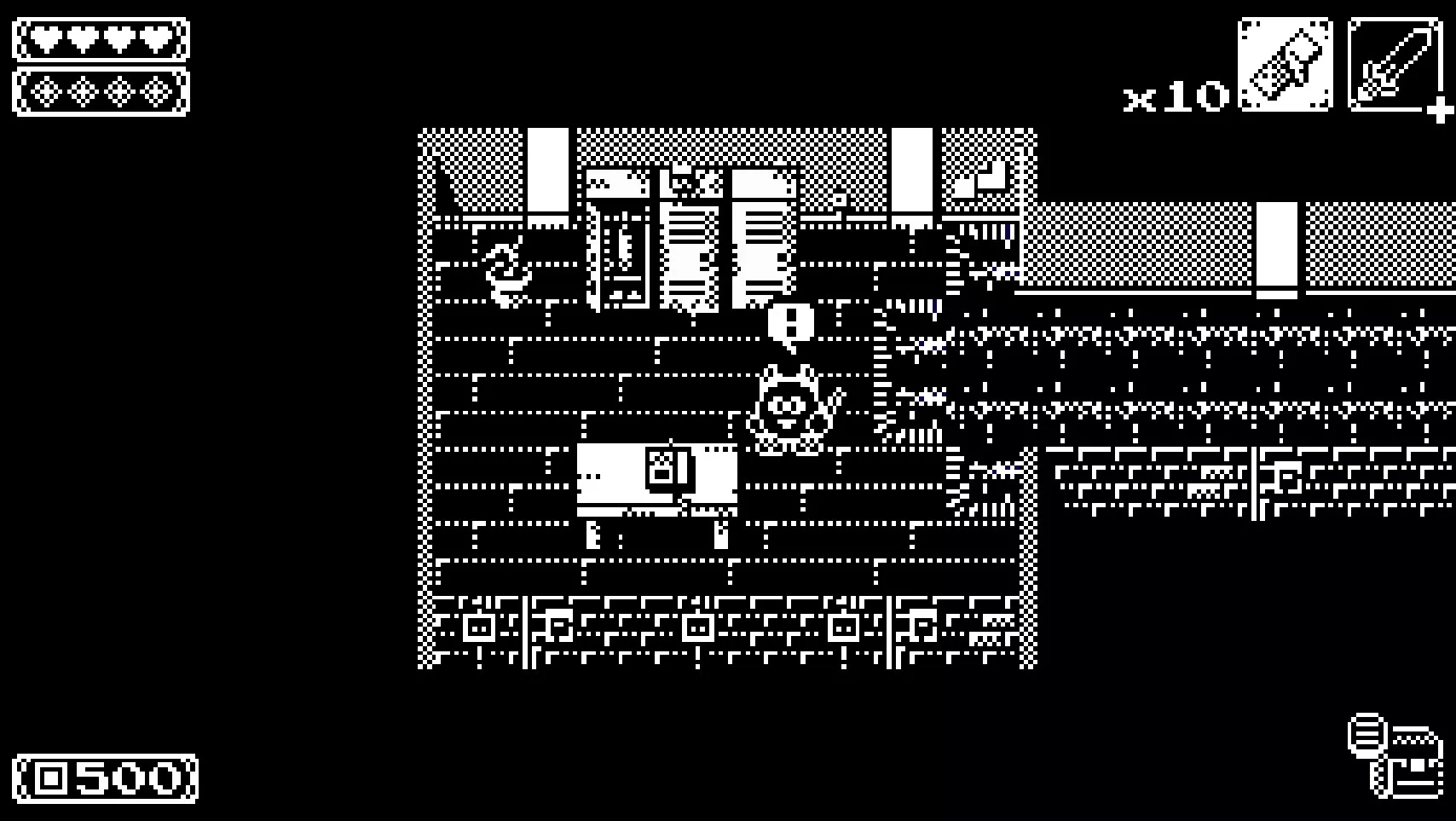
Just a quick peek at the screenshots will show you that UnderDungeon has a pretty unique visual style, harkening back to the days of the Commodore64 or the ZX Spectrum. I found the black and white 1-bit sprites utterly charming, and they immediately reminded me of my earliest memories of gaming. Obviously, this graphics style doesn’t especially lend itself to detail, and there are a few elements that are tricky to discern, but I think that the overall look great, and one that will strike a deep chord with older players and retro aficionados. Of course, there’s a good portion of the modern audience who may turn their nose up at the throwback visual style, and no amount of reminiscing from me will help in that regard, but for those who favour a simple but consistent style over the ultra-polished look, UnderDungeon does a great job.
While the action sounds have a simplicity in keeping with the visual style, the music of UnderDungeon is wonderful, and each new area is introduced with a fresh track that underpins the theme and mood of the locale incredibly well. From the corporate jazz of the Unlimited Distribution offices, to the sombreness of the haunted estate or the frantic Super Meat Boy-esque boss theme, I enjoyed every single piece of music put together for UnderDungeon.
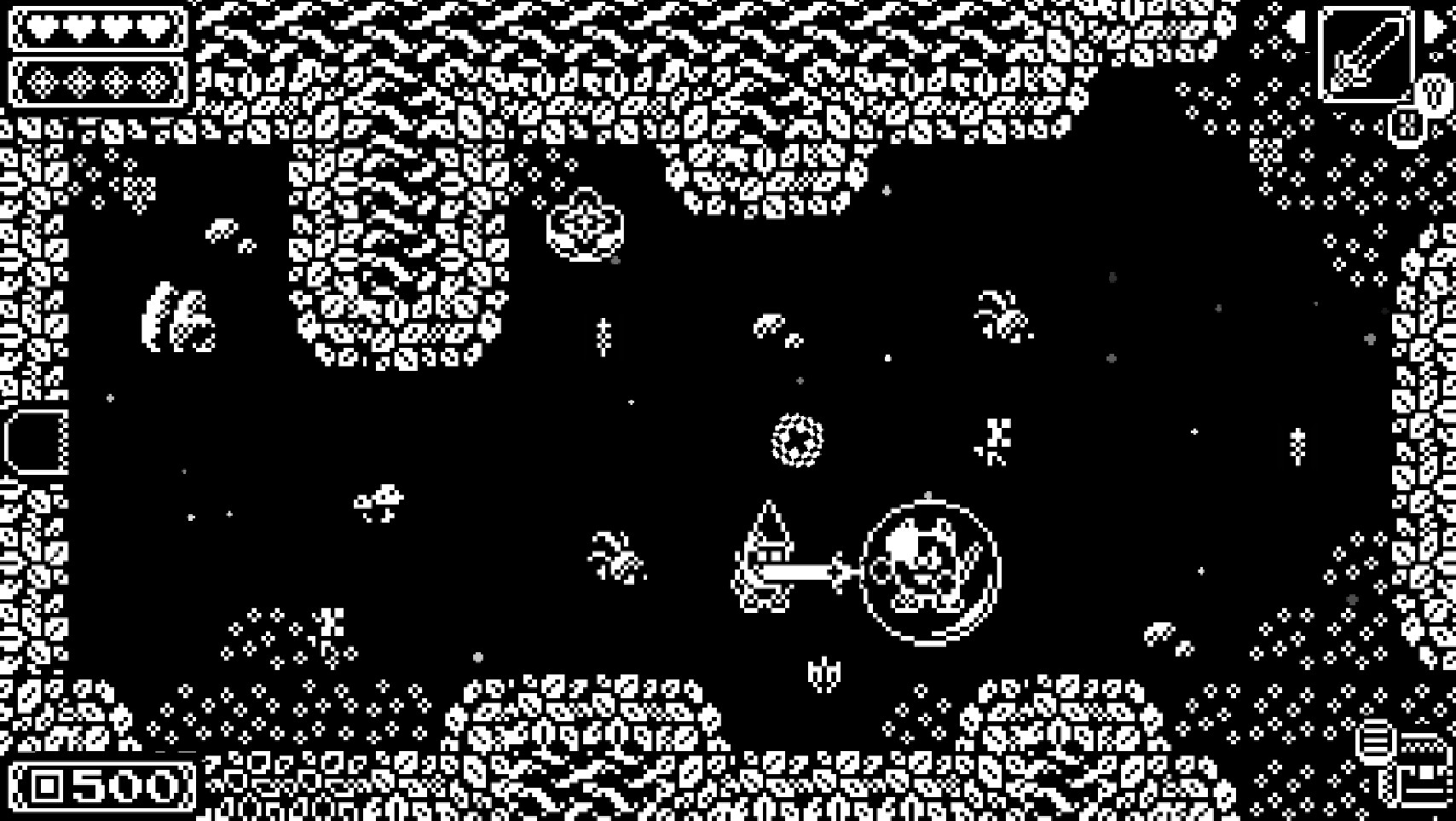
With the visuals and sound scoring major points with me, it’s a bit of a downer that the gameplay is, for the most part, a rinse and repeat affair. Yes, it’s enjoyable enough to trawl through the forests and the mines, bash the 1-bit enemies and see off a usually chunky and fun boss, but there’s little to really get your blood pumping with excitement. In what feels like a pretty overt (and successful) homage to Undertale, there are a couple of moments where the in-game plot is played out through a fun mini game or style change, and these helped break up the standard gameplay nicely whilst also enhancing the playful nature of the story and game as a whole. My favourite sidebar was the prison break scene, when Kimuto gains the ability to turn into a mouse, and you have to help navigate him through a series of tunnels in throwback 3D x 2D ‘first-person shooter’ scenes. The mouse scenes are fantastic, both stylistically and visually, and put a huge smile on my face as I scurried around within the walls.
UnderDungeon is a fun, if by-the-numbers dungeon crawler with a cool throwback aesthetic and well produced soundtrack. A wacky cast of characters offers a playful amble through a fun black and white world in a way that doesn’t overstay its welcome, parlaying its short run time into a short fun time. Inspired by the timeless appeal of The Legend of Zelda and the zaniness of that modern classic Undertale, UnderDungeon does a good job of offering a nod to both titles while missing the originality that made each so beloved. That said, imitation is the greatest form of flattery and UnderDungeon is a fun way to wile away a few hours.
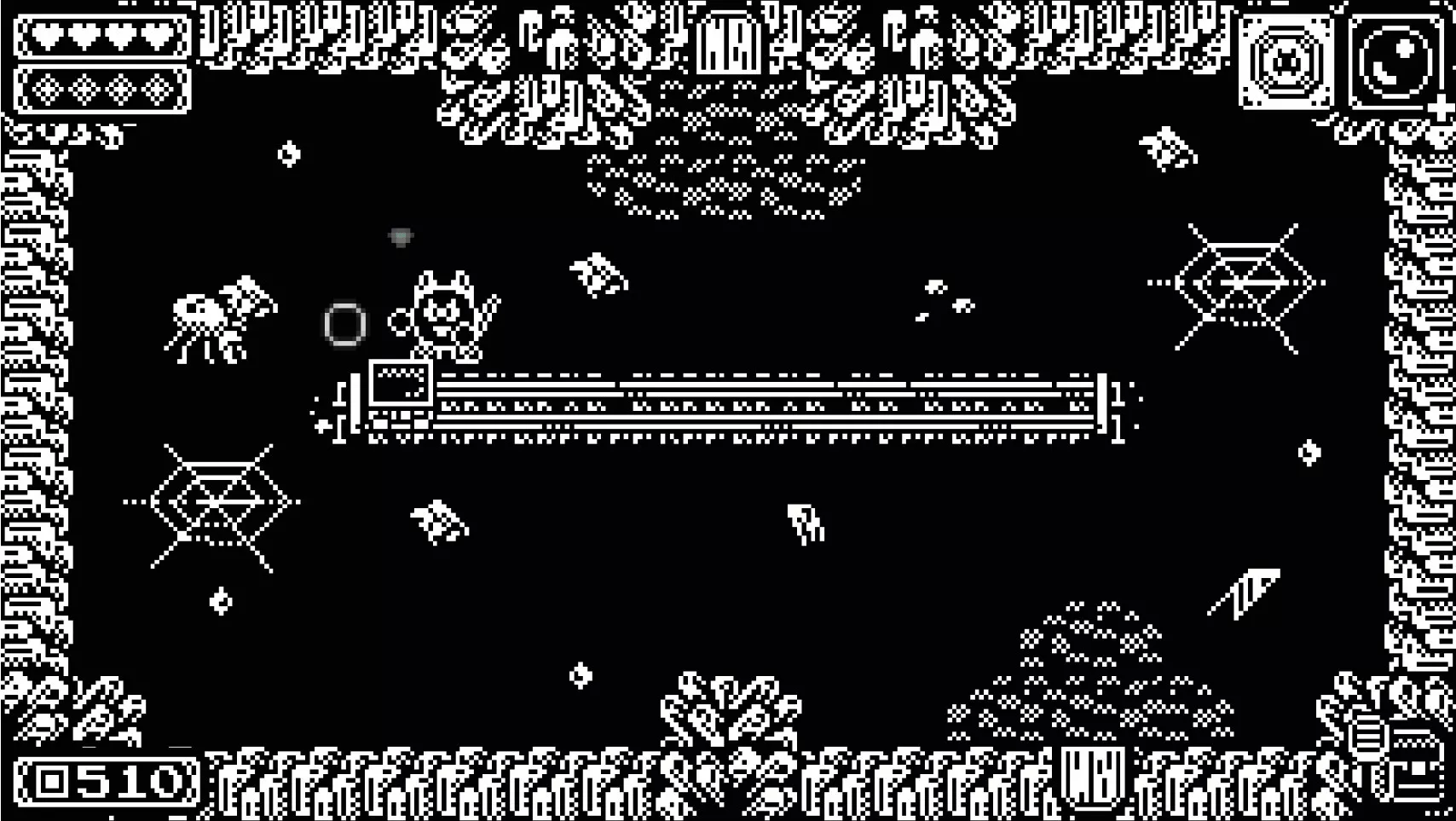


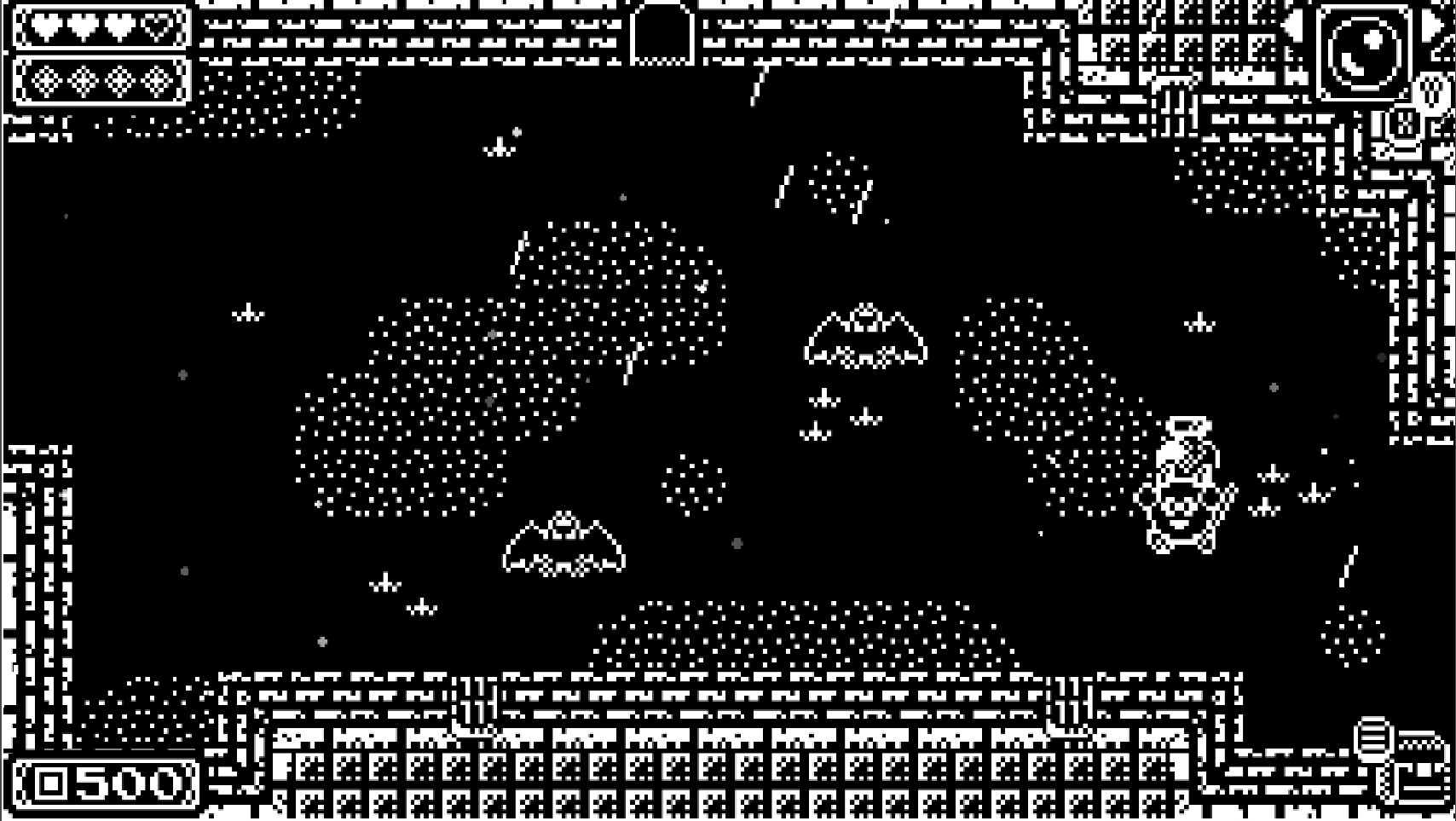
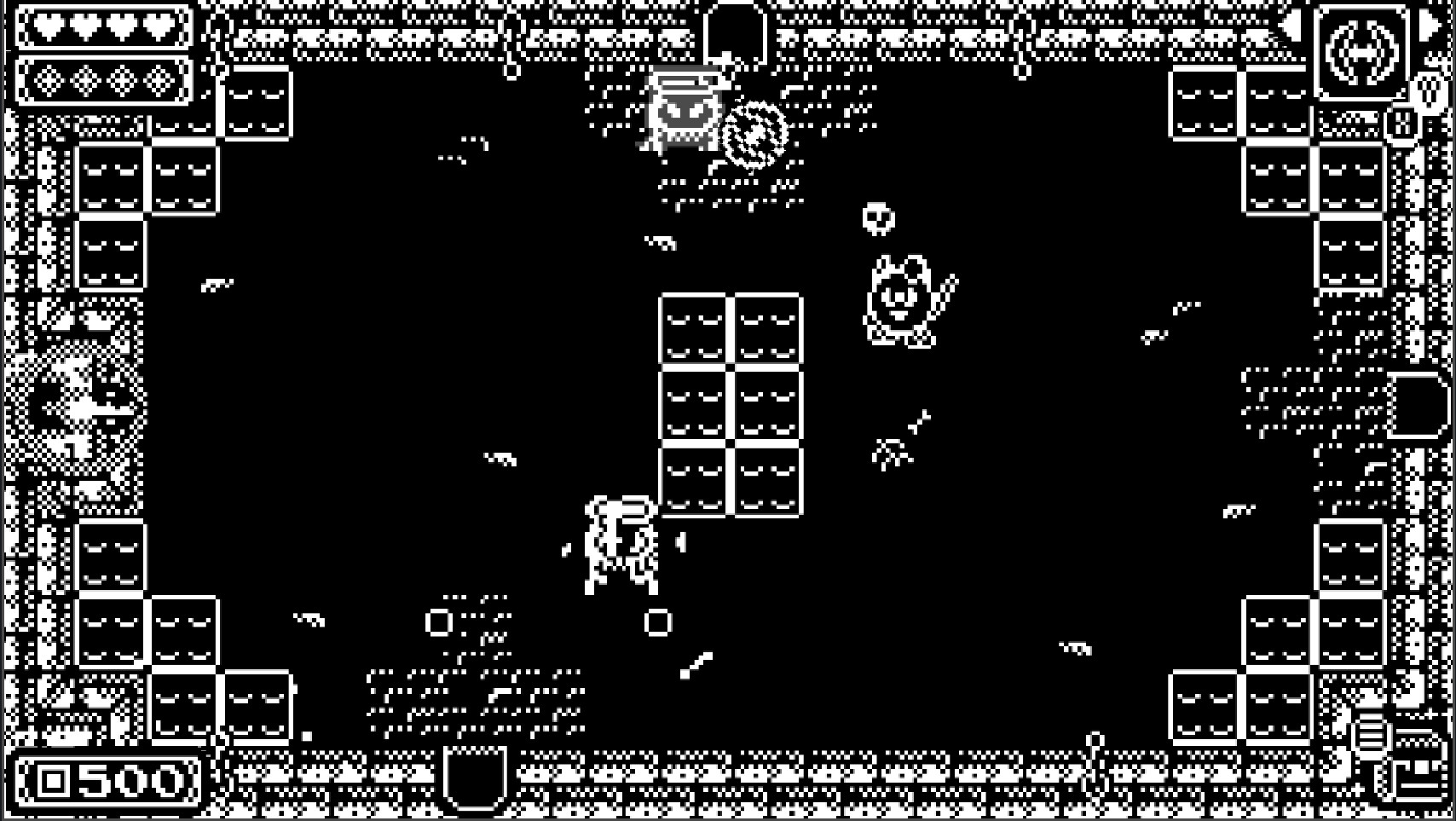
In the interest of full disclosure, VGamingNews was provided with a copy of the game in order to conduct this review.
Did you like this review? If you think we’ve earned it, you can head over to our Buy Me a Coffee page to offer a donation as a pat on the head for a job well done.
Terra Invicta
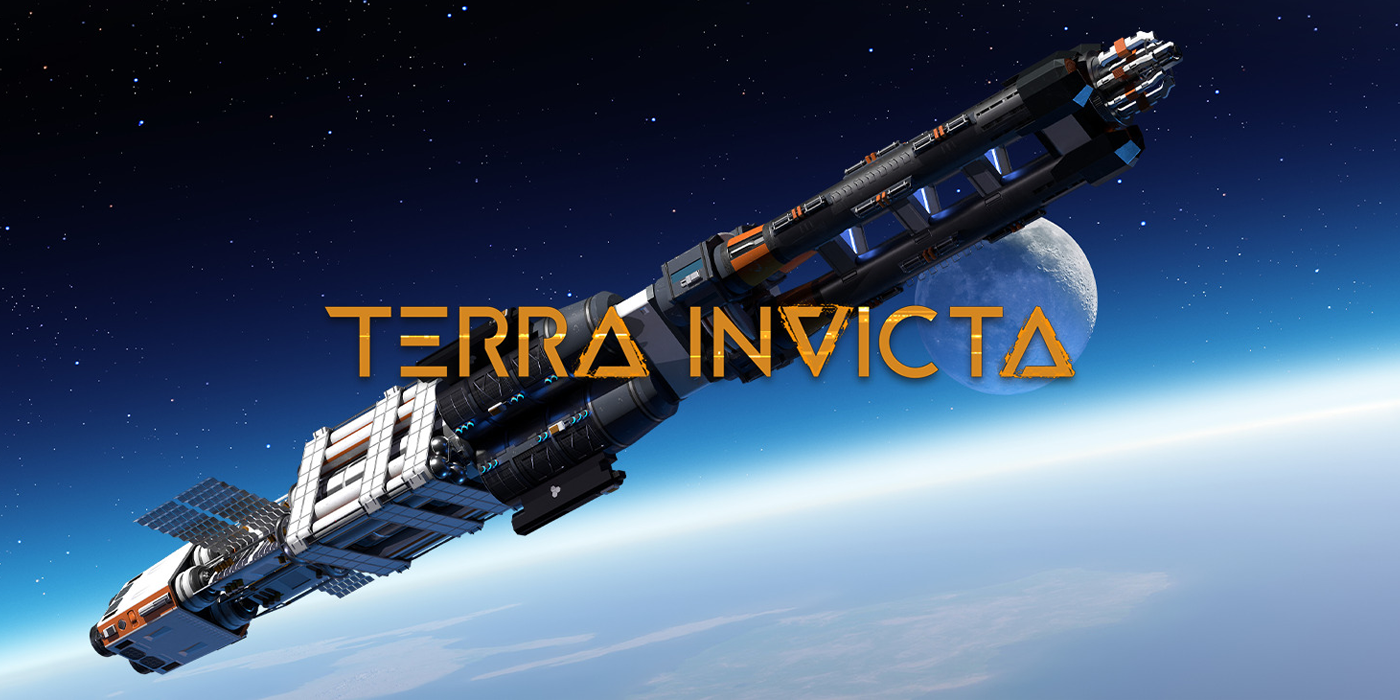

Terra Invicta is a game I had on my radar for a long time. The development team behind it are the creators behind the XCOM mod, The Long War; a huge expansion in scope, depth and breadth of the 2012 Firaxis remake of the tactics/strategy classic. I sunk many, many hours into fighting the Long War, with my latest attempt only last year ending, once again, in gruelling, glorious failure. Terra Invicta is a new and original game from that same team, and doubles down on the strategy and scope of XCOM while leaving the tactical battles behind. You’re not just managing the resistance, now you’re charged with building it, and the flexibility you have over your methods, planning and even goals is almost overwhelming. With an area of operations spreading out from Earth to cover the entire Solar System it’s frankly impressive Terra Invicta functions at all, and that it does so as well as it does is a truly stellar achievement.
At A Glance
| Scores | |
| Visuals | 8 /10 |
| Sound | 7 /10 |
| Gameplay | 8 /10 |
| Overall | 8 /10 |
| Positives | + Deep strategic gameplay + Huge scale and scope + About four games in one |
| Negatives | – Can be overwhelming, at first – Weak tutorialising – Some areas overdeveloped compared to others (SPACE!) |
| Price (When Reviewed) | £34.99 |
| Our Playtime | ~20 hours (Not nearly enough!) |
| Version Tested | 0.3.49 |
| Available On | PC |
For all that I’ve mentioned XCOM in the context of the history of Terra Invicta, it doesn’t play at all like Firaxis’s titan of the tactics genre, which I found quite refreshing. As much as I love shuffling my guys between cover under heavy sectoid plasma-fire, things have moved on a fair bit since 2012, and recent entries in the tactics field such as Midnight Suns or Daemonhunter have pushed the modern version into quite new territories. Terra Invicta instead plays almost more like a board game, reminding me a fair bit of something like Pandemic, though with the scope and scale dialled up to eleven.
The real meat of the game – the early game, at least – is a sort of political sim. You have a choice of factions, all with widely different goals, but all play roughly the same as you attempt to take control of Earth’s resources. You’ll do this by sending your agents to perform various tasks in different countries around the world, from rallying support to political assassinations. There’s a rough turn-based structure, though events play out in real time, with success or failure dependent on skill checks on your characters and the resources you are willing to invest in their success.
As you progress you’ll gain control points – representations of various state operati, from the legislative/executive branches of government to mass media, trade unions, etc. Gain total control of a country and you can direct its policy. You’ll also need to defend your control points against the other factions as they attempt to do the same across a highly detailed map of the globe. It begins relatively slowly, exploratory almost, but very quickly escalates into a quite brutal cloak-and-dagger conspiracy sim worthy of a really good X-Files knock off.

And honestly, if this was the full game, I’d be pretty happy! I spent a fun evening enacting Nigel Farage’s worst nightmare as an aggressive conspiracy consolidating and federalising Europe, another trying and failing to break into China against the fascist Humanity First faction who wormed in just ahead of me. It can take a false start or two to figure out which levers do what, and where your focuses should be, but there is a solid game in here in its own right.
But remember the whole alien invasion thing? I mean, I didn’t win every one of my games, but whatever faction you’ve selected and whatever goals they may have, they all hinge on engaging with the looming threat. Each of those control points you’ve been struggling over down on Earth generates resources. For the most part these are pretty standard – money, influence, operational capacity etc., and all functioning as a kind of mana system for your agent interactions. But there’s another key resource – Boost. Boost is a kind of abstract representation of your ability to put stuff in space. At the start of the game there’s not much available – the game begins in September 2022, and the powers able to put things in space are pretty much as you’d expect – America, Russia and China. Boost is, however, far and away the most vital resource, long term. If your early game strategy isn’t focused around it then you will quickly find yourself left behind, literally, by the competition.
There are interesting ways to go about things beyond trying to crack open a superpower though (stronger countries being harder to infiltrate than smaller ones). For example, in my Farage’s Nightmare scenario, a united Europe is easily wealthy enough to kick-start a space industry, if you set the focus and policy accordingly. Russia’s Boost power is all located in Kazakhstan, as all good space nerds will know, and so instead of trying to take control of Russia itself you can try and separate Kazakhstan from its partner and essentially steal Russia’s space program. They may not like this.

Conflict on earth can quite easily spark and spiral. The game begins with the real-life war in Ukraine in full swing, and other wars – up to and including full nuclear exchanges – are possible, either driven by the factions and their conflicts or just the unpredictable nations themselves. There is a lot being simulated here. Nuclear war can lead to nuclear winter and widespread devastation. Climate change is a thing. You could play out the opening stages of this game in some wildly different ways, setting up vastly different scenarios, and somehow I’ve written almost 1,000 words and we’ve not even gotten to space yet.
With Boost accumulated, the solar system beckons. Probes, space stations, moon bases, asteroid mining…. There is a lot. And, easily forgettable until they very much aren’t, above it all hangs the Damoclean sword of the alien invaders.
While the Earth-based conspiracy/political game plays out like a board game, with actions assigned to your agents, and space exploration more a management game of spending your resources to, well, get more resources, there’s an entire space combat game buried in the mid- to late-game as well. I’ve not delved as deeply into this as I’d like, though it is surprisingly complex – Newtonian physics, many levels of equipment and weapon systems, and subsystems… it’s an order of magnitude more complex than something like Homeworld, and while some of the micromanaging can be automated or ignored, given the abstract level in most of the game, a bit of a strange focus that shows its mod-maker roots. Clearly, this was someone’s passion – there are lagrange points modelled, for god’s sake, something I don’t think I’ve seen in a game outside Kerbal.

Terra Invicta is a huge game, and one that had I put 100 hours into I still wouldn’t really feel like I’d touched the sides. I’ve not really gotten into the end game of it. I’ve not tried any of the factions who focus on trying to cooperate with the aliens, rather than fighting them. For all I’ve messed around and experimented in the early game, there’s still plenty of different starting directions and strategies I want to play around with. In this review I’ve also not touched on the plot, which while nothing groundbreaking, is still a different enough spin on the alien invasion trope to keep things interesting.
Terra Invicta is a deep, interesting and engaging game that doesn’t quite play like much else out there. It spins a lot of plates and, by and large, manages to keep them in the air. There’s a political and conspiracy sim, a light-touch grand strategy game, a resource exploration and exploitation game and a full space-combat sim – any one aspect of which could have easily been spun out into a stand-alone game. There’s a whole research and tech tree system that works brilliantly differently from anything else I’ve seen in a game like this, with a competitive-cooperation angle that is really interesting! I’m genuinely surprised the game works as well as it does – it had sat on my Steam wishlist for many years as a curiosity; something I wasn’t sure would ever see a release and something I’d have been entirely unsurprised to find an over-ambitious failure. That I didn’t is a real source of delight – if anything I’ve touched on sounds at all intriguing to you then you owe it to yourself to sign up for what, in a year of big releases, might just be 2022’s most interesting game.
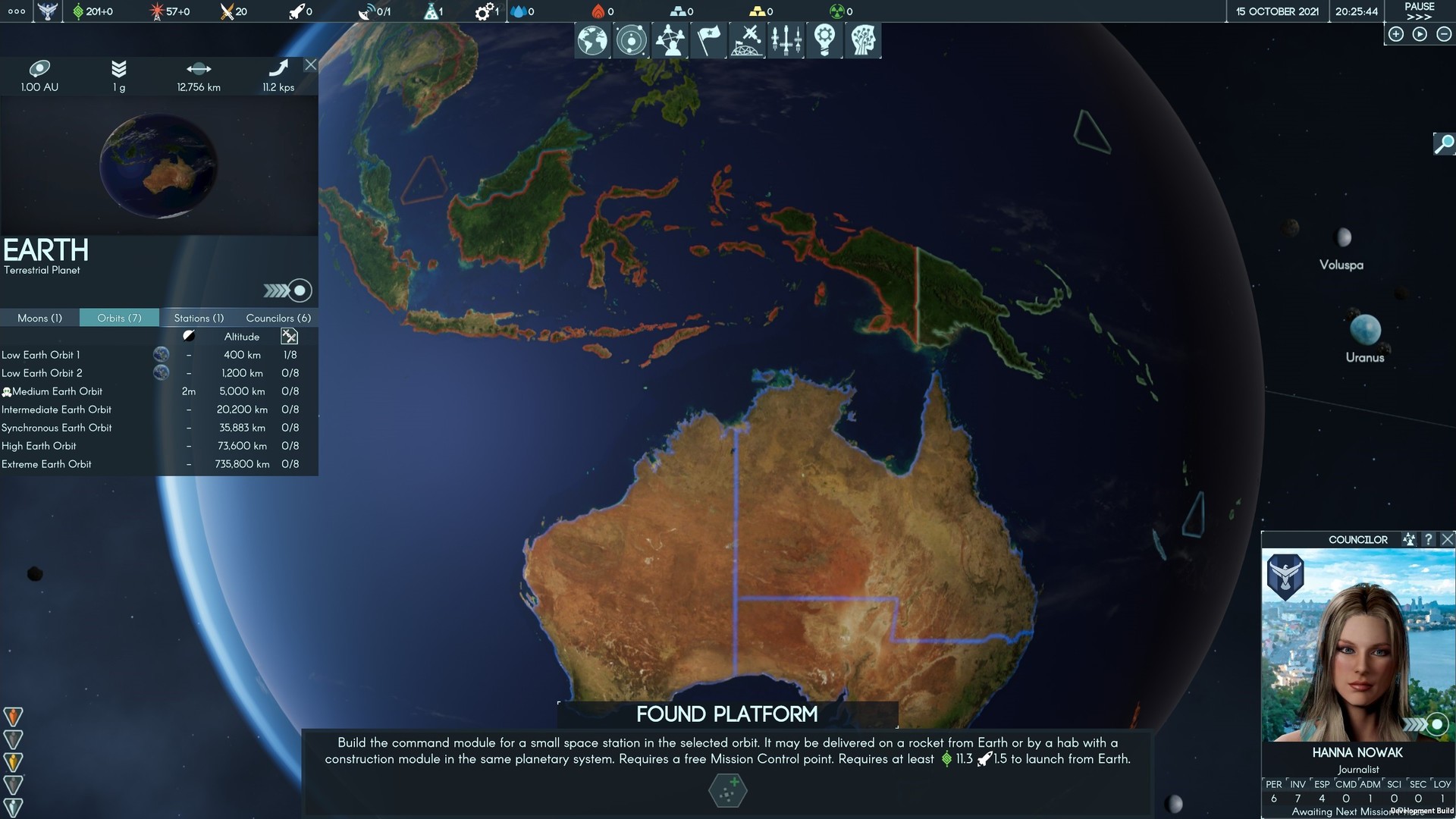
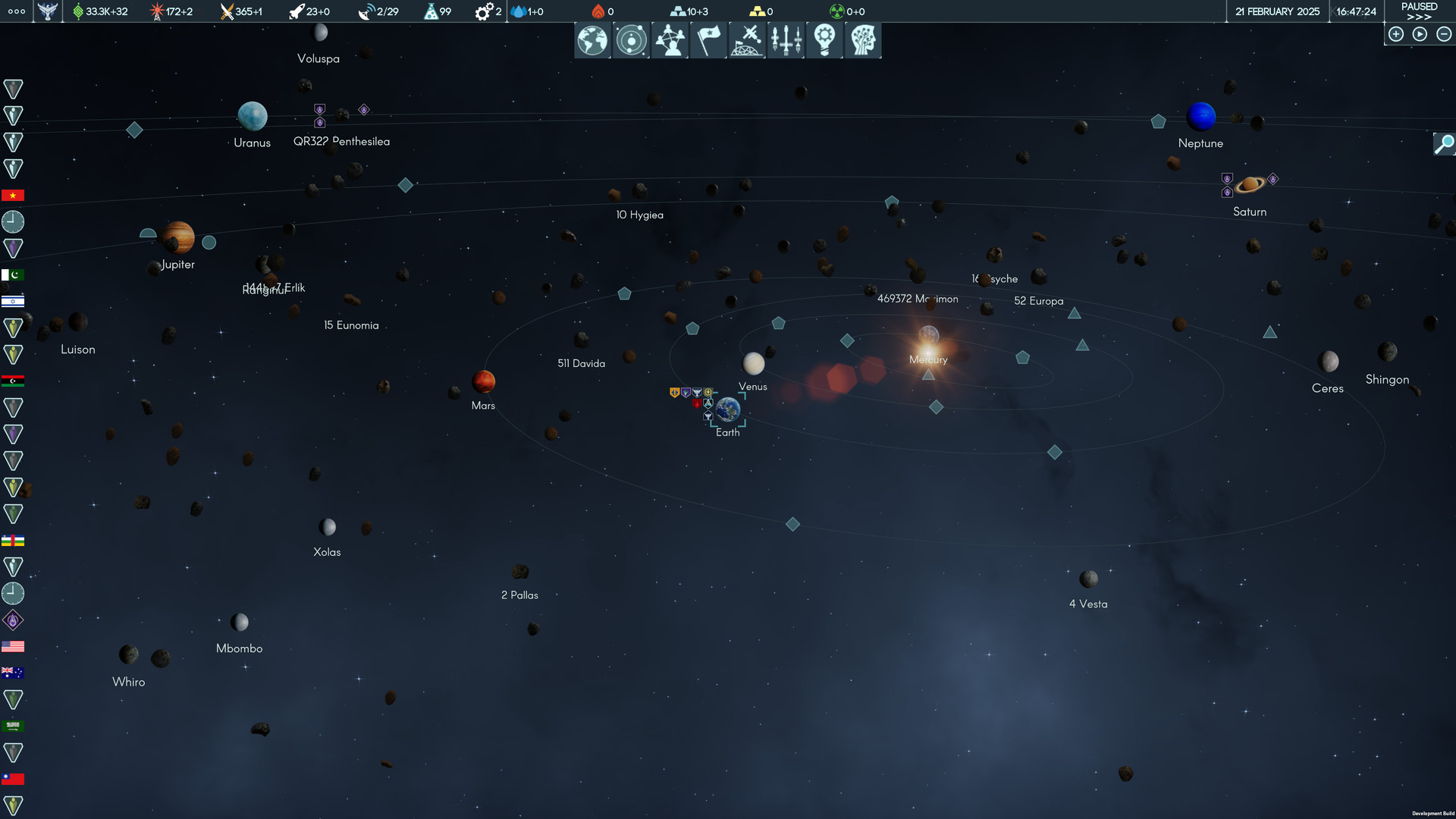
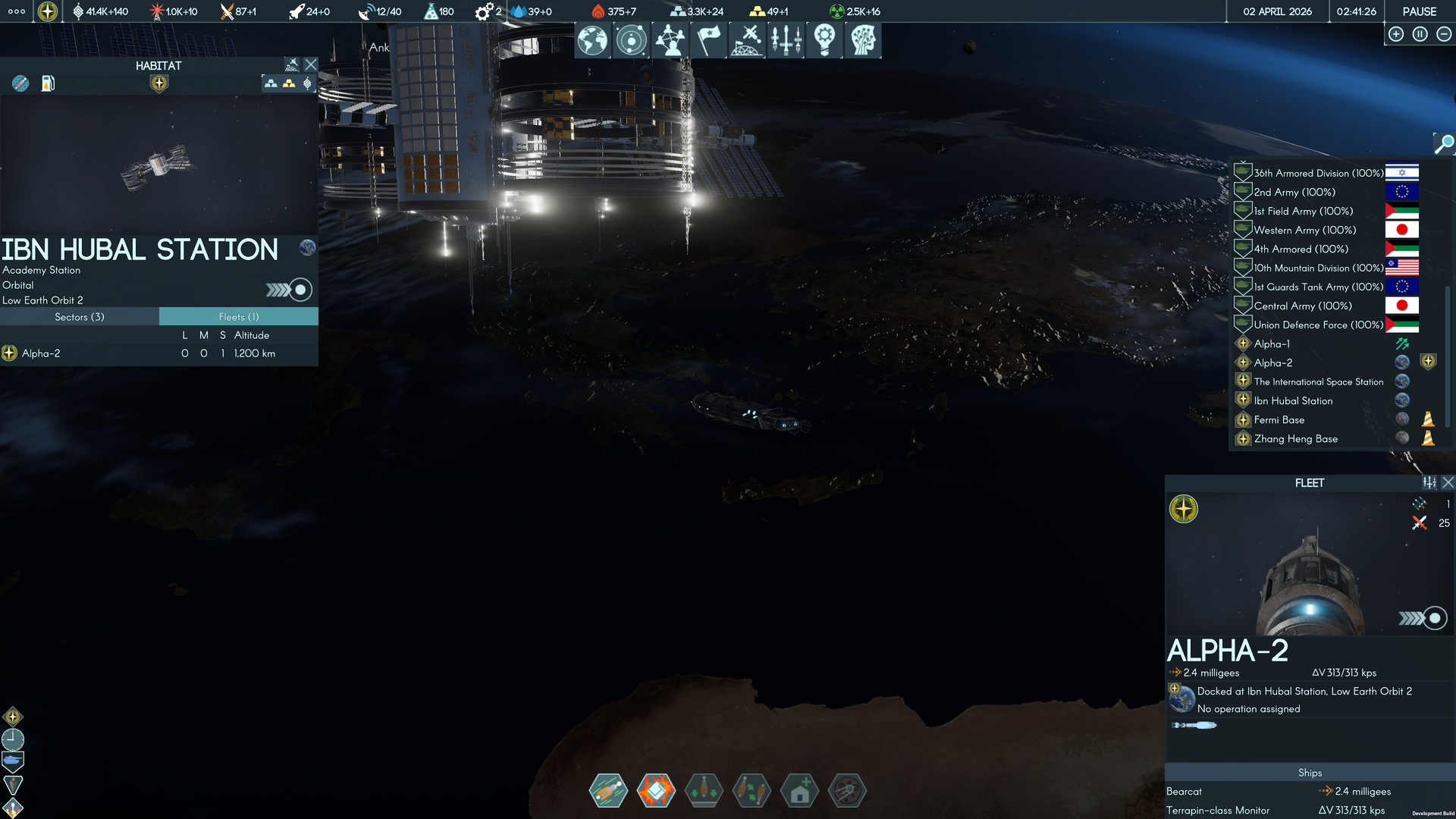
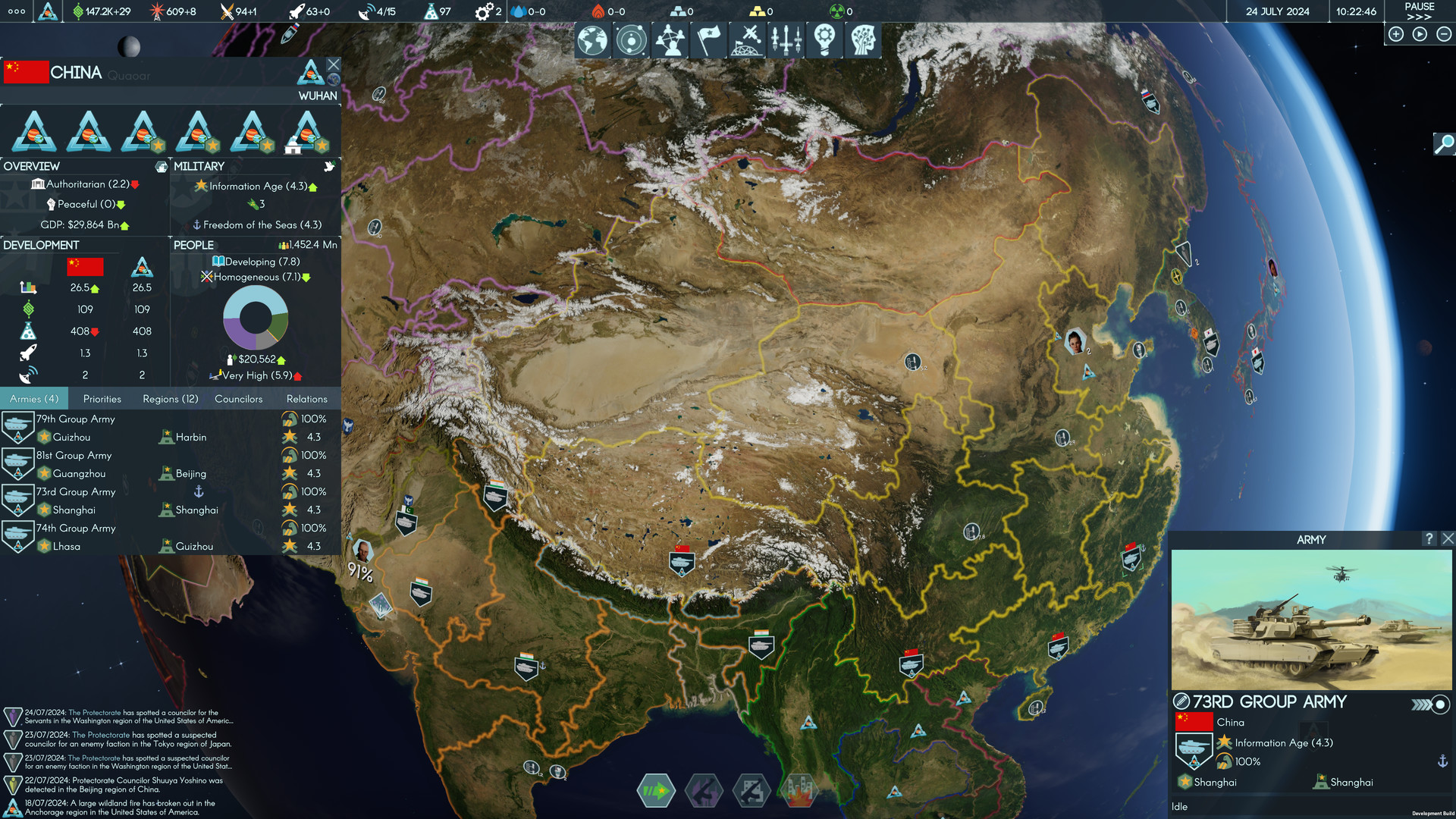
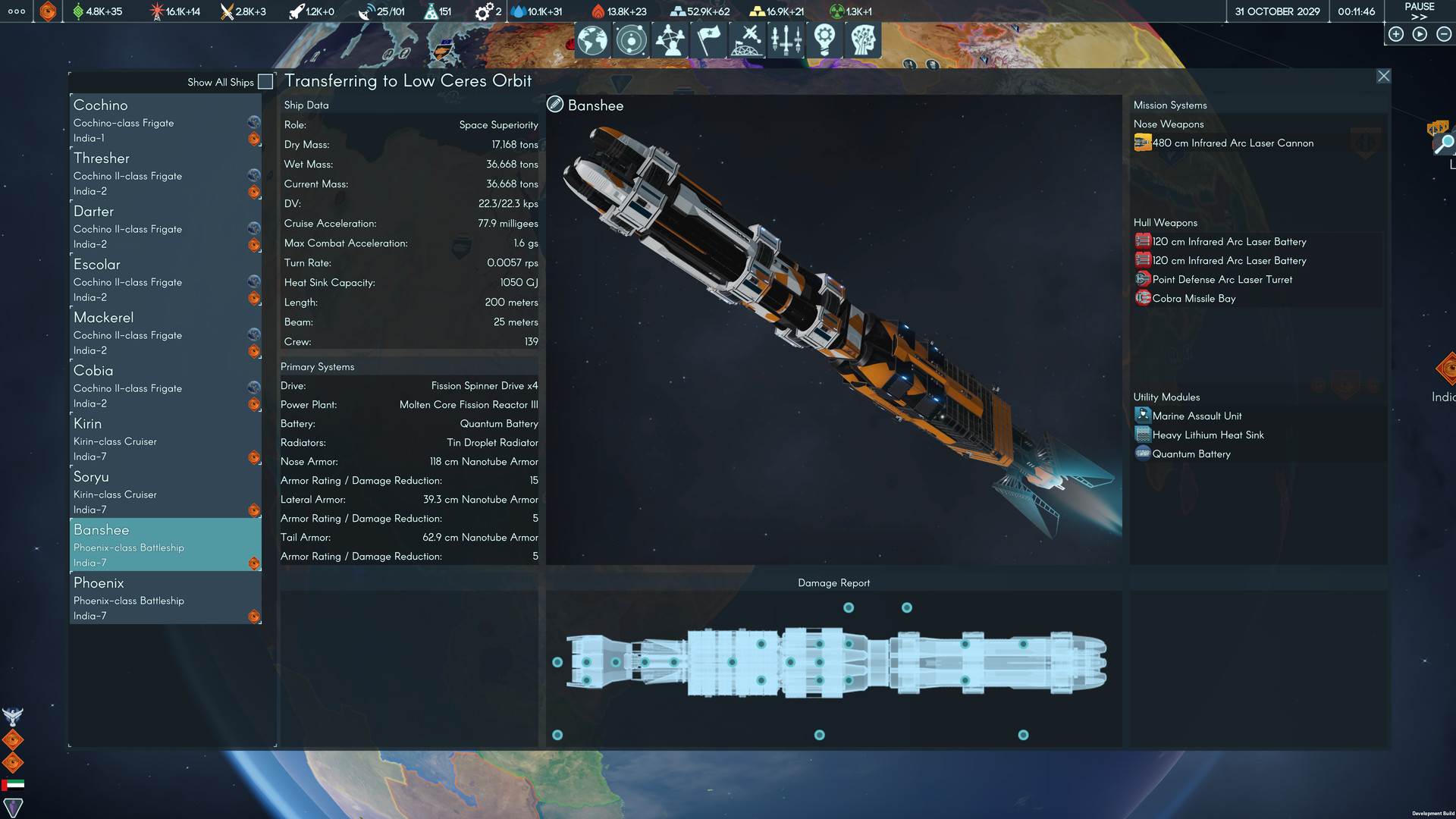
In the interest of full disclosure, VGamingNews was provided with a copy of the game in order to conduct this review.
Moonscars
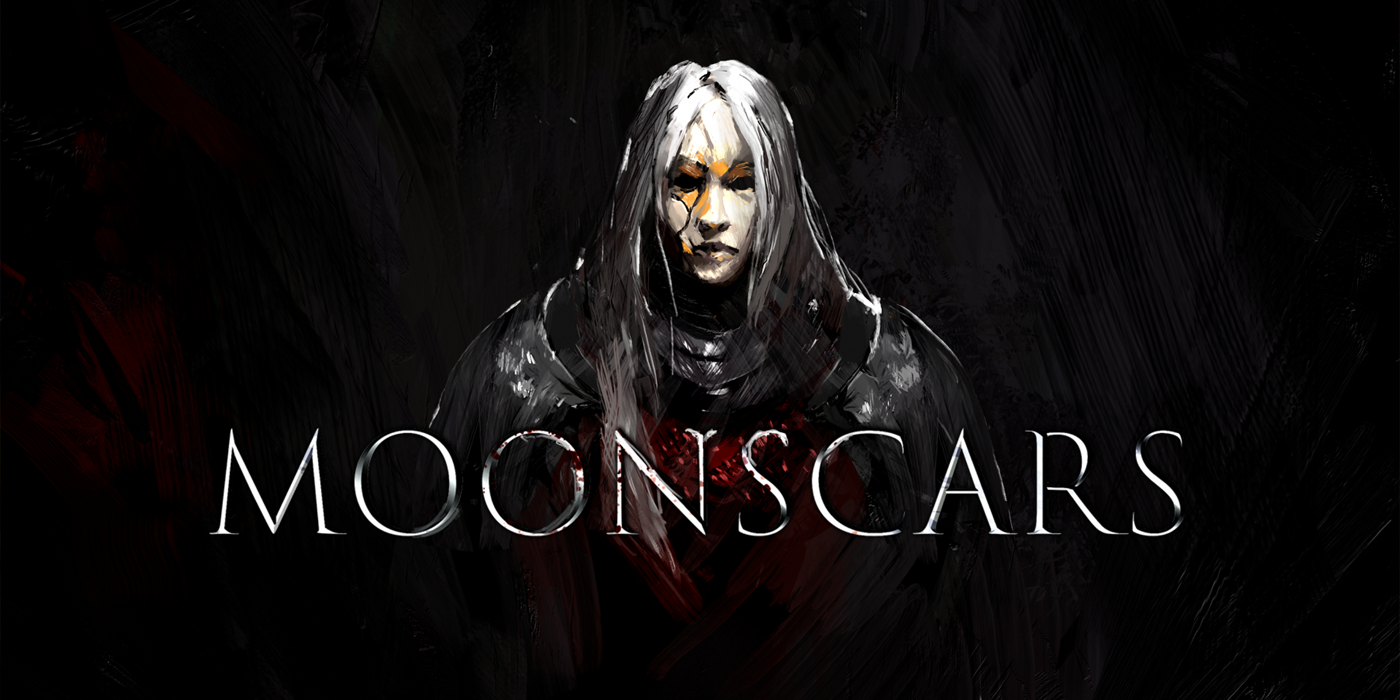

Moonscars is – stop me if you’ve heard this one – a 2D soulslike with some metroidvania/roguelike elements mixed in, in which you explore a crumbling post-apocalyptic mediaeval fantasy world, engage with obscure story elements and cryptic NPCs, fight through tough enemies and tougher bosses, and where the challenge is high and death is frequent. No, wait, come back!
At A Glance
| Scores | |
| Visuals | 8 /10 |
| Sound | 7 /10 |
| Gameplay | 7 /10 |
| Overall | 7 /10 |
| Positives | + Fun, fast paced combat + Well balanced challenge + Interesting world design |
| Negatives | – Hard to parse mechanics – Little stand out from the field – Familiarity breeds contempt |
| Price (When Reviewed) | £15.99 |
| Our Playtime | 5-6 hours |
| Version Tested | v1.4.007 |
| Available On | PS5, PS4, Xbox Series X|S, Xbox One, Nintendo Switch, PC |
Moonscars has the curse of being quite a good example of a genre that is getting increasingly crowded with very similar titles, and while it is perfectly competent, I’m not quite convinced that it does enough to stand out from the crowd. It’s closest stablemates would be the similarly retro-pixel art style of Blasphemous, though the combat has more of the fast-pace of Dead Cells, while it’s plot and deeper mechanics are more reminiscent of FromSoftware’s output – and not the nice, well polished Elden Ring but the more deliberately obscure and messy Dark and Demon’s Souls.
I’ll admit it does feel a little reductive to write about Moonscars almost entirely in comparison with other games in the genre, but it’s hard to imagine the game having much appeal to anyone not already well versed with the language of these games. It opens with a monologue that doesn’t make a whole lot of sense, and quickly drops you into its world of brutal, fast-paced combat. If you’re not coming to it with some expectation of how these games work it isn’t really ready to meet you halfway.
If, however, you are coming to Moonscars as a veteran of Lordran and other similar locales, there’s quite a bit to recommend. The combat, first and foremost, feels excellent. It’s fast paced and fluid in a way that not many of these games outside of Hollowknight or Dead Cells manage, and while I tend to prefer the slow and weighty style myself it does feel pretty good to dodge, slide and parry your way through a room of undead killers, dispatching them as you go without taking a hit. A key part of the play style is having failure feel like a consequence for your actions (or lack thereof), rather than randomness, and by and large this is something that Moonscars mostly nails.
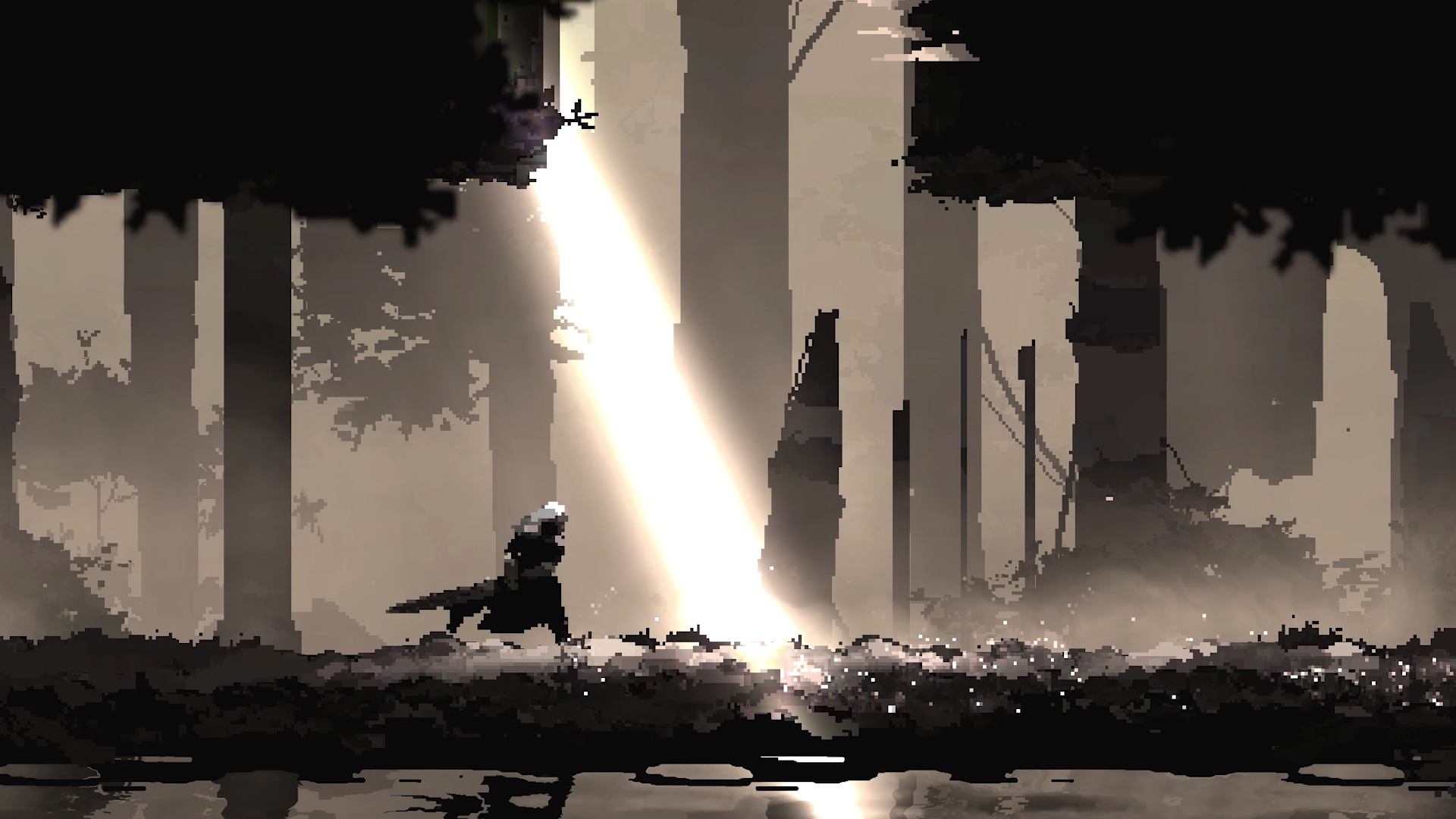
Combat is a slight variance on the usual light-attack/heavy-attack, dodge/block mechanics. You have those, sure, but the heavy attack is more of a knock-back mechanic, while special secondary weapons add considerable customisation options to your build. A rogue-like element whereby upgrades are lost on death encourages mixing things up a little more than usual, and that this is pulled off without feeling punishing is a testament to the solid design and thought put into how these mechanics will work. The power-curve of the player is not the linear upwards trend you may expect, and that was certainly something I found refreshing.
Less refreshing was the game’s inability to clearly explain a lot of these mechanics, leading to a fair amount of trial-and-error. In a rogue-souls-metroid-castle-a-like I’m used to having to work to understand the cryptic hints towards a plot, but am less forgiving of the cryptic hints towards understanding the death and save point mechanics. Luckily the game is not overly punishing in its early stages, so there’s plenty of time to find your feet, but failing to explain this stuff clearly is certain to put some players off, especially those new to the genre.
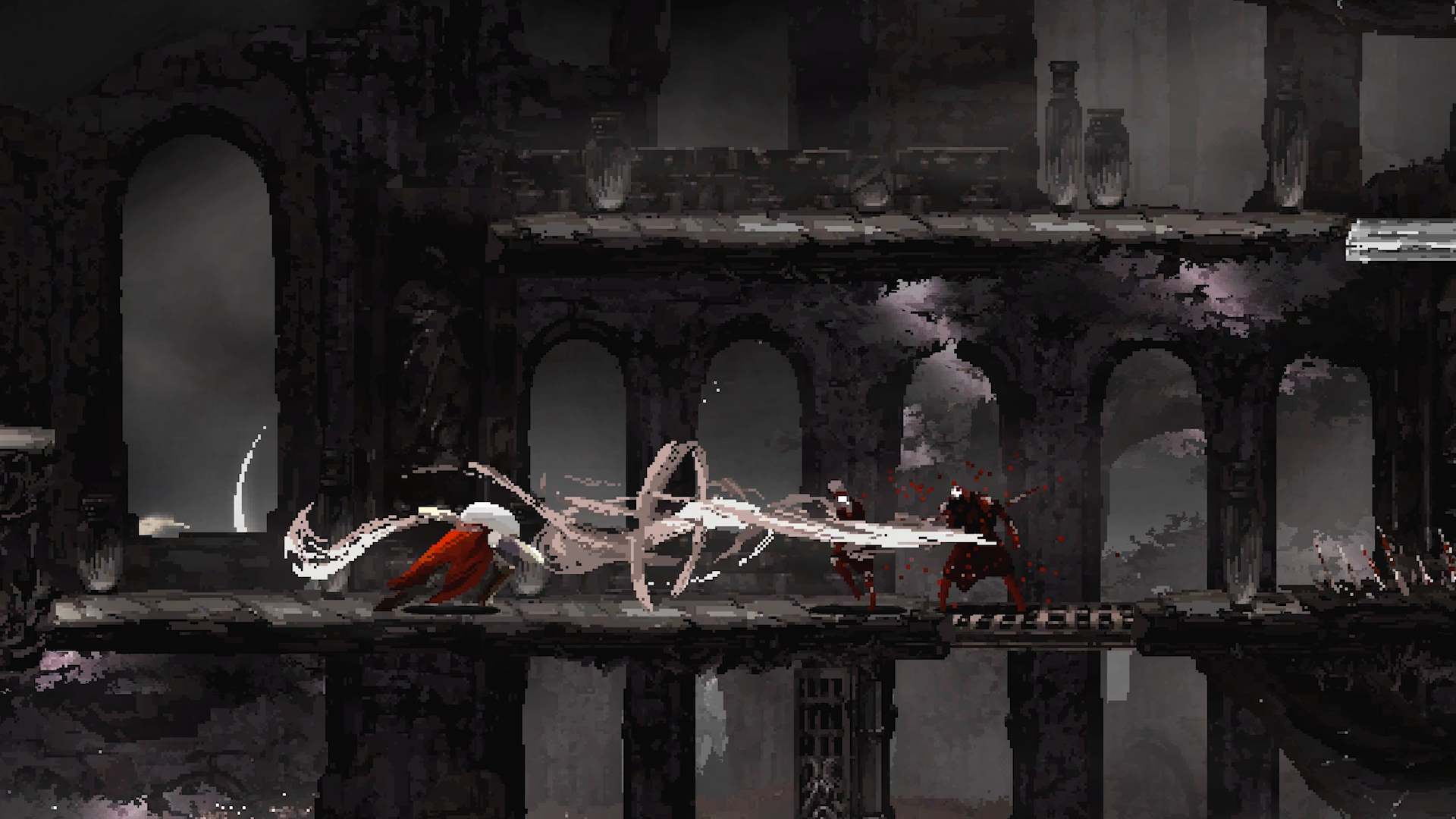
Graphically Moonscars is very much going all-in with the pixel-art stylings that have become quite standard for the genre, and while it does look nice, a part of me wishes that some more designers would look to be a bit more adventurous. There is a reason that the settings of Hollowknight’s Hallownest or Tails of Iron’s not-Redwall have stuck with me beyond the island-prison of Dead Cells. Enemy design is interesting, with the different types of opponents mostly clearly recognisable, yet few stuck in my imagination.
Ultimately a failure to stick in the imagination is my main criticism of Moonscars. Had this game come out a few years earlier I would almost certainly be more favourable to it, but as it stands it feels a little too familiar to other games I’ve played extensively, and with not quite enough going for it to make it shine. It’s a blast to play, and the combat feels great, but when there are so many other games with that and great character, and great story, and great world-building, so there’s just not quite enough to drag me back in.
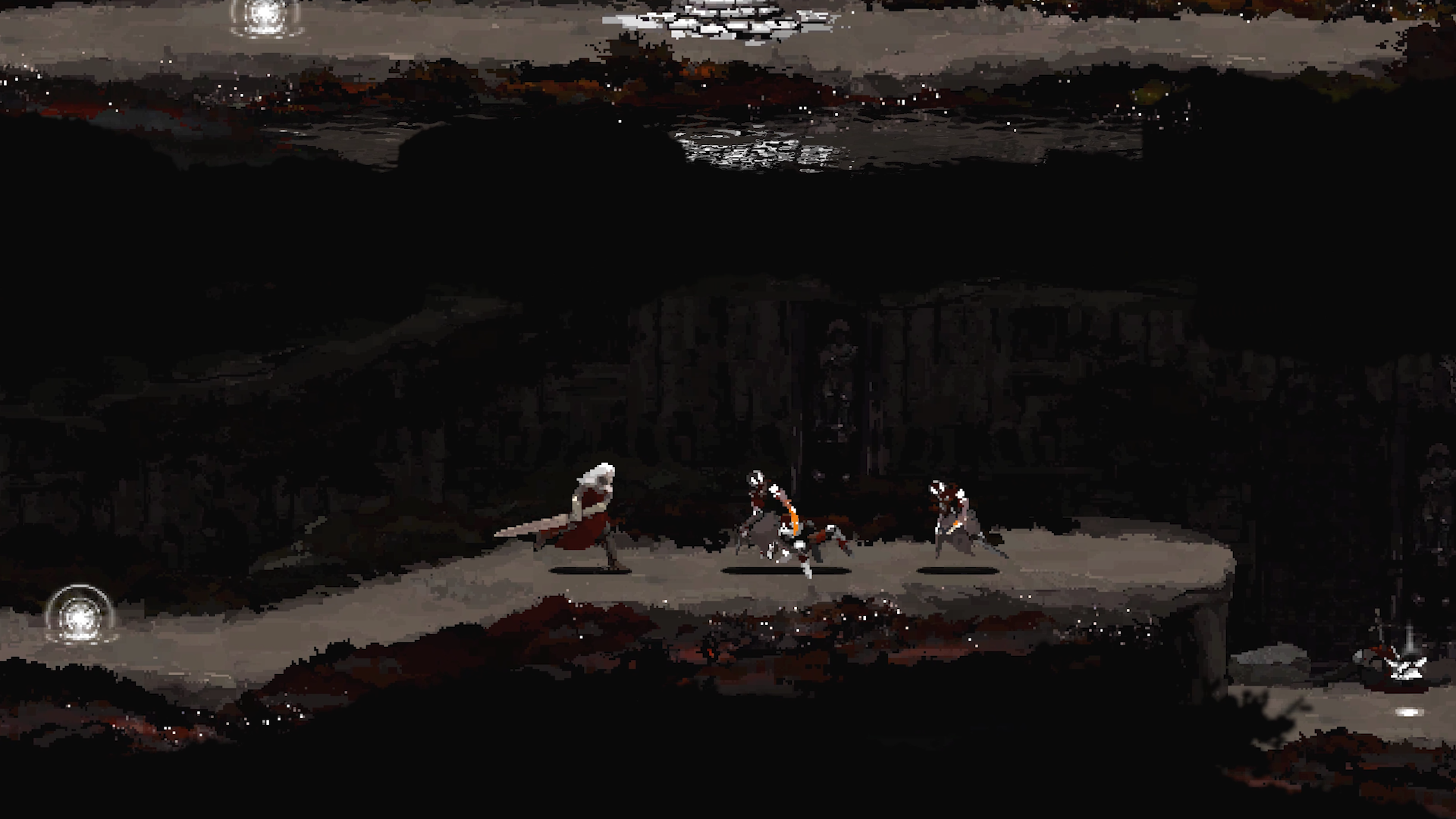
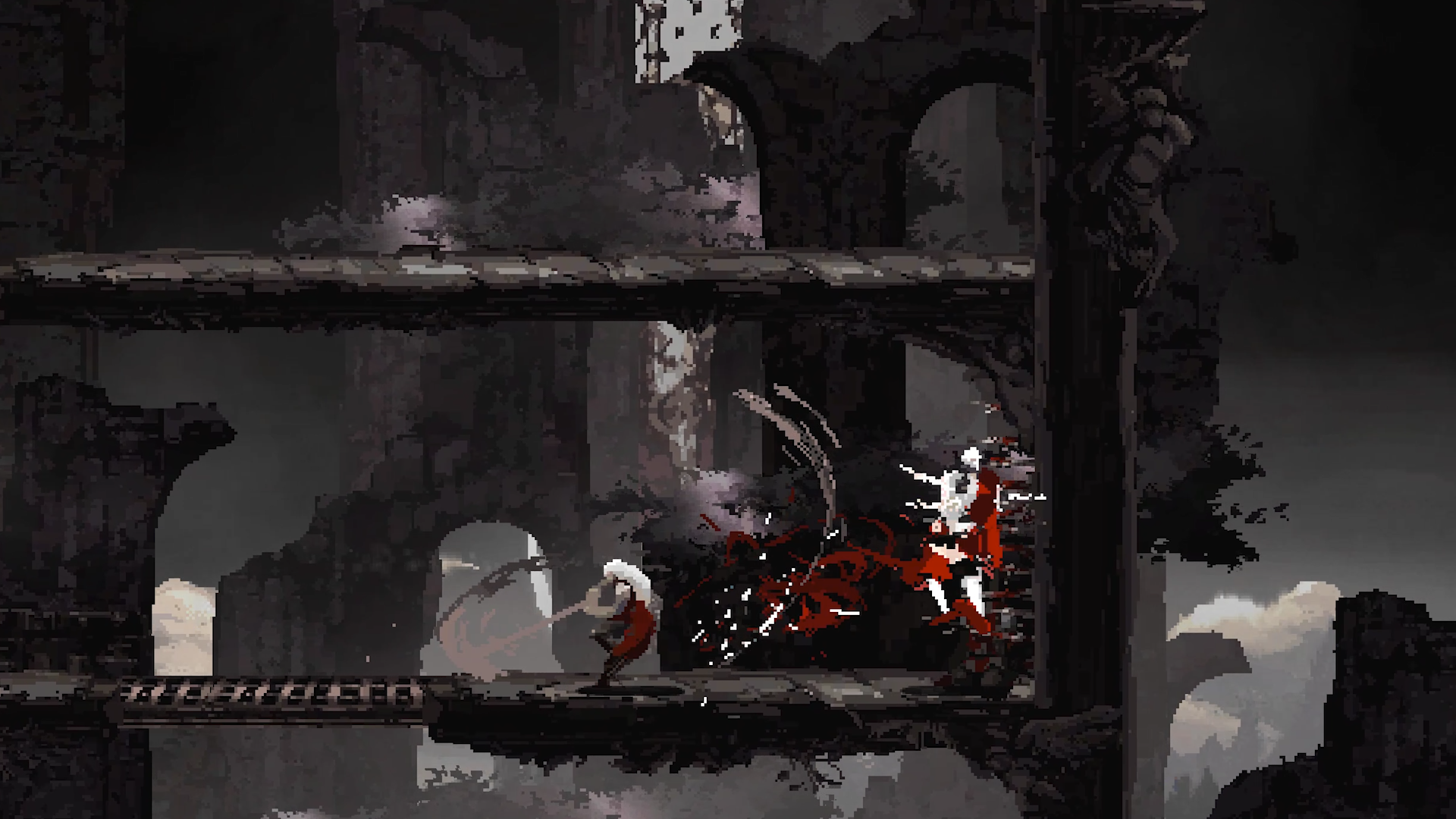
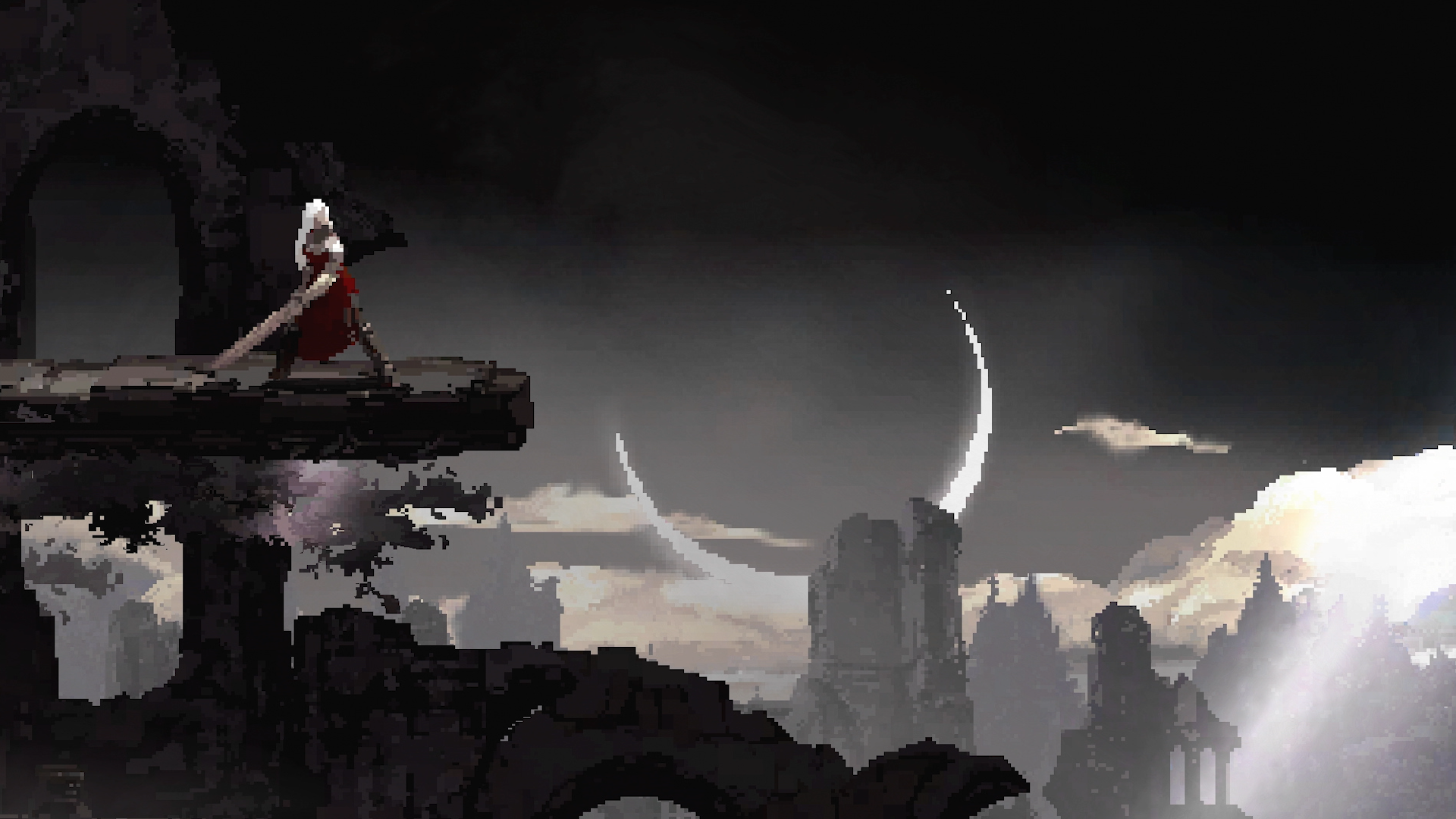



In the interest of full disclosure, VGamingNews was provided with a copy of the game in order to conduct this review.
You Suck at Parking
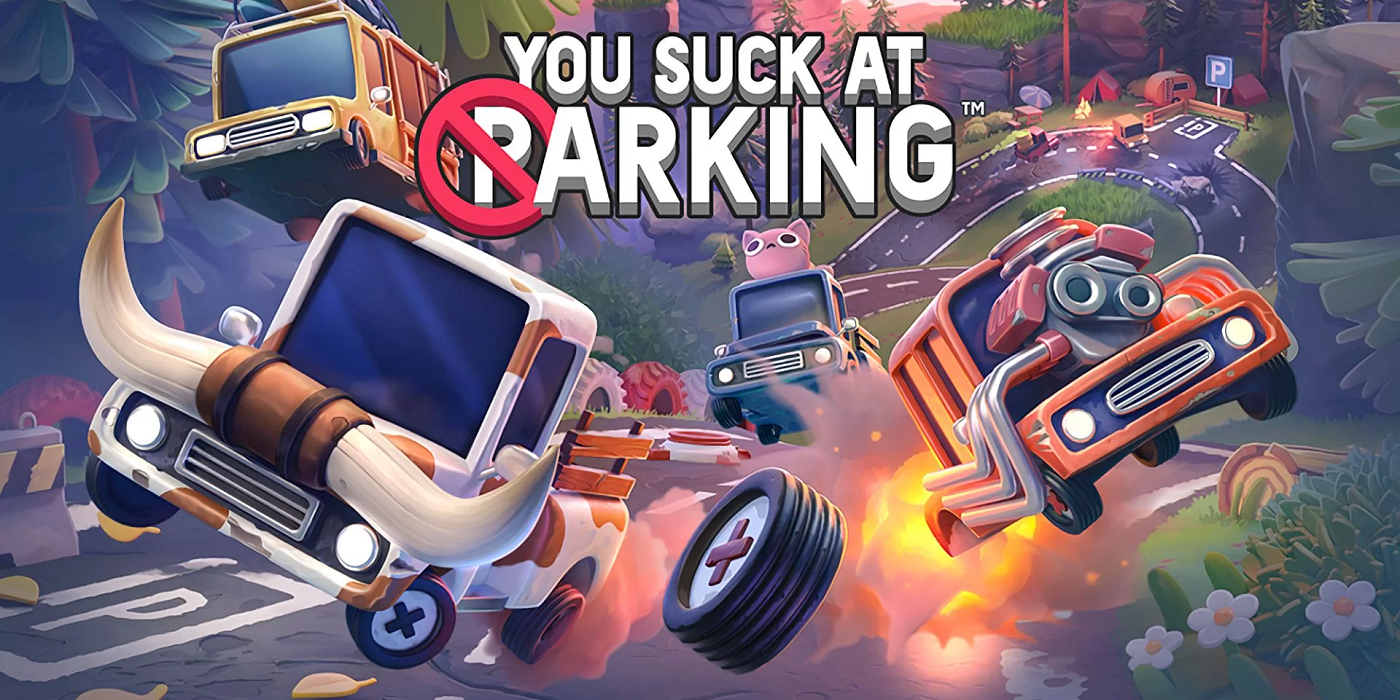

It’s always great when it’s finally time to write up a game we’ve been following for a while, and as Belgian developers Happy Volcano recently put the finishing touches to You Suck at Parking, we were as excited as anybody to give it a whirl! After 18-months of tracking, would this crazy arcade-racer get the checkered flag, or would it sputter off the line and burst into flames?
At A Glance
| Scores | |
| Visuals | 7 /10 |
| Sound | 6 /10 |
| Gameplay | 8 /10 |
| Overall | 7/10 |
| Positives | + Bonkers gameplay that’s highly addictive + Charming and playful visuals + Madcap multiplayer mode |
| Negatives | – Tricky gameplay might frustrate the impatient! – Multiplayer suffers some performance issues – Limited soundtrack gets a little repetitive |
| Price (When Reviewed) | £16.99 |
| Our Playtime | 5 hours 30 mins |
| Available On | PC, PS4, PS5, Switch, Xbox One, Xbox Series X|S |
I got my first hands-on with You Suck at Parking via a demo at Gamescom 2022 and was more than enthused about what I played. This is no dad-simulator parking game though – no – You Suck at Parking is a racing game, where the aim is to come to an accurate stop as quickly as possible. Each of the wacky courses is littered with a number of parking spots, and it’s your objective to successfully steer your little car around the track and stop in each of the spaces before the level timer runs out. Sounds simple? Well, it’s anything but – but that’s what makes it so much fun!
What I failed to mention is that the courses are far from straight forward, and are filled with all manner of obstacles designed to derail your attempts at the perfect park. There’s enormous magnets that pull you off course, gigantic hammers that knock you to Kingdom-Come and energised barriers that cause your car to explode at the slightest touch – and more where those came from. And that’s not to mention the fuel gauge, requiring you to race through the course at breakneck speed, or the fact that you can’t come to a halt prior to the parking spot (because stopping counts as parking) or even put your car into reverse. The concept is frankly hilarious, and after just a few minutes of play you’ll find yourself absolutely hooked.
While You Suck at Parking has a lot of positives, the gameplay is undoubtedly the star of the show. Firing off the start line, barreling around corners and repeatedly blowing up your cars until you get your lines just right is highly addictive. The levels offer varying degrees of challenge, and it’s equally satisfying beating a simple level in a quick time as it is overcoming a really tough one after an inordinate number of attempts. The trial and error and the repetition of each tricky corner builds your muscle memory in the same way a precision-platformer would, and you soon get used to the nuisances of each level and the game as a whole, giving a great sense of achievement as you overcome each stage.

The controls are responsive and clean and allow you to zip around the courses reliably (though hills can cause some problems, as you’ll temporarily leave the ground and lose the ability to turn if you take them on at too much speed). The cars do use ‘tank controls’ though which might cause frowns from some players, but I happen to like the often-maligned steering method and enjoyed zooming around like it was 1991 and playing Micro Machines again. The game speed seems to be just right too – you always feel like you’re teetering on the edge of in command and out of control, and wrangling your little motor after hitting a speed boost is sure to get your adrenaline pumping!
It is worth noting that I consider myself a pretty skilled and patient player, but You Suck at Parking did manage to induce some road rage in me from time to time! The more difficult levels really are difficult, and the precision required could be rage-quit inducing for players struggling to master the finer points. Whilst great fun it’s also unforgiving, so I encourage players to get used to the idea of practising hard if you want to complete the game to a high percentage.

You Suck at Parking completely grabs your attention, with visuals that absolutely pop off the screen. The 3D models are put together in a fun and chunky style, and every inch of the game is splashed in colour to give an incredibly eye-catching look. The sound design does its best to keep up too, with fun motor and horn sounds, all backed by some lovely sedate music to help keep you from exploding with rage, but there isn’t really enough variety and the level themes can get a touch repetitive, especially if you’re tackling a tricky stage.
The game delivers 100 levels spanning two different biomes, and the game challenges you to unlock them all. In order to even play all of the levels, you’ll have to stack up what Happy Volcano calls ‘Perfect Parks’, meaning that you need to fill all of the parking spots in a level without losing a car, requiring a pristine run around the course. Collect enough Perfect Parks and you can unlock cannons to shoot you to a new area, opening up a new slate of levels and even more chaos. The completion of the 100 levels available doesn’t mean the end of the game though, as Happy Volcano will soon be releasing a further biome and even more levels to play, with the potential to keep adding free content as the months roll on.

Once you’ve start/stopped your way through all of the single-player levels, there’s a lot of mileage left in You Suck at Parking via the absolutely bonkers multiplayer mode. Essentially, the gameplay is the same – you’re still blasting around a course at full speed in an attempt to park in every spot, but now you’re competing for pace with up to another seven players who are all driving around at the same time! It is, in a word: bedlam. You’ll be smashing and crashing into one another, making the courses all the more difficult to navigate, but this only works to add to the fun. The objective is to be the fastest to park in every spot, or to be the player who parked in the most spaces when the time runs out if the level is proving too difficult to complete.
There’s a catalogue of 60 multiplayer levels that rotate to keep them fresh, and while the gameplay doesn’t change a whole lot, the entire package is amplified by the addition of more players and the competitive juices that this encourages. I didn’t play a huge amount of the multiplayer, but when I did, I had a whale of a time. The only downside I found with the chaotic multiplayer was that I sometimes experienced some noticeable lag which was more than a little annoying – in a game that needs absolute accuracy and timing, even a jitter of delay can derail your attempt and create some frustration.

Happy Volcano opted to release You Suck at Parking with a Season Pass model, allowing them the opportunity to use the funds from the games sales to continue developing content post release, and there’s plenty planned in the coming months. While there’s some fun aesthetic options available to for all players to unlock, those choosing to pick up the Season 1: Parking Pass (RRP £7.49) get tonnes more unlockables available, with more car types, colour schemes, patterns, exhausts and other silly add-ons for their vehicle that can only be collected once you’ve clambered over the pay wall. There’s an incredible number of themed bundles available to purchase too, should you be so inclined, and like all the best paid optional-DLC, it’s aesthetic only and doesn’t provide any other benefits in single- or multiplayer.
You Suck at Parking is a breakneck romp that manages to balance tricky gameplay with hilarity and good fun, resulting in a wonderful all around experience. It’s bright and vibrant, with an adorable visual style that fits the gameplay style to a tee, and while the limited audio tracks aren’t quite as engaging, that’s probably a nit-pick. With 100 levels ‘out of the box’ and many more to come for those willing to pay for the Season Pass, there’s a tonne of enjoyment to be had – especially with a manic, if a little laggy, multiplayer mode available too. Perfectionists and speedrunners will have a field day, but a word of warning to those players short on patience – this might not be the game for you!
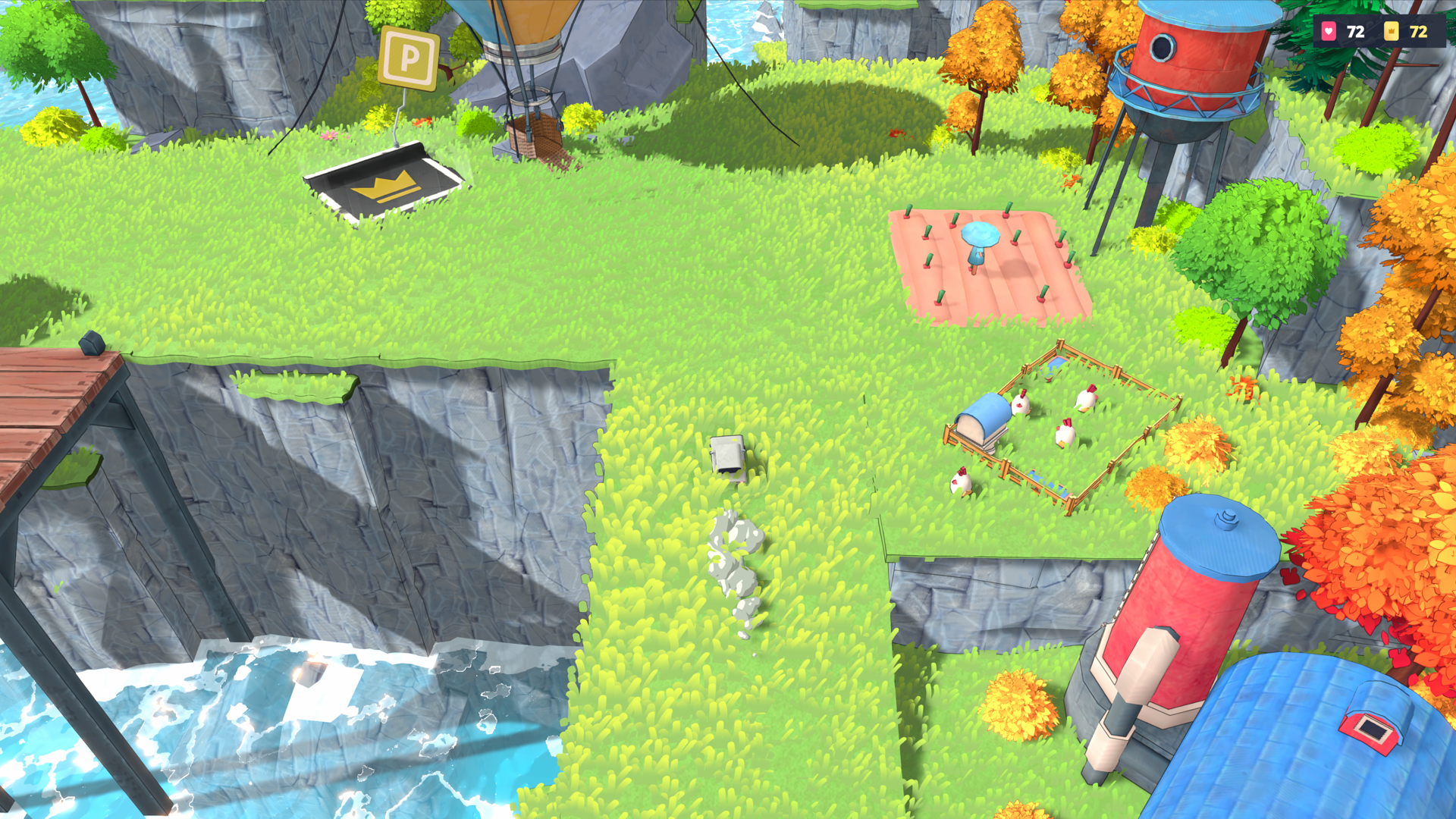
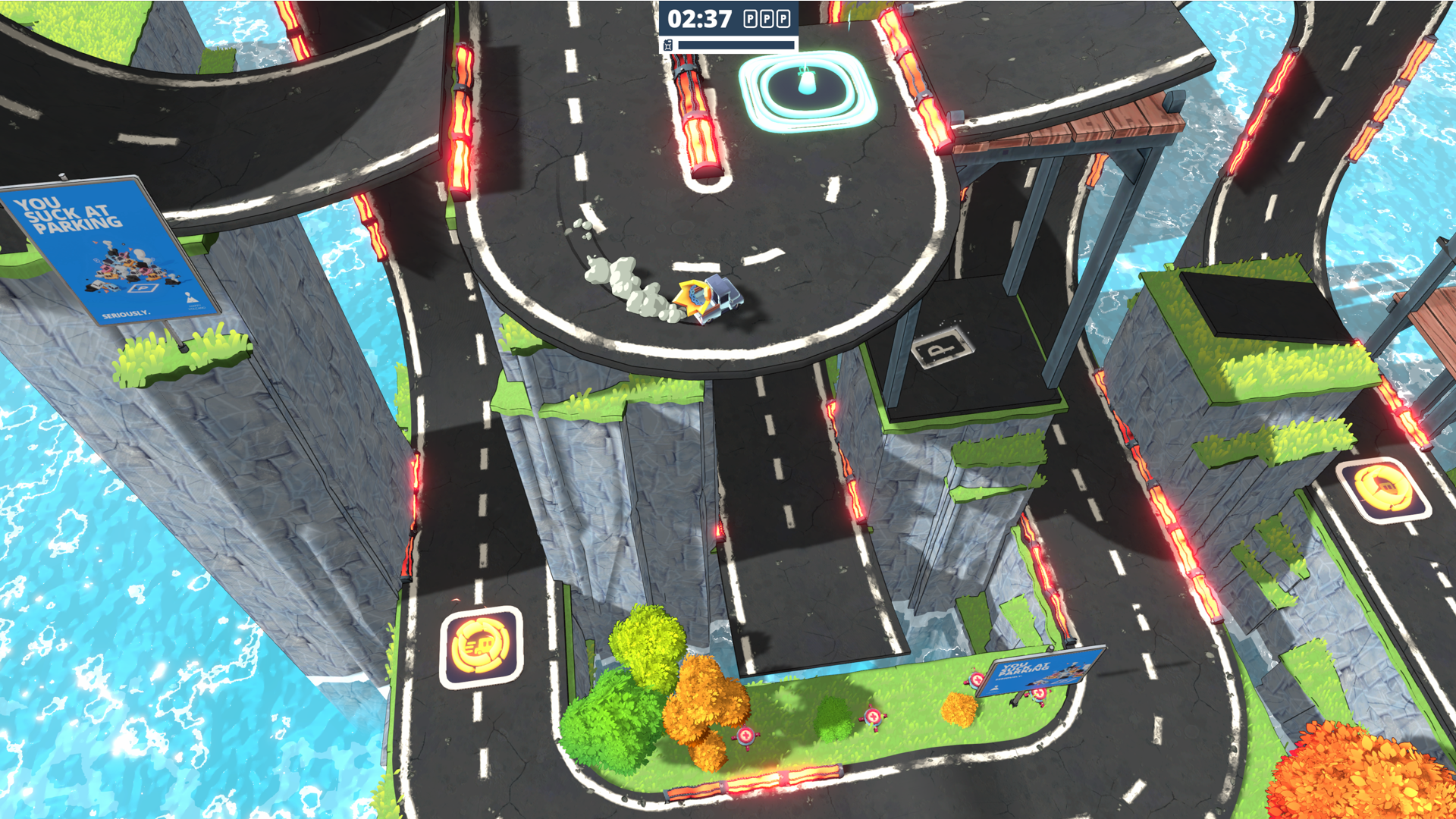
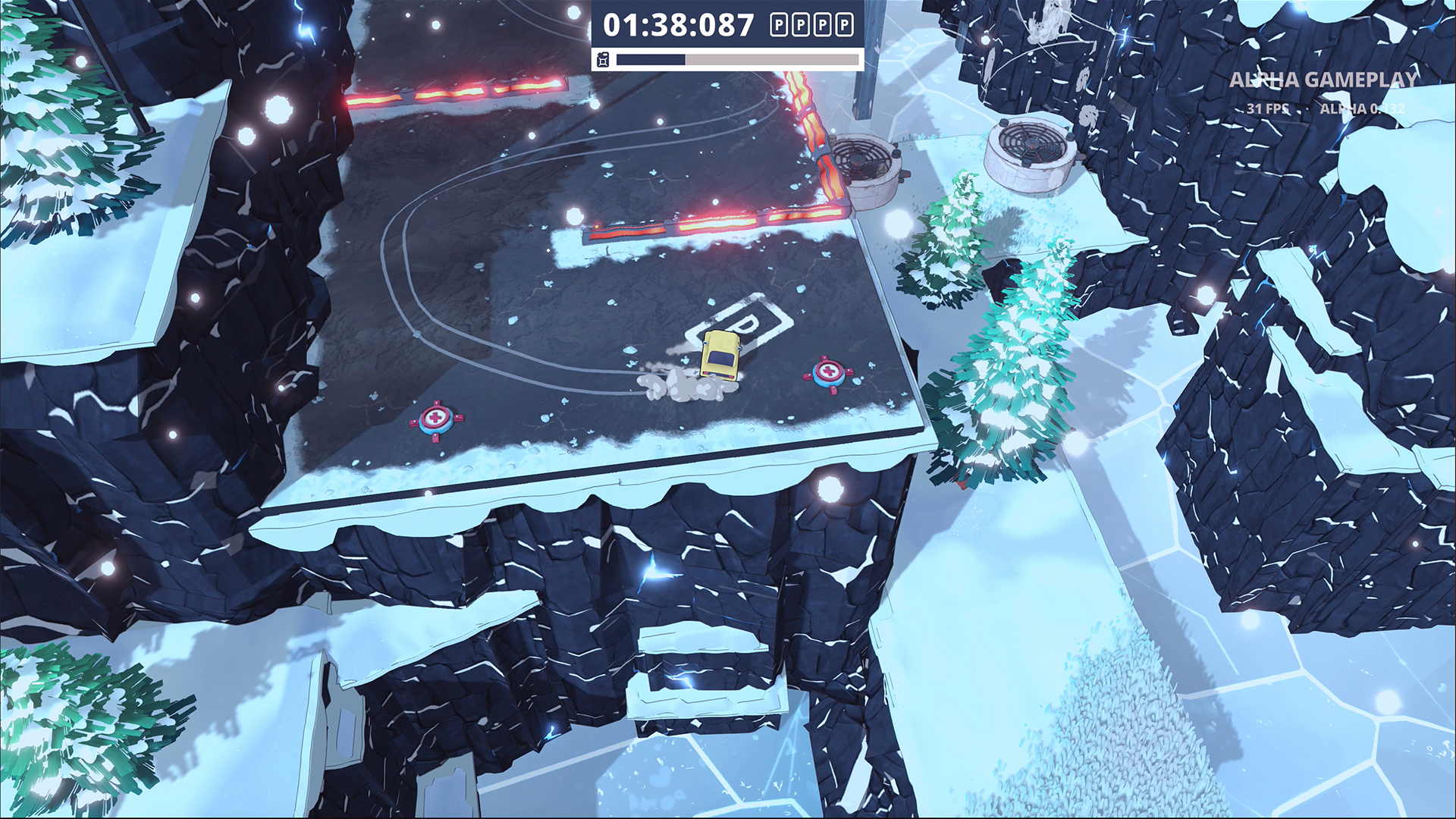
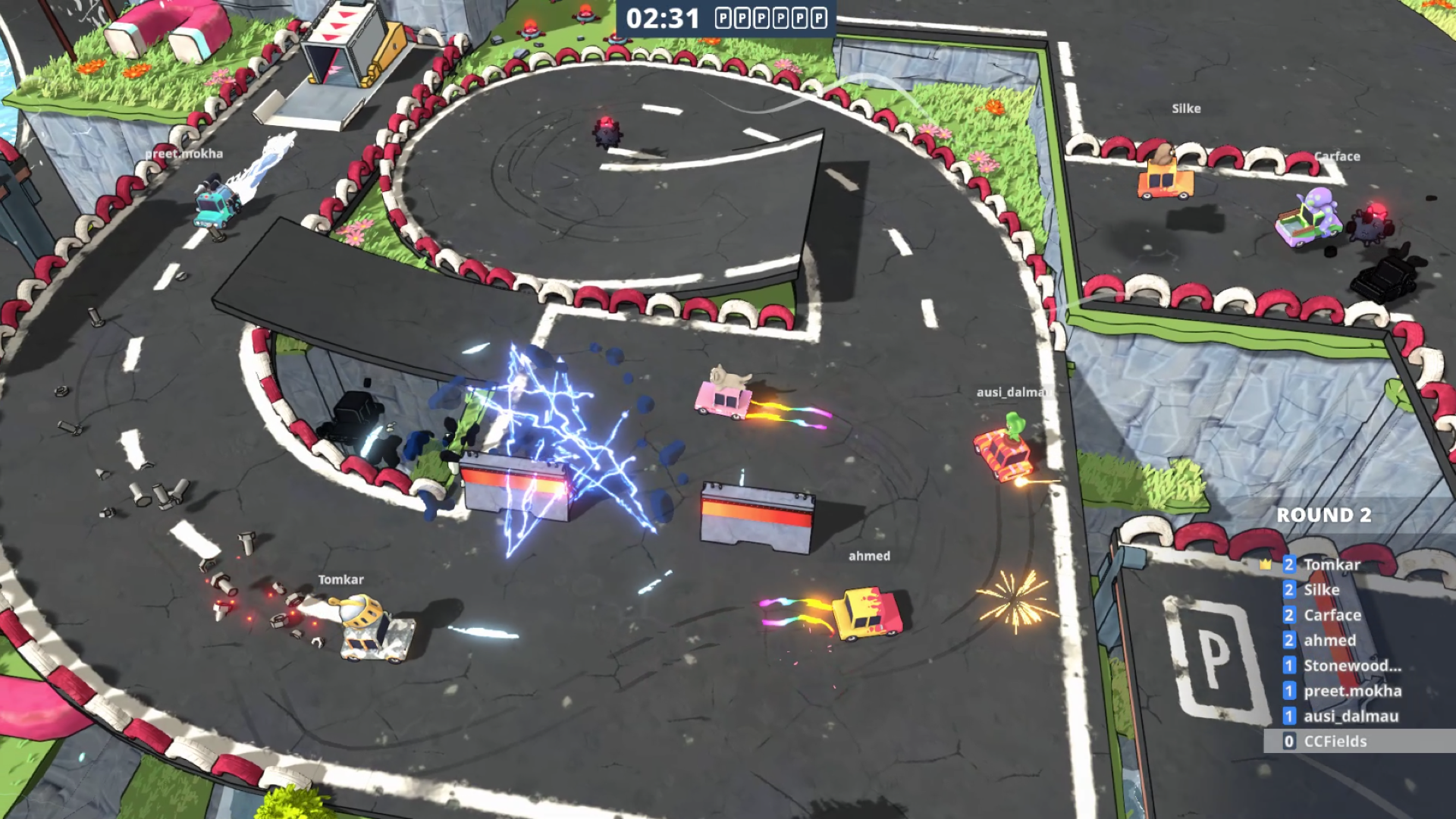
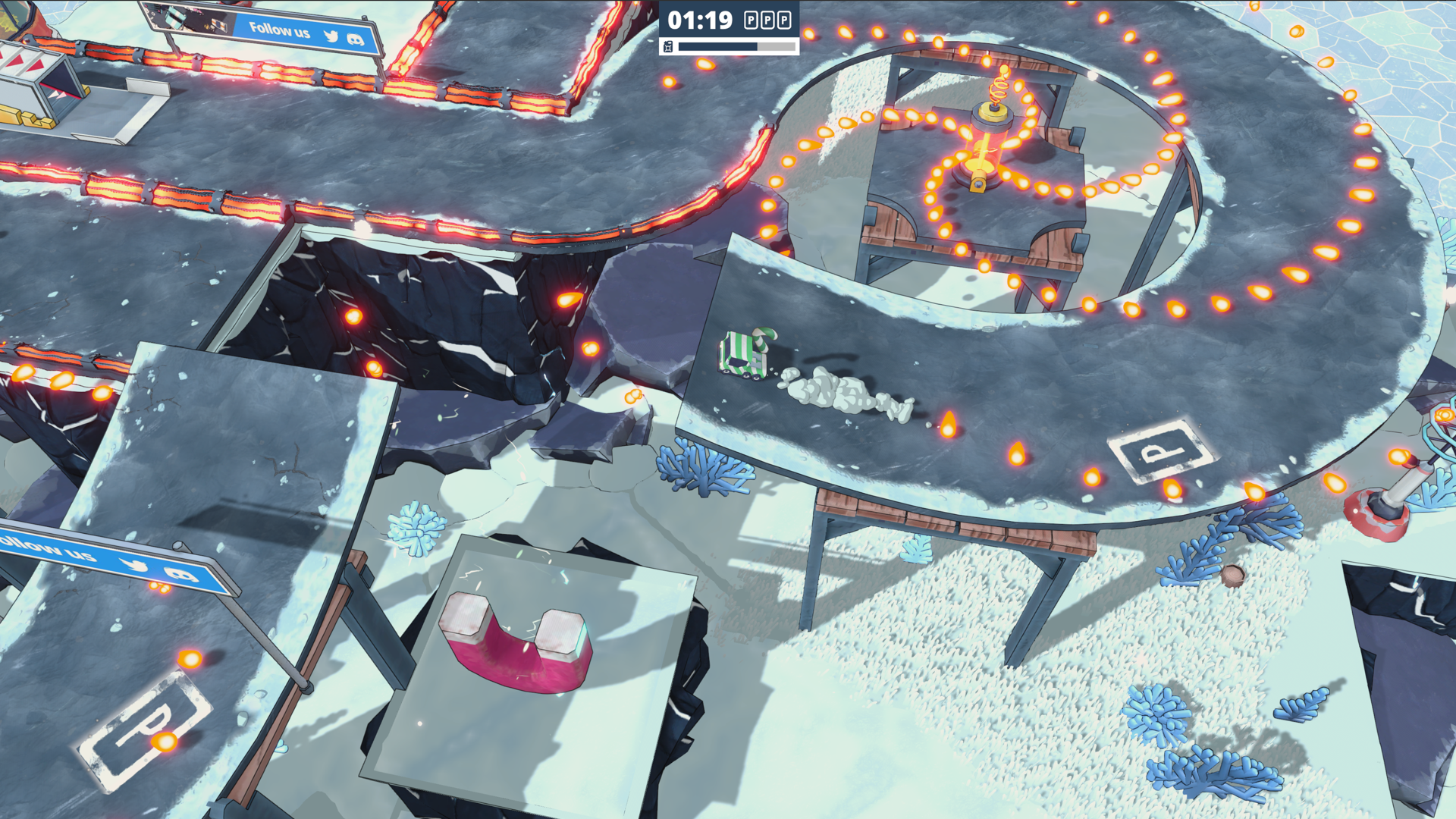
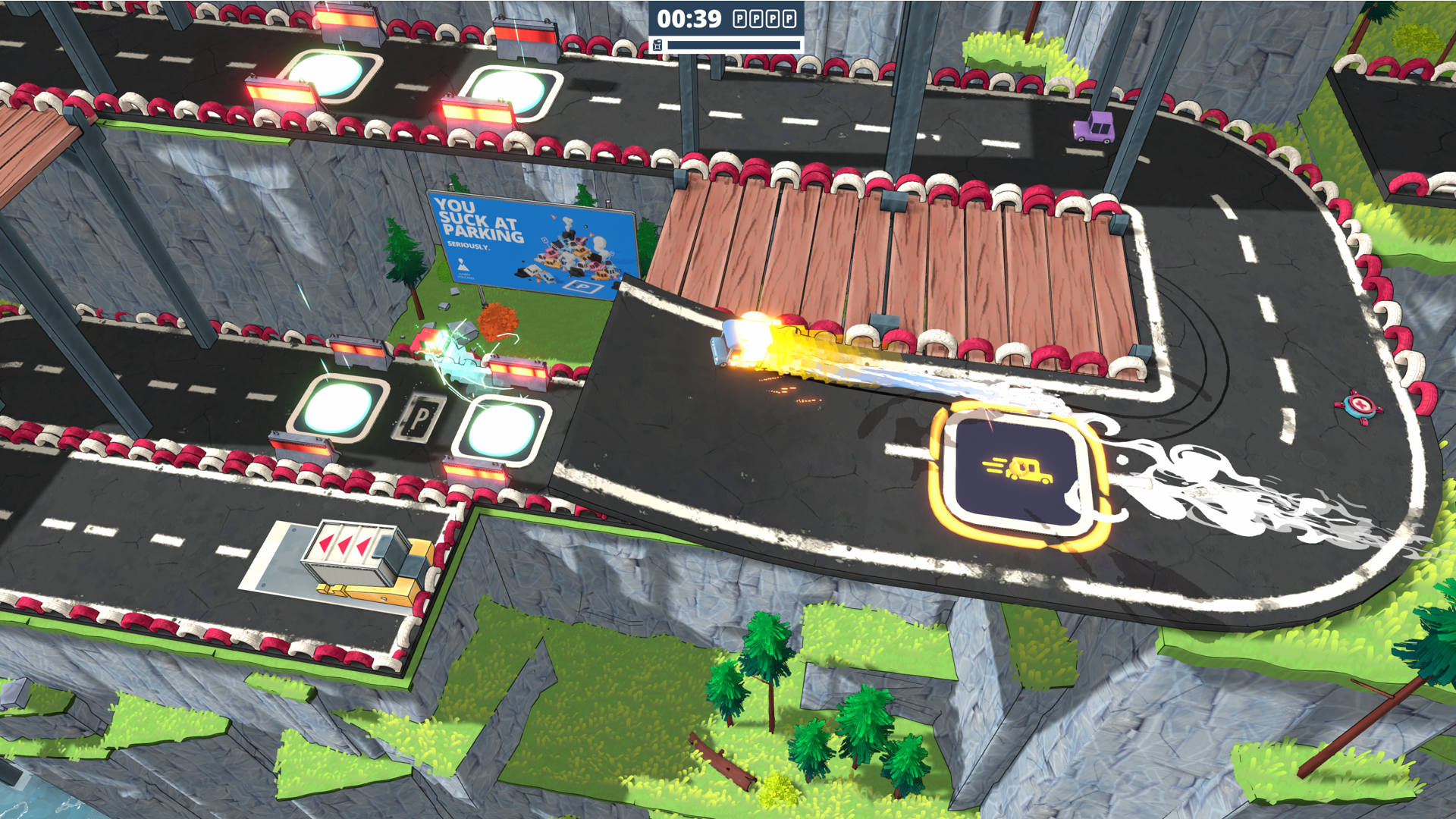
In the interest of full disclosure, VGamingNews was provided with a copy of the game in order to conduct this review.
Triple Take
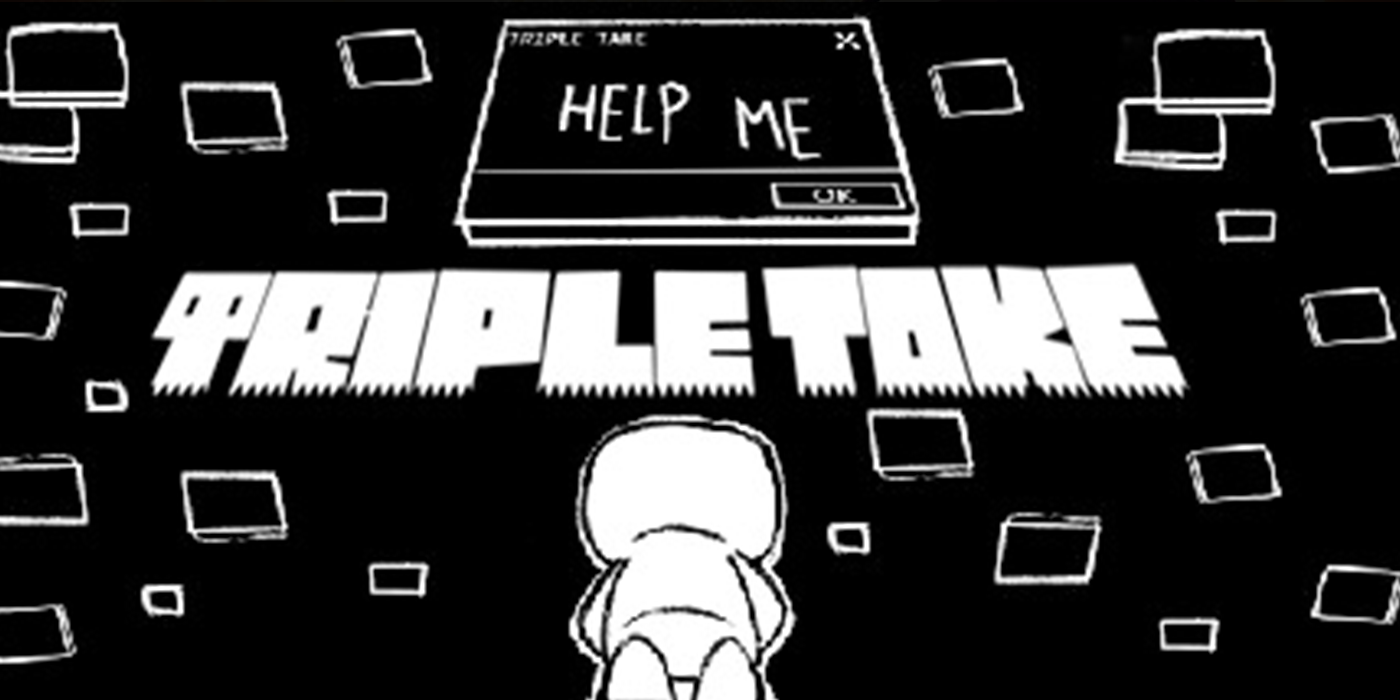

Platform games are absolutely my jam. My early introduction to video games was littered with them; Fantasy World Dizzy, Alex Kidd in Miracle World, Sonic the Hedgehog, Super Mario World – the list goes on and on. My love of the genre has only grown as I’ve gotten older too, with challenging ‘precision’ platformers like Super Meat Boy and Celeste now ranking as some of my favourite games of all time. So when indie developers FlyAway launched Triple Take, their newest entry to the precision platform genre, I just had to try it out for myself!
At A Glance
| Scores | |
| Visuals | 3 /10 |
| Sound | 6 /10 |
| Gameplay | 5 /10 |
| Overall | 6 /10 |
| Positives | + Compelling story + Incredible fourth wall breaking moments + Fun characters and script |
| Negatives | – Mechanics can be inconsistent – Not especially challenging – Limits itself to a PC release |
| Price (When Reviewed) | £5.19 |
| Our Playtime | 5 hours 20 mins |
| Available On | PC |
Triple Take is a precision platformer that styles itself on the 8-bit games of yesteryear, with two-tone graphics and a chiptune soundtrack that threw me all the way back to my time playing on my sister’s ZX Spectrum in the ‘80s. You take on the role of a character known only as ‘Player’ and must navigate your way through five worlds filled with hazardous environments, slowly unravelling a mystery surrounding yourself and the game as a whole.
The gameplay in Triple Take is pretty standard precision platformer fare; you have to run, bounce and wall-jump your way through mazes filled with spikes, baddies and all manner of projectiles on your way to the goal. The core premise is that each level must be completed three separate times and that aspects of the level change with each attempt to steadily increase the difficulty. In some cases this might mean a selection of blocks are removed from over a spike pit so that it requires a more accurate jump, walls being deleted to allow enemies to harass you as you try to pass, or your route being blocked off entirely, asking you to navigate a whole new path.
The play style seems to morph in the same way that the levels do, and it’s clear that FlyAway have taken inspiration from all manner of games when putting Triple Take together. Each world seemingly leans into a different game with a slightly differing style, and this really helps to keep things fresh. From the speed-running and wall-jumping of Super Meat Boy, to the over/under rope climbing of Donkey Kong Country and references to old-school shmups and even Pong, Triple Take pays homage to influential games of the past while assimilating them into something of its own. The boss battles especially deserve praise, and aside from some overly sensitive controls in the shoot ‘em up boss, all of them are marvellous.

Stylistically, Triple Take won’t be for everyone, but I really like the choices that FlyAway have made in this regard. Growing up in an age when video games were mostly being made by one-man teams in their basements, the super retro-inspired visuals and sound not only give a thoroughly nostalgic feel, but actually link with the theme and story of the game incredibly well. No, the blocky sprites and single-colour-on-black palette isn’t especially attractive, but it helps tell the tale and that’s ultimately more important, in my opinion.
One gripe from the get-go was a lack of consistency in some of the games key traversal mechanics. I found myself skidding off trampolines or bombing wall-jumps too often for my tastes, and it felt like the physics had a slightly greasy, slippery feel overall. A good precision platformer gives the player absolute faith in its controls and its physics – you need to know that the character will behave in exactly the same way each time you flick the control stick one way or smash a button at the certain time, and Triple Take is a little shaky in this area at the moment.

I had mixed feelings on the core mechanic too; on one hand I was impressed that the levels didn’t feel repetitive despite playing each of them multiple times, but on the other I thought that some of the level designs had been changed so drastically between attempts that they weren’t really the same level at all. The levels certainly all work just fine and playing each in triplicate definitely helps to extend the play time – I’m just not entirely convinced that it was the right feature to build the game around because it never really feels like the focus whilst you’re playing.
One thing that I am convinced about is how successfully the intriguing storyline is delivered, which I’ll readily admit came as a complete surprise. The game opens in typically fluffy style, with a very loose story being delivered by a cohort of playful characters as a mechanic to simply drive the levels forward. The script starts a little silly but is lots of fun – the trio of goofy sidemen you meet inside the game, Flux, Trine and Venet are perfect, and it’s a joy to watch them play off one another throughout. But it’s not long before a fourth character is introduced and things begin to take on a more sinister feel – it’s at this point that I could feel myself becoming more invested in the story that was unfolding, and feel how impressively Triple Take was quite literally bringing me into the game.

Without wanting to give away too many spoilers, Triple Take actually makes you, the player in the chair and holding the controller, a focus of the story – sure, you have a pixel art avatar that you steer on screen, but they’re merely a digital extension of you inside the game. The characters (or at least one of them) speaks directly to you through the screen, and asks you to perform actions outside of the confines of the games .exe window in order to progress the story. The game itself begins to betray you, and navigating your character through spiky mazes is made more tricky by explicit attempts by the game to cease your progression, and it raises the stakes for you as a player to overcome the trickery of this terrible machine.
I could not have felt more involved with the story and applaud FlyAway for the incredible job they have done in making Triple Take such an immersive experience – so much so in fact, that at one point I intentionally disconnected my machine from the internet lest something a character said come true! What at first seems like a bug in the game quickly builds into a full blown storytelling device and gameplay mechanic, and I knew immediately that this was a game I’d be completing in one sitting because putting it down was, quite simply, not an option.

The only downside to these immersive, fourth-wall breaking, in-the-real-world mechanics is that they will almost certainly limit Triple Take to a PC audience, as some of the aspects would be very hard to replicate on console, and that’s a crying shame because the story deserves the widest audience it can get.
Triple Take is a new school precision platformer with an old school vibe; fans of the 8-bit era will feel right at home with the blocky sprites, simple colour schemes and fun (but limited) soundtrack. There’s enough variety in the levels to keep you interested, though it does undermine the premise a little, and the physics aren’t as tight as I would personally ask for, but boy, does it deliver on storytelling. The plot of Triple Take carries so much more water than I expected from a platformer, and the immersive, fourth-wall breaking ride is an absolute treat. Whilst not without its flaws, I encourage platform fans to give Triple Take a go – it’s an experience that you’ll not forget quickly.
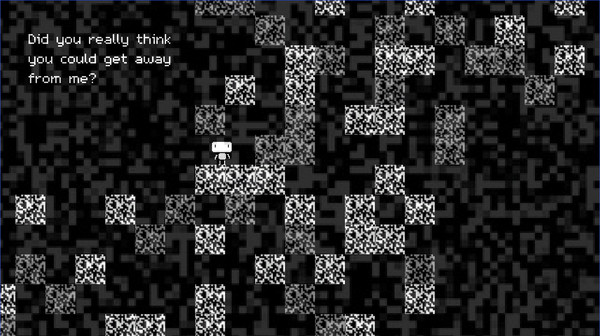
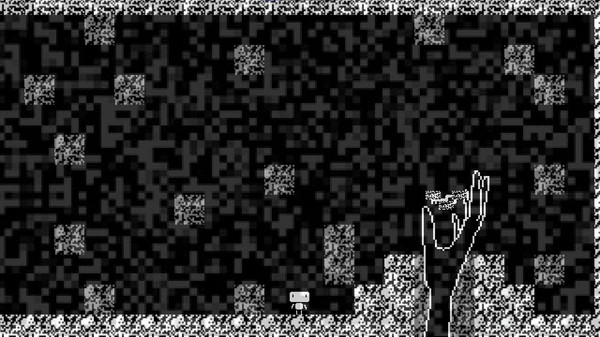
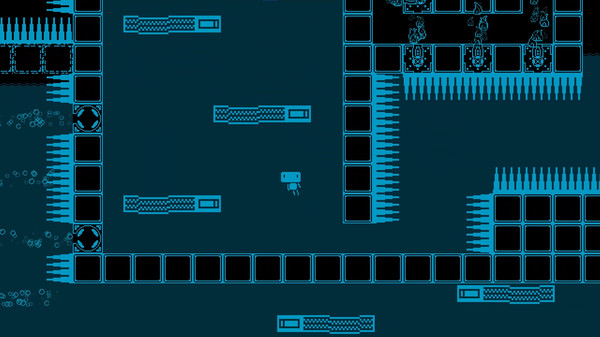
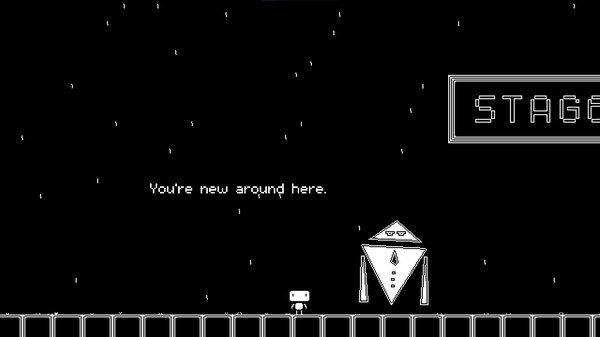
In the interest of full disclosure, VGamingNews was provided with a copy of the game in order to conduct this review.






